- Panelist area
- Become a panelist

Market research questionnaire: examples and complete guide
How to make a market research questionnaire? What questions to ask? When you do market research, the questionnaire is a must. So much so that questionnaires and market research are often used interchangeably . However, it is only one step in a complete process that allows you to get closer to the truth of the market. In this article, we address all these issues and propose complete examples in B2B and B2C to download .
For more real-life examples, we refer you to the website etude-de-marche.online , where we list and comment on the questionnaires we find online. You can also find our guide to writing your questionnaire here .
All about the market research questionnaire in 30 seconds
- The questionnaire is a market research technique . It aims to obtain a quantitative assessment that complements the qualitative view offered by techniques such as individual interviews or focus groups.
- Questionnaire and market research are too often considered interchangeable terms. It is essential to understand that we must combine several techniques to approach the reality of a market. The administration time for a questionnaire should not exceed 10 minutes . This corresponds to about 25 questions.
- The questionnaire is divided into 3 distinct parts : 1) the introduction, 2) the questions specific to the market research, and 3) the collection of information on the respondent’s profile
- 5 questions are recurrent in any market research questionnaire: screening questions, buying habits, needs, buying intentions, and pricing.
- A B2C market research questionnaire will differ from its B2B counterpart. The latter will focus more on competitive aspects, the decision cycle, and the price currently paid by the company.
What is the place of the questionnaire in global market research?
Duration and number of questions not to exceed, the 3 parts of a market research questionnaire, how to adapt your questionnaire for b2b market research.
- Example of B2C market research questionnaire
- Example of B2B market research questionnaire
Download other examples of market research questionnaires
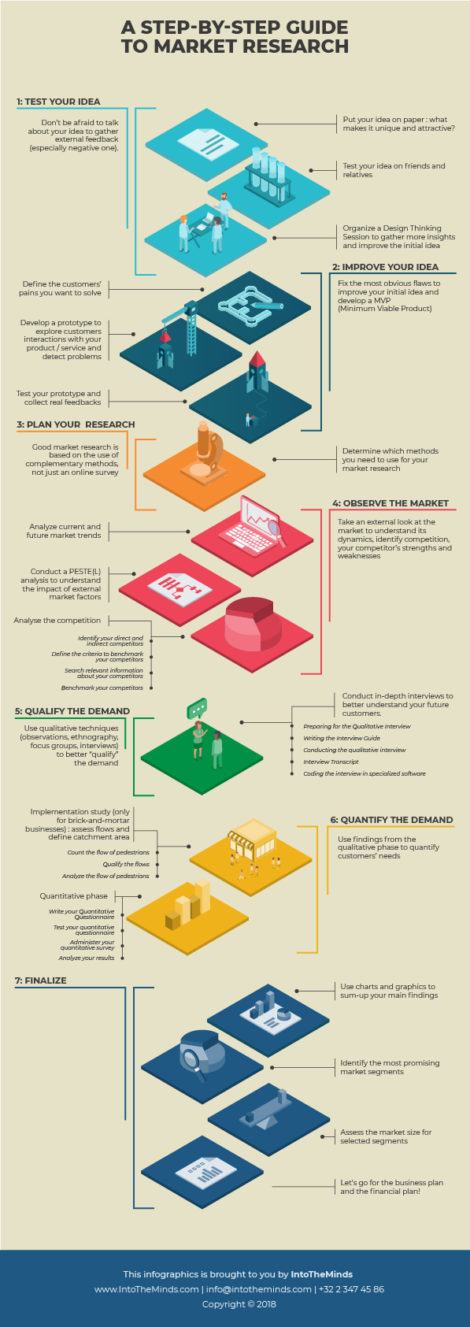
Understanding a market involves approaching it from several angles. Classically, market research is done in 3 phases :
- desk research (or documentary research)
- qualitative research
- quantitative research (via questionnaire)
To know more about the market research process, visit our free online guide . You can browse the right infographic, representing the global method we have conceptualized. The questionnaire section is #6.
Most questionnaires are now administered in the form of online surveys. As far as our market research firm is concerned, we have to admit that it has been a long time since a customer asked us to conduct a face-to-face administration (on the street, for example) or by post.
We advise our customers never to exceed 10 minutes and 25-30 questions . This avoids problems such as:
- Attrition : Respondents give up along the way when the questionnaire is too long.
- Fatigue : questionnaires that are too long will tire respondents, who tend to be more distracted and answer poorly. The quality of the answers will be inferior, and your results will be less reliable at the end of the questionnaire.
Two examples to download are waiting for you at the end of this article.
Questionnaire and market research are too often considered interchangeable terms.
In this paragraph, we propose to go through the ideal structure of a market research questionnaire:
- Introductory text
- Recurring themes
- Respondent profile
Part 1: The introductory text
Your questionnaire can start with a short introduction presenting the purpose of the market research. It should not be too long but clear enough for the respondent to understand:
- what do you want to ask them about
- what they will gain from it
- how much time will it take
- what will be done with their data (on this subject, consider reading this article on the problems posed by the cloud act in market research questionnaires )
Part 2: questions specific to the market research
In B2C and B2B, some themes are almost always present in all market research questionnaires. There are 5 of them:
- screening of the respondent
- buying habits
- purchase intention
As you can see, these questions follow a certain logic. You will first check that the respondent has the right profile to answer (screening), then ask them about their buying habits (the current situation) before moving on.
We propose the following table to give you an overview.
| Type of question | Objective | Recommended number of questions | Point of interest | |
| 1 | Screening | Check that the respondent has the right profile | 1-3 | Avoid overly intrusive questions. Use only factual questions. |
| 2 | Buying habits | Understand the current habits and the solutions used to satisfy the respondent’s needs and possibly obtain information on known competitors. | 5 | Don’t get lost in the details. Focus on the most important aspects of the respondent’s habits, those that will impact you. |
| 3 | Needs | Projecting into the sources of dissatisfaction and perceived needs (pains). | 4-8 | This part is very important because it allows you to collect essential information that you can use to improve your product/service. |
| 4 | Buying intentions | Test the respondent’s interest in your product/service | 2-4 | The control variables will allow you to create customer segments based on their interest. Your go-to-market strategy can then be based on them. |
| 5 | Pricing | Find the ideal pricing or test the respondent’s interest at several price levels | 2-4 | Testing pricing is a very delicate exercise. Many biases can taint your results. Avoid testing several price levels with the same respondent. Prefer a “ ” design. |
Part 3: Questions about the respondent’s profile
You will finish your questionnaire by asking questions about the respondent’s profile. Age, sector of activity, gender, etc., are all variables that will allow you to cross-reference the results and better segment your target population. Here is a non-exhaustive list of the control variables we use most often in our research.
B2B (for products or services sold to companies):
- company size
- sector of activity
- hierarchical position of the respondent
- geographical location (postal code, region, country)
B2C (for products or services sold to individuals)
- family status
- level of research
- household income
In a B2B context, a market research questionnaire must undergo certain adaptations.
These concern, of course, the questions on the respondent’s profile . Demographic aspects are little important in B2B. However, the hierarchical position, the company’s size, and its sector of activity must be recorded.
Above all, the questions asked will be different. You will probably have to ask more questions to determine the company’s current practices and gather information on the competition. In this respect, B2B market research will also be interested in the price currently paid by the company if it already has a competing solution. In a B2C context, this price aspect may be less important, especially if it is a regular purchase. Do you remember the price of everything you buy in the supermarket as a consumer?
In the B2B context, you will also have to put more emphasis on decision-making . In B2C, the consumer decides alone most of the time. In B2B, this is never the case because there are procedures to follow within any company.
Example of a B2C market research questionnaire
The questionnaire below concerns research on car purchases by individuals. It is, therefore, B2C market research. It includes 26 questions. You can find the internal instructions (in blue) that we put to check that the programming of our questionnaire is correct.
Example of a B2B market research questionnaire
The questionnaire you will find below concerns research on hygiene in companies. It is therefore intended for a professional audience. You will note that we have provided an explanatory text (in blue) for some questions. This is a good practice when the question is complicated or needs to be contextualized.
Many examples of market research questionnaires are available on our dedicated website, www.etude-de-marche.online . You can find the complete questionnaire, all the questions, and our explanations and reviews in the video.
- Market research methodology
Post your opinion
Your email address will not be published. Required fields are marked *
Save my name, email, and website in this browser for the next time I comment.
Don't forget to check your spam folder .
You didn't receive the link?
Pour offrir les meilleures expériences, nous utilisons des technologies telles que les cookies pour stocker et/ou accéder aux informations des appareils. Le fait de consentir à ces technologies nous permettra de traiter des données telles que le comportement de navigation ou les ID uniques sur ce site. Le fait de ne pas consentir ou de retirer son consentement peut avoir un effet négatif sur certaines caractéristiques et fonctions.
Business growth
Marketing tips
How to conduct your own market research survey (with example)

After watching a few of those sketches, you can imagine why real-life focus groups tend to be pretty small. Even without any over-the-top personalities involved, it's easy for these groups to go off the rails.
So what happens when you want to collect market research at a larger scale? That's where the market research survey comes in. Market surveys allow you to get just as much valuable information as an in-person interview, without the burden of herding hundreds of rowdy Eagles fans through a product test.
Table of contents:
What is a market research survey?
Market surveys are what's known as "primary research"—that is, information that the researching company gathers firsthand. Secondary research consists of data that another organization gathered and published, which other researchers can then use for their own reports. Primary research is more expensive and time-intensive than secondary research, which is why you should only use market research surveys to obtain information that you can't get anywhere else.
A market research survey can collect information on your target customers':
Experiences
Preferences, desires, and needs
Values and motivations
The types of information that can usually be found in a secondary source, and therefore aren't good candidates for a market survey, include your target customers':
Demographic data
Consumer spending data
Household size
Why conduct market research?
Here are some examples of how market research surveys can be used to fill a wide range of knowledge gaps for companies:
A B2B software company asks real users in its industry about Kanban board usage to help prioritize their project view change rollout.
A B2C software company asks its target demographic about their mobile browsing habits to help them find features to incorporate into their forthcoming mobile app.
A printing company asks its target demographic about fabric preferences to gauge interest in a premium material option for their apparel lines.
A wholesale food vendor surveys regional restaurant owners to find ideas for seasonal products to offer.
Primary vs. secondary market research
Market surveys are what's known as "primary research"—that is, information that the researching company gathers firsthand. Secondary research consists of data that another organization gathered and published, which other researchers can then use for their own reports.
Primary research is more expensive and time-intensive than secondary research, which is why you should only use market research surveys to obtain information that you can't get anywhere else.
If you've exhausted your secondary research options and still have unanswered questions, it's time to start thinking about conducting a market research survey.
6 types of market research survey
Depending on your goal, you'll need different types of market research. Here are six types of market research surveys.
1. Buyer persona research
A buyer persona research survey will help you learn more about things like demographics, household makeup, income and education levels, and lifestyle markers. The more you learn about your existing customers, the more specific you can get in targeting potential customers. You may find that there are more buyer personas within your user base than the ones that you've been targeting.
2. Sales funnel research
With a sales funnel research survey, you can learn about potential customers' main drivers at different stages of the sales funnel. You can also get feedback on how effective different sales strategies are. Use this survey to find out:
How close potential buyers are to making a purchase
What tools and experiences have been most effective in moving prospective customers closer to conversion
3. Customer loyalty research
The demographics of your most loyal customers
What tools are most effective in turning customers into advocates
What you can do to encourage more brand loyalty
4. Branding and marketing research
The Charmin focus group featured in that SNL sketch is an example of branding and marketing research, in which a company looks for feedback on a particular advertising angle to get a sense of whether it will be effective before the company spends money on running the ad at scale. Use this type of survey to find out:
Whether a new advertising angle will do well with existing customers
Whether a campaign will do well with a new customer segment you haven't targeted yet
What types of campaign angles do well with a particular demographic
5. New products or features research
What features they wish your product currently had
What they think of a particular product or feature idea
6. Competitor research
Whether your competitors have found success with a buyer persona you're not targeting
Information about buyers for a product that's similar to one you're thinking about launching
Feedback on what features your competitors' customers wish their version of a product had
How to write and conduct a market research survey
Once you've narrowed down your survey's objectives, you can move forward with designing and running your survey.
Step 1: Write your survey questions
A poorly worded survey, or a survey that uses the wrong question format, can render all of your data moot. If you write a question that results in most respondents answering "none of the above," you haven't learned much.
Categorical questions
Also known as a nominal question, this question type provides numbers and percentages for easy visualization, like "35% said ABC." It works great for bar graphs and pie charts, but you can't take averages or test correlations with nominal-level data.
Multiple choice: Use this type of question if you need more nuance than a Yes/No answer gives. You can add as many answers as you want, and your respondents can pick only one answer to the question.
Checkbox: Checkbox questions add the flexibility to select all the answers that apply. Add as many answers as you want, and respondents aren't limited to just one.

Ordinal questions
This type of question requires survey-takers to pick from options presented in a specific order, like "income of $0-$25K, $26K-$40K, $41K+." Like nominal questions, ordinal questions elicit responses that allow you to analyze counts and percentages, though you can't calculate averages or assess correlations with ordinal-level data.
Dropdown: Responses to ordinal questions can be presented as a dropdown, from which survey-takers can only make one selection. You could use this question type to gather demographic data, like the respondent's country or state of residence.
Ranking: This is a unique question type that allows respondents to arrange a list of answers in their preferred order, providing feedback on each option in the process.
Interval/ratio questions
For precise data and advanced analysis, use interval or ratio questions. These can help you calculate more advanced analytics, like averages, test correlations, and run regression models. Interval questions commonly use scales of 1-5 or 1-7, like "Strongly disagree" to "Strongly agree." Ratio questions have a true zero and often ask for numerical inputs (like "How many cups of coffee do you drink per day? ____").
Ranking scale: A ranking scale presents answer choices along an ordered value-based sequence, either using numbers, a like/love scale, a never/always scale, or some other ratio interval. It gives more insight into people's thoughts than a Yes/No question.
Matrix: Have a lot of interval questions to ask? You can put a number of questions in a list and use the same scale for all of them. It simplifies gathering data about a lot of similar items at once.
Example : How much do you like the following: oranges, apples, grapes? Hate/Dislike/Ok/Like/Love
Textbox: A textbox question is needed for collecting direct feedback or personal data like names. There will be a blank space where the respondent can enter their answer to your question on their own.
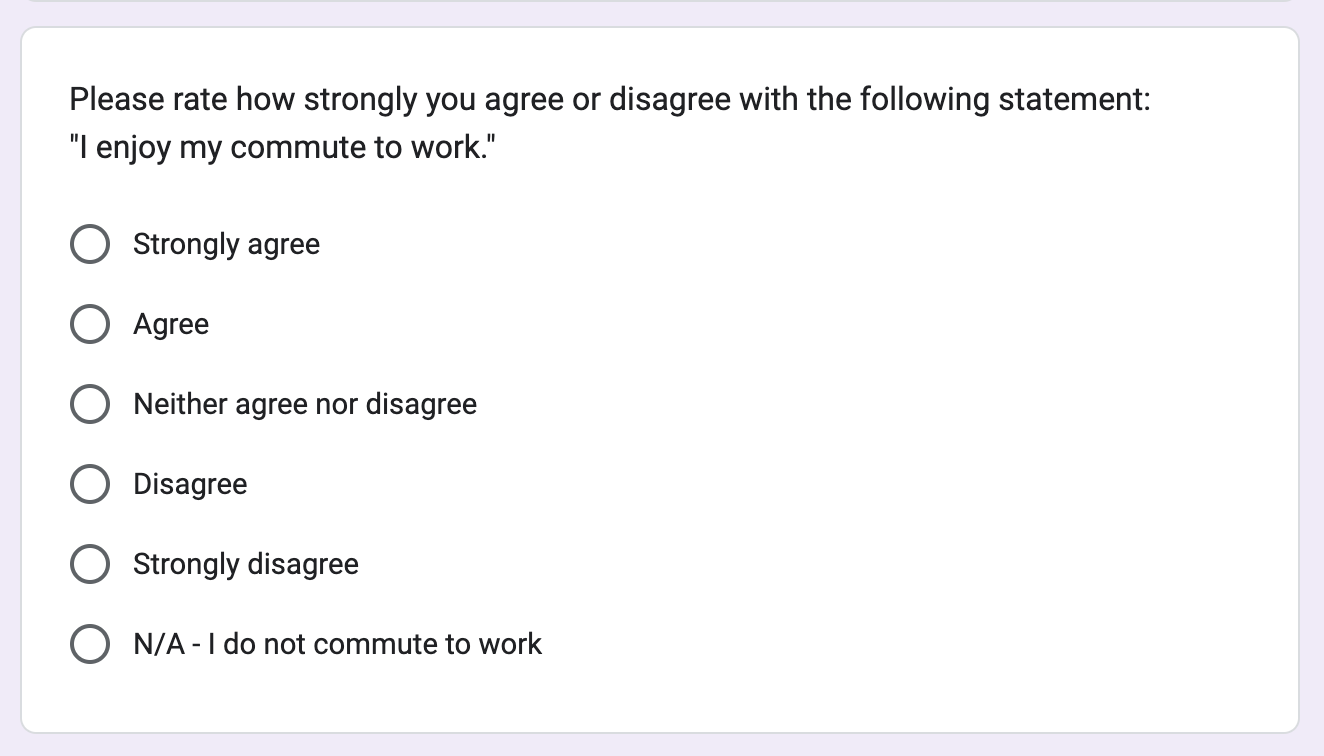
Step 2: Choose a survey platform
Most survey apps today look great on mobile, but be sure to preview your survey on your phone and computer, at least, to make sure it'll look good for all of your users.
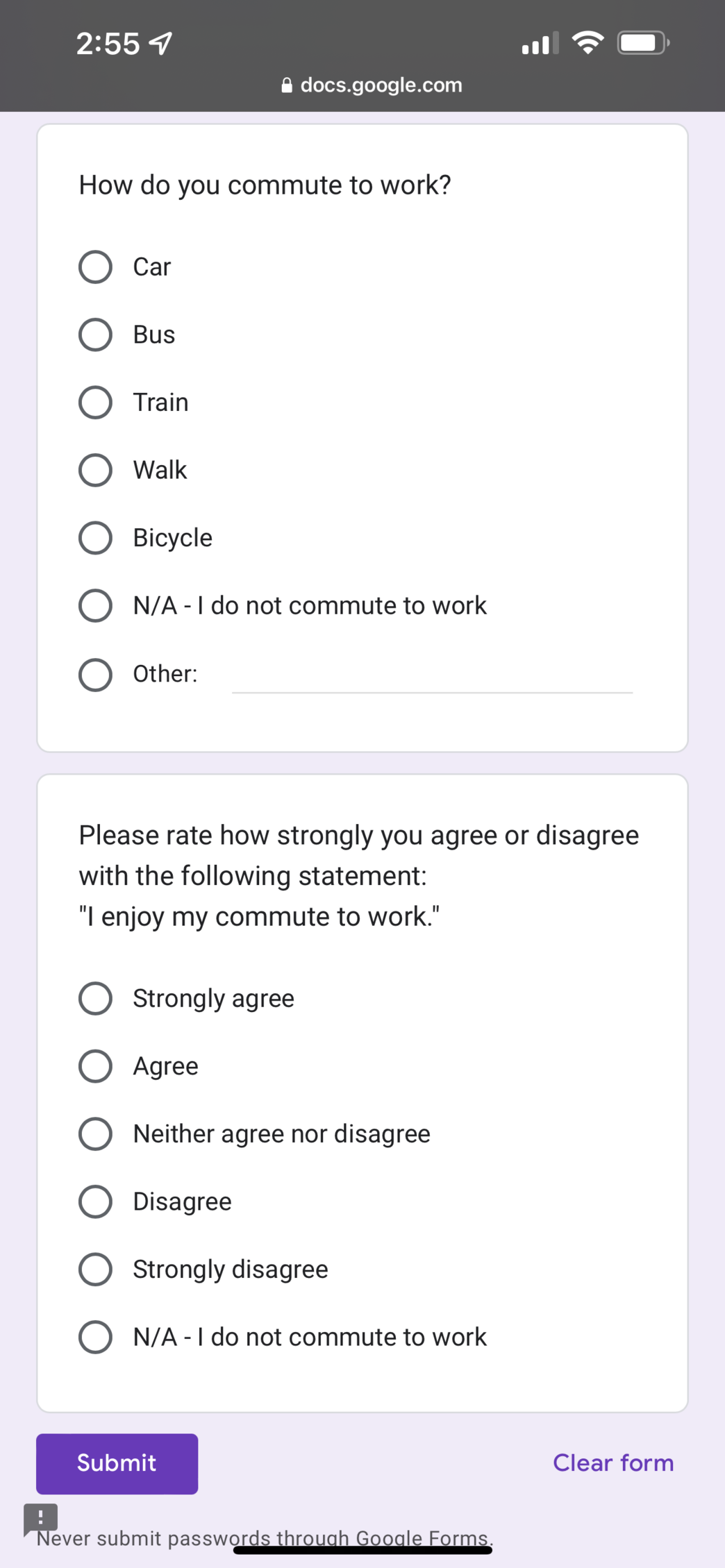
If you have the budget, you can also purchase survey services from a larger research agency.
Step 3: Run a test survey
Before you run your full survey, conduct a smaller test on 5%-10% of your target respondent pool size. This will allow you to work out any confusing wording or questions that result in unhelpful responses without spending the full cost of the survey. Look out for:
Survey rejection from the platform for prohibited topics
Joke or nonsense textbox answers that indicate the respondent didn't answer the survey in earnest
Multiple choice questions with an outsized percentage of "none of the above" or "N/A" responses
Step 4: Launch your survey
If your test survey comes back looking good, you're ready to launch the full thing! Make sure that you leave ample time for the survey to run—you'd be surprised at how long it takes to get a few thousand respondents.
Even if you've run similar surveys in the past, leave more time than you need. Some surveys take longer than others for no clear reason, and you also want to build in time to conduct a comprehensive data analysis.
Step 5: Organize and interpret the data
Tips for running a market research survey.
You know the basics of how to conduct a market research survey, but here are some tips to enhance the quality of your data and the reliability of your findings.
Find the right audience: You could have meticulously crafted survey questions, but if you don't target the appropriate demographic or customer segment, it doesn't really matter. You need to collect responses from the people you're trying to understand. Targeted audiences you can send surveys to include your existing customers, current social media followers, newsletter subscribers, attendees at relevant industry events, and community members from online forums, discussion boards, or other online communities that cater to your target audience.
Focus questions on a desired data type: As you conceptualize your survey, consider whether a qualitative or quantitative approach will better suit your research goals. Qualitative methods are best for exploring in-depth insights and underlying motivations, while quantitative methods are better for obtaining statistical data and measurable trends. For an outcome like "optimize our ice cream shop's menu offerings," you may want to find out which flavors of ice cream are most popular with teens. This would require a quantitative approach, for which you would use categorical questions that can help you rank potential flavors numerically.
Establish a timeline: Set a realistic timeline for your survey, from creation to distribution to data collection and analysis. You'll want to balance having your survey out long enough to generate a significant amount of responses but not so long that it loses relevance. That length can vary widely based on factors like type of survey, number of questions, audience size, time sensitivity, question format, and question length.
Market research survey campaign example
Let's say you own a market research company, and you want to use a survey to gain critical insights into your market. You prompt users to fill out your survey before they can access gated premium content.
Survey questions:
1. What size is your business?
<10 employees
11-50 employees
51-100 employees
101-200 employees
>200 employees
2. What industry type best describes your role?
3. On a scale of 1-4, how important would you say access to market data is?
1 - Not important
2 - Somewhat important
3 - Very important
4 - Critically important
4. On a scale of 1 (least important) to 5 (most important), rank how important these market data access factors are.
Accuracy of data
Attractive presentation of data
Cost of data access
Range of data presentation formats
Timeliness of data
5. True or false: your job relies on access to accurate, up-to-date market data.
Survey findings:
63% of respondents represent businesses with over 100 employees, while only 8% represent businesses with under 10.
71% of respondents work in sales, marketing, or operations.
80% of respondents consider access to market data to be either very important or critically important.
"Timeliness of data" (38%) and "Accuracy of data" (32%) were most commonly ranked as the most important market data access factor.
86% of respondents claimed that their jobs rely on accessing accurate, up-to-date market data.
Insights and recommendations: Independent analysis of the survey indicates that a large percentage of users work in the sales, marketing, or operations fields of large companies, and these customers value timeliness and accuracy most. These findings can help you position future report offerings more effectively by highlighting key benefits that are important to customers that fit into related customer profiles.
Market research survey example questions
Your individual questions will vary by your industry, market, and research goals, so don't expect a cut-and-paste survey to suit your needs. To help you get started, here are market research survey example questions to give you a sense of the format.
Yes/No: Have you purchased our product before?
Multiple choice: How many employees work at your company?
<10 / 10-20 / 21-50 / 51-100 / 101-250 / 250+
Checkbox: Which of the following features do you use in our app?
Push notifications / Dashboard / Profile customization / In-app chat
Dropdown: What's your household income?
$0-$10K / $11-$35K / $36-$60K / $61K+
Ranking: Which social media platforms do you use the most? Rank in order, from most to least.
Facebook / Instagram / Twitter / LinkedIn / Reddit
Ranking scale: On a scale of 1-5, how would you rate our customer service?
1 / 2 / 3 / 4 / 5
Textbox: How many apps are installed on your phone? Enter a number:
Market research survey question types
Good survey apps typically offer pre-designed templates as a starting point. But to give you a more visual sense of what these questions might look like, we've put together a document showcasing common market research survey question types.
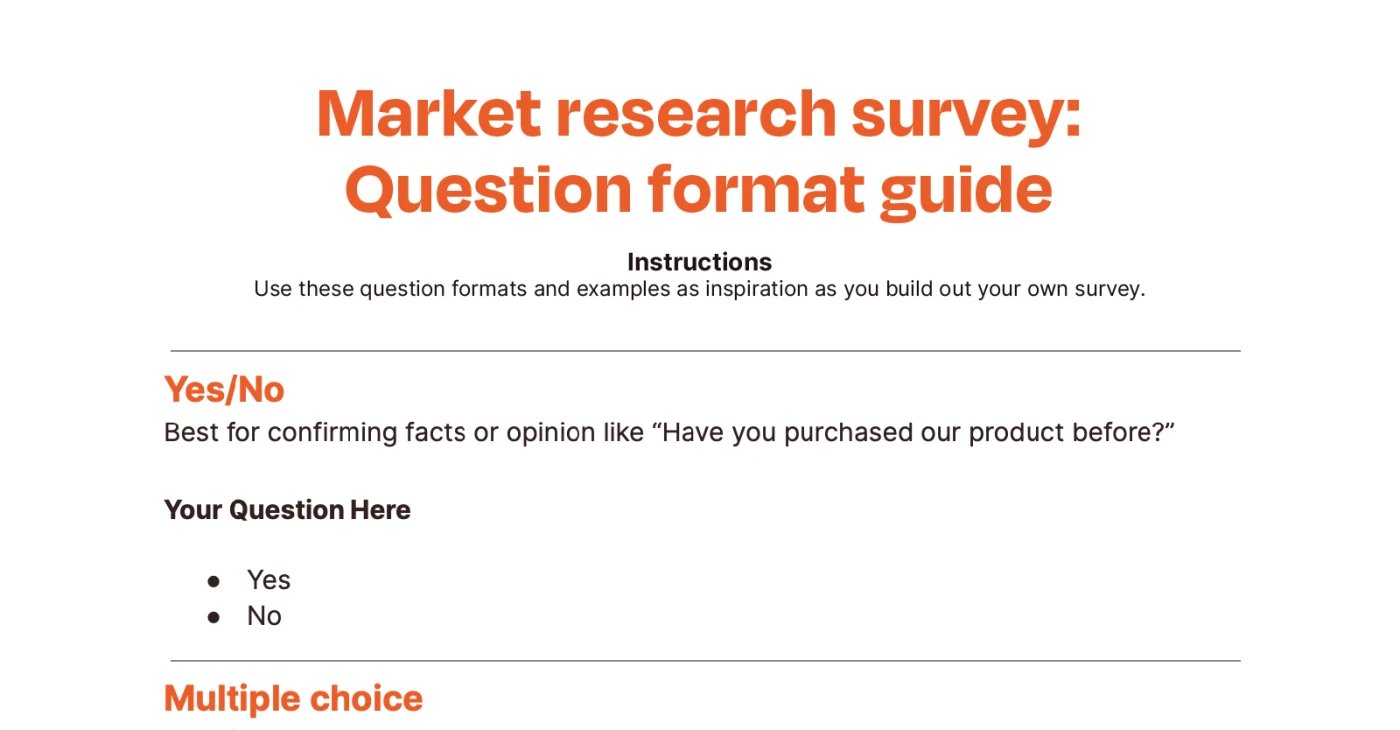
Use automation to put survey results into action
Related reading:
This article was originally published in June 2015 by Stephanie Briggs. The most recent update, with contributions from Cecilia Gillen, was in September 2023.
Get productivity tips delivered straight to your inbox
We’ll email you 1-3 times per week—and never share your information.

Amanda Pell
Amanda is a writer and content strategist who built her career writing on campaigns for brands like Nature Valley, Disney, and the NFL. When she's not knee-deep in research, you'll likely find her hiking with her dog or with her nose in a good book.
- Forms & surveys
Related articles

How to build a Discord community for your brand
How to build a Discord community for your...

Google Local Services Ads: What they are and how to use them
Google Local Services Ads: What they are and...

14 content marketing examples to get the creative juices flowing
14 content marketing examples to get the...

AI in advertising: Examples, tools, and what to expect next
AI in advertising: Examples, tools, and what...
Improve your productivity automatically. Use Zapier to get your apps working together.


Summer is here, and so is the sale. Get a yearly plan with up to 65% off today! 🌴🌞
- Form Builder
- Survey Maker
- AI Form Generator
- AI Survey Tool
- AI Quiz Maker
- Store Builder
- WordPress Plugin
HubSpot CRM
Google Sheets
Google Analytics
Microsoft Excel
- Popular Forms
- Job Application Form Template
- Rental Application Form Template
- Hotel Accommodation Form Template
- Online Registration Form Template
- Employment Application Form Template
- Application Forms
- Booking Forms
- Consent Forms
- Contact Forms
- Donation Forms
- Customer Satisfaction Surveys
- Employee Satisfaction Surveys
- Evaluation Surveys
- Feedback Surveys
- Market Research Surveys
- Personality Quiz Template
- Geography Quiz Template
- Math Quiz Template
- Science Quiz Template
- Vocabulary Quiz Template
Try without registration Quick Start
Read engaging stories, how-to guides, learn about forms.app features.
Inspirational ready-to-use templates for getting started fast and powerful.
Spot-on guides on how to use forms.app and make the most out of it.
See the technical measures we take and learn how we keep your data safe and secure.
- Integrations
- Help Center
- Sign In Sign Up Free
- 50+ Must-ask questions for your market research surveys

Şeyma Beyazçiçek
Market research is an essential part of finding answers to your questions. For this reason, market research surveys have a big importance. So, market study survey questions, too . These types of questions help you get essential data about the target audience, conduct competitive analysis, get new ones, or protect existing customers .
We have gathered the most essential data to help you gather information on the target market or target customer. In this article, you will find 50+ market research survey questions and examples about customers, products, social media, etc. You need to seriously consider these business survey questions for market research and learn more!
- What is a market research survey?
A market research survey is a document that asks demographic questions or any type of market research questions that aim to collect vital customer feedback to make you better in marketing . The critical point of a market research survey is to learn customer experience and make marketing plans according to it.
A report by Statista shows that since 2008 , the market research sector’s global revenue has increased by more than twice, surpassing $81 billion in 2022 . So, the importance of market research is getting more realized, and you need market analysis survey questions. Good survey questions for market research collect data to help you create definite strategies for a better marketing plan.
- 50+ Market research survey questions you must ask in your surveys
Each company has its own unique priorities and needs. For this reason, companies should choose questions carefully for their survey. 50+ market research survey questions might differ according to the needs and requirements of a company. Nevertheless, we have gathered the most essential and basic ones to make you grow faster.
If you want to access all these privileges we have discussed so far, you need to have a look at these 50+ must-ask questions for your market research surveys:
Customer survey questions for market research questions
The primary reason for selling a product or service is for customers . Finding the target audience for your company is one of the most important parts of your market research survey. For that reason, you need to have a look at these customer survey questions for market research questions:
1. How often do you shop from us?
- Once a week
- Twice a week
- Once a month
- Twice a month
- Once every two months
- Once every three months
- Once every six months
- Once a year
2. What is your favorite product/service?
3. What is your least favorite product/service?
4. Why do you choose us?
- Your reputation for quality products and services
- Your competitive pricing
- Your commitment to customer service
- Your convenient location
- Your wide selection of products and services
- Your knowledgeable staff
- Your experience in the industry
- Your commitment to innovation
- Your commitment to sustainability
5. Would you recommend us to your friends/family?
6. Since when do you choose us?
- Two Years Ago
- Three Years Ago
7. Overall, from 1-10, how do you rate us?
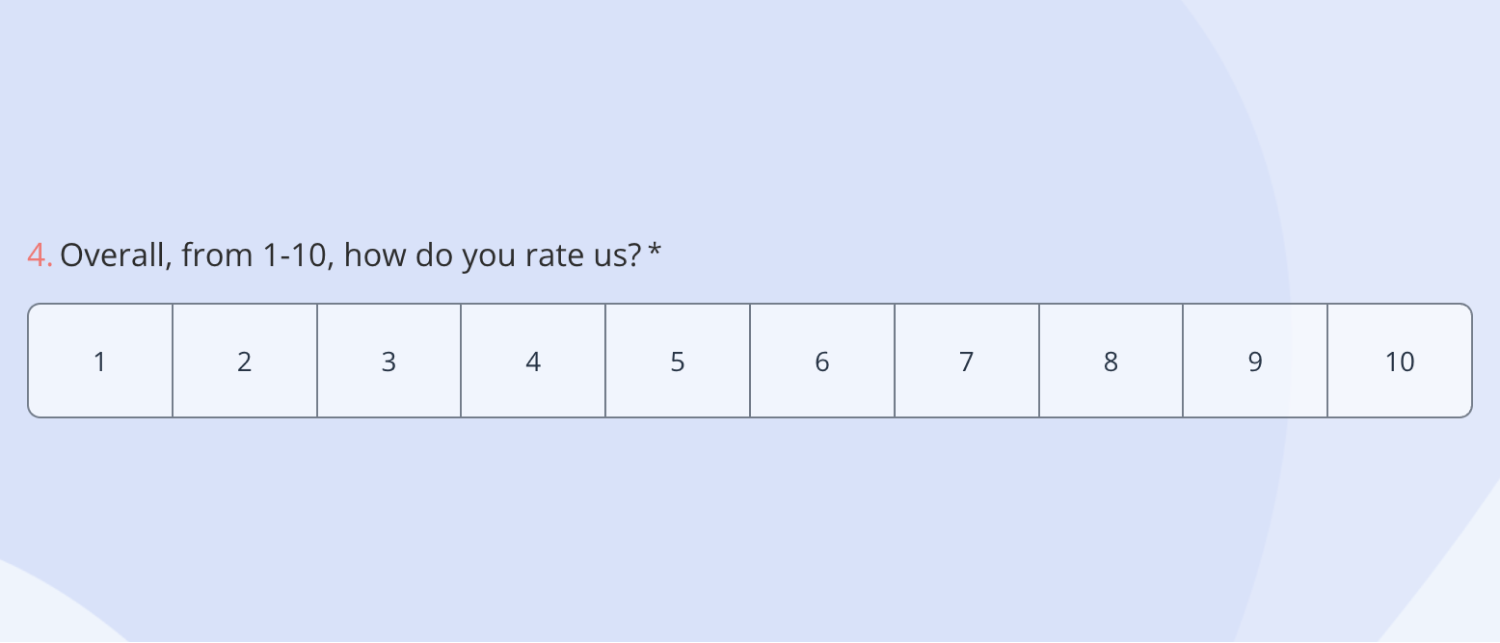
An opinion scale question example about satisfaction
Market research questions for a product
A market research question for a product is an excellent helper for companies to understand and collect data about existing. If you want to learn how your customers are satisfied with your exciting product, you only need to ask them these questions. Here are your market research questions for a product:
8. Have you ever heard of this product before?
9. From 1-10, how would you rate this product?
10. Do you believe this product is useful/helpful for you?
11. What is the likelihood of buying this product again?
- Very Likely
- Very Unlikely
12. What do you like about this product?
- It is easy to use
- It is cost-effective
- It is reliable
- It has great customer service
- It has a wide range of features
13. What do you dislike about this product?
- Functionality
14. Would you recommend this product to your friends or family?
You can replace the word “ product” with the name of your own product.
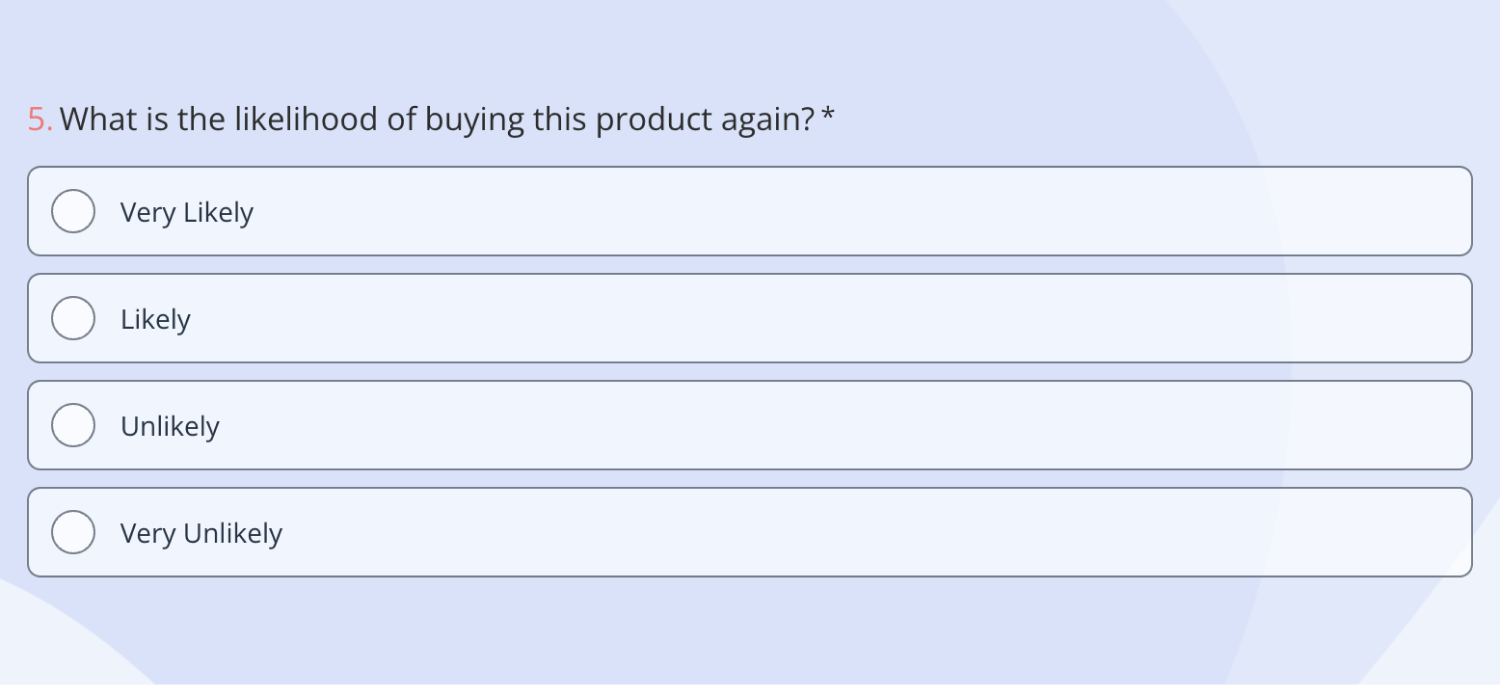
A question example about purchasing behavior
New product market research survey questions
New product market research survey questions are perfect for your company if you plan for a new product. Imagine that you are about to launch a new product. You can take fewer risks if you ask questions about the new product before launching it. So you might need these market research questionnaire questions for your new product:
15. Have you seen a similar product?
16. How likely are you to use this product for your business activities?
17. What do you think is the best feature of this new product?
18. What do you think is the least favorite feature of this new product?
19. Do you find the price reasonable?
20. Are you excited about this product?
21. Overall, from 1-10, how do you rate this new product?
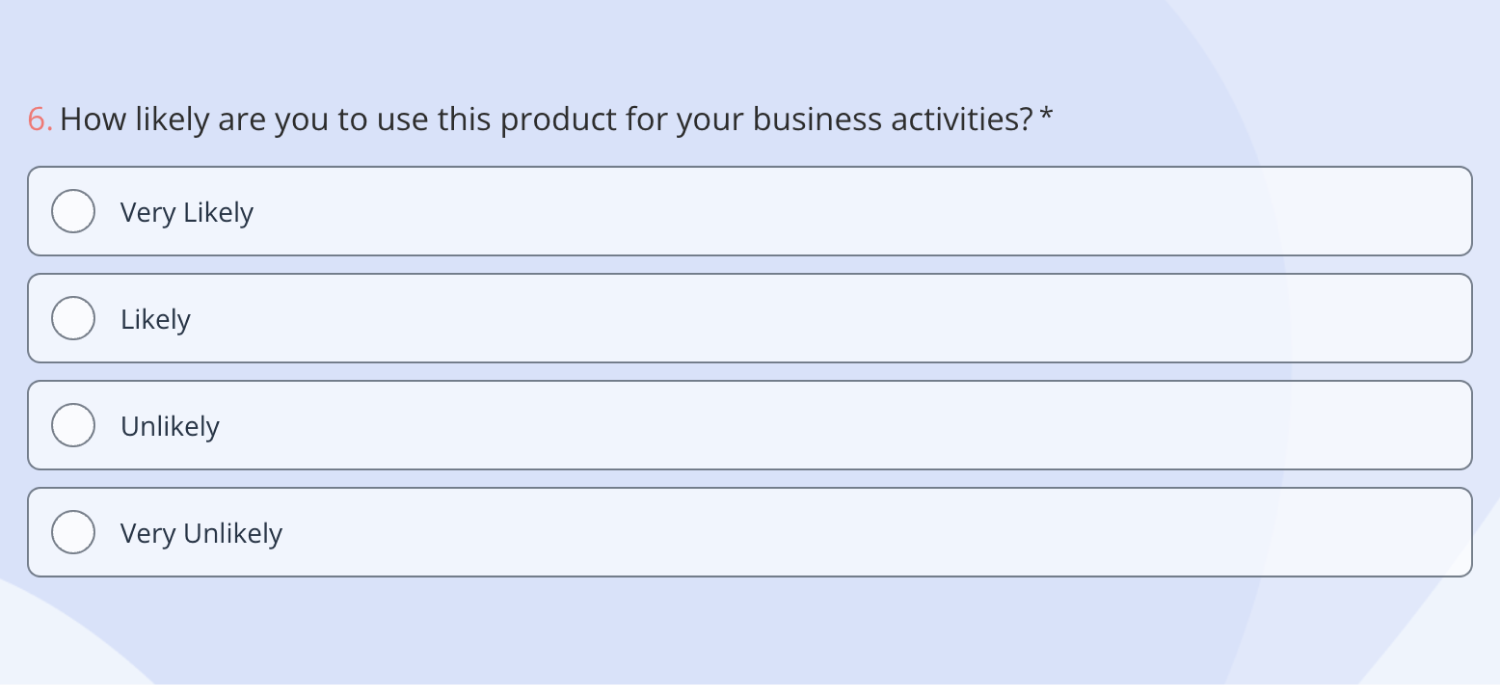
A question example about later use
Social media survey questions for market research
Social media is an excellent way of collecting helpful data from your customers because, today, nearly everybody has a social media account. You can have insightful data as long as you know which platform to use and how to use it. So, here are your social media survey questions for market research:
22. Which social media platforms do you use? ( you can choose more than 1 )
23. In which social media platforms do you spend time the most?
24. Do you follow us on your social media accounts?
25. What do you think about our company’s social media account?
- It's great!
- It could use some improvement.
- I haven't seen it
26. Do you believe we can use social media effectively?
27. What can we do to improve our social media accounts?
- Post regularly
- Run contests and giveaways
- Use relevant hashtags
- Optimize profile information
- Respond to comments
- Collaborate with influencers
28. Which influencers do you relate to us the most?
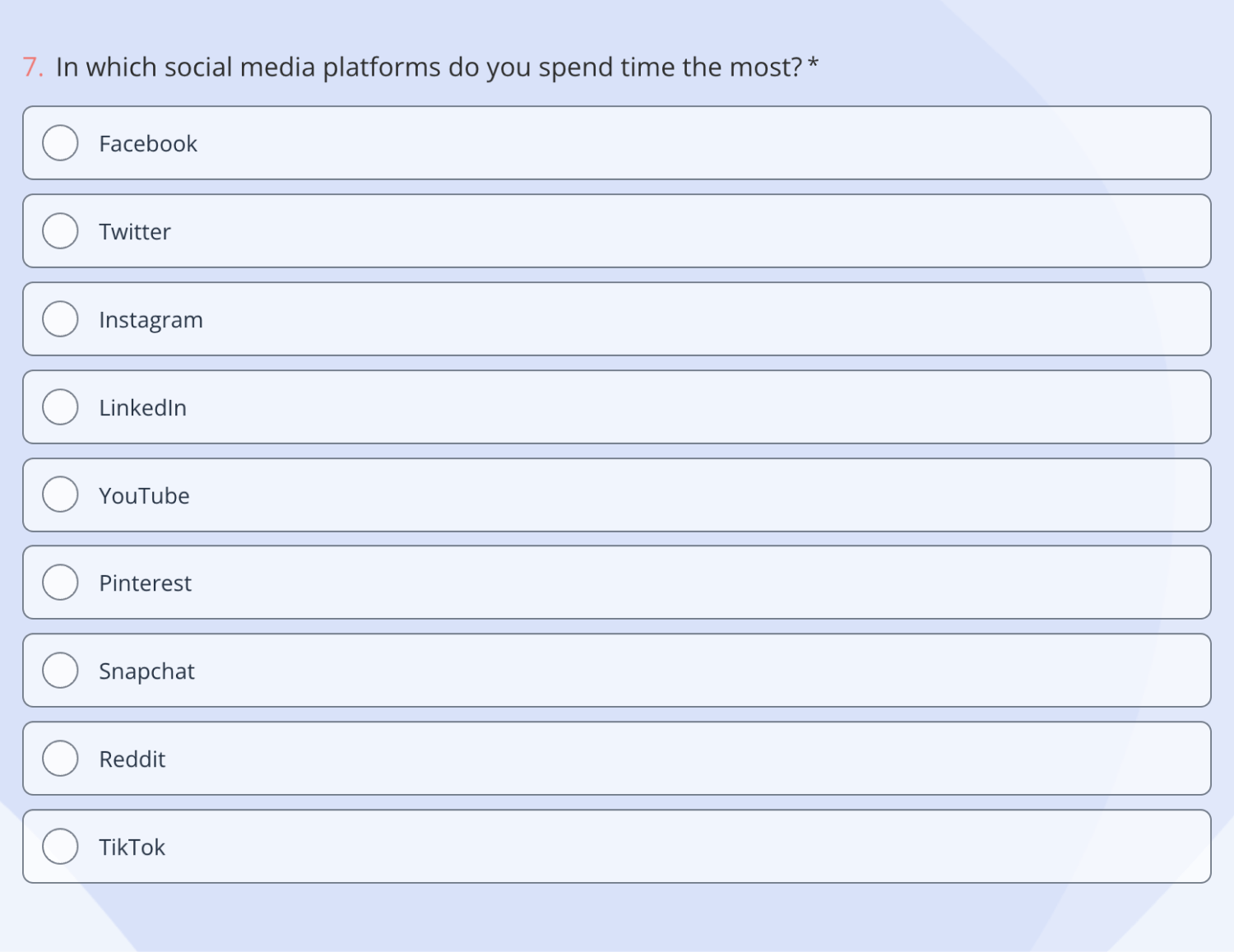
A market research survey question example about social media
Market research questions to ask potential customers
As much as trying to hold your existing customers, you should also try to find potential customers and expand your network. Because only in this way you can grow your business. When you have good market research questions to ask potential customers, as given below, you can easily get what you need:
29. Have you ever heard us before?
30. When you think of our brand, what comes to your mind first?
31. Who is our rival for you?
32. What is your minimum budget?
33. What is your maximum budget?
34. Would you consider choosing our product/service?
35. What are your best aspects, you think?
Market research questions for B2B companies
Just like any sector, B2B companies need to do their best to run market research. As for their market research survey, the questions will be different because they need to aim at businesses directly. If you need them, here are your market research questions for B2B companies:
36 . Who is your ideal customer?
37. What really matters to your ideal customer?
38. Do you think you know your customers?
39. How can you know your customers better?
40. What is your customers’ annual income?
41. What do your customers do in their free time?
42. What attracts your customer?
Demographic questions for your market research survey
Demographic questions allow your company to understand your customer’s background better. Also, if you want to understand the certain characteristics of your target audience, demographic questions are the best option for you. Have a look at these demographic questions for your market research survey:
43. What gender do you identify as?
- Genderfluid
44. How old are you?
- 65 or Above
45. What is your marital status?
46. Can you please specify your ethnicity?
- African American
- Asian American
- Hispanic/Latino
- Native American
- Pacific Islander
- White/Caucasian
47. Where are you located?
- United States
- United Kingdom
48. What is your education level?
- High School
- Associate's Degree
- Bachelor's Degree
- Master's Degree
- Doctorate Degree
49. What is your annual income?
- $0 - $25,000
- $25,001 - $50,000
- $50,001 - $75,000
- $75,001 - $100,000
- $100,001 - $150,000
- $150,001 - $200,000
- $200,001 and above
50. What is your current employment situation?
- Employed full-time
- Employed part-time
- Self-employed
- Not looking for work
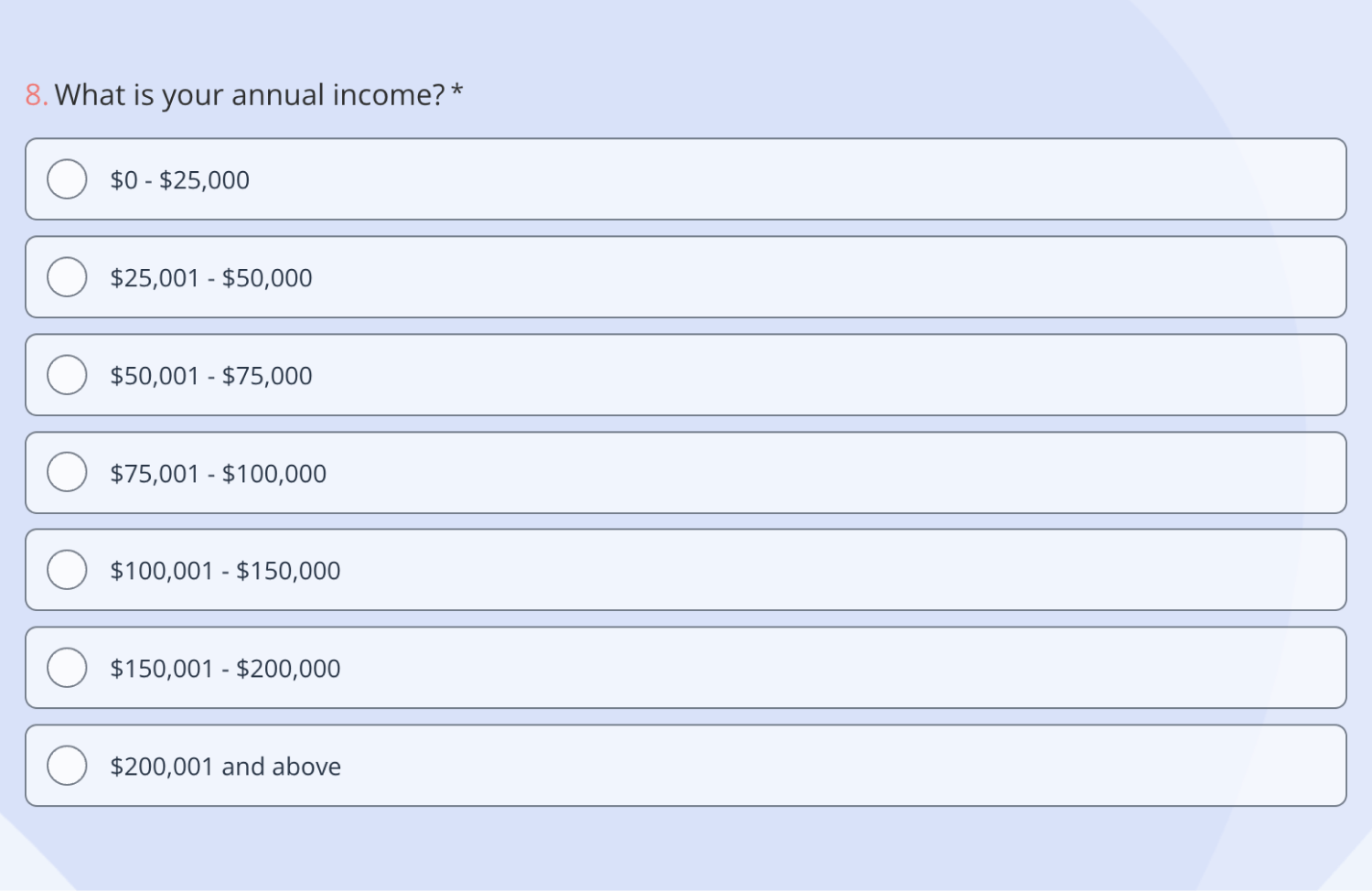
A market research survey question example about income
- How can I create a market research survey?
In order to collect essential data for your market research, if you want to handle it the fastest way, you will need an online form builder. Also, if you want to build your form with lots of options and create just like you wish and want to do all of them for free, there is only one option left: forms.app .
As long as you follow some basic steps, you can easily create your market research survey and here are the steps:
1. Login or create an account
Firstly, you should log in to your existing account if you do not have one; no worries, you can easily and quickly create an account . Also, do not forget that you have the opportunity to log in via Google, Facebook, and Apple accounts.
2. Start from scratch, choose a temple, or generate with AI
You have access to a wide range of options thanks to forms.app . You must begin from scratch if you wish to pick every aspect of your survey. The site offers pre-made market research survey templates if you do not want to spend too much time on it. However, if you stay current with the latest technology, artificial intelligence can create your survey in seconds!
3. Add your market research survey questions
Based on your company’s primary needs and essential requirements, you should choose your market research survey questions very carefully. Each company’s priorities can differ. For that reason, you need to pay attention while adding them.
4. Customize your survey form
In this step, you can easily change and personalize your online survey . To give an example, you can change the size and type of the font, colors, and order of questions, add your brand’s logo, etc.
5. Share your market research survey
In the final step, you can share your survey with your target via many platforms . You can choose the link to be public, limited, or private while sharing. Additionally, you can preview the link to see whether it has any meta titles, descriptions, or images.
- How can I write good market research questions?
One can randomly create market research questions for the survey; however, if you want to be one step ahead of your rivals and be good at writing market research questions, you need to follow the points given below:
- Consider your company’s needs : You need to have a moment and consider what your company needs the most. What are your priorities or urgent needs? Or what are your urgent deficiencies to be covered? After answering these questions, you can create better questions.
- Think like the customer: The key point is listening to your customers and trying to think like them. When you think like them, you can come up with better market research questions and collect more valuable data for your survey.
- Be direct: Questions asked directly are definitely better , instead of asking too many indirect questions or long and complex sentences that might be confusing. So, you need to pay attention at this point.
- Key points to take away
As we have discussed so far, the importance of market research is undeniable. If you want to increase your market share and be more successful in your sector, there are some key points for your company to take away. You should not ignore these points:
- Design of the survey: Do not forget that the more you pay attention to your market research survey design, the more you will seem professional.
- Pay attention to the context: Design is an important factor, but context is the exact reason you run a survey. So, you need to be careful with your questions.
- Check the result: At the end of the survey, checking and analyzing the results is a key point. If you will not do that, there is no need to share the survey, isn’t it?
Now that you have read so far, you know all the critical points about the issue and where to start. Take action now and start finding your own effective data collection methods for market research !
Şeyma is a content writer at forms.app. She loves art and traveling. She is passionate about reading and writing. Şeyma has expertise in surveys, survey questions, giveaways, statistics, and online forms.
- Market Research
- Form Features
- Data Collection
Table of Contents
Related posts.
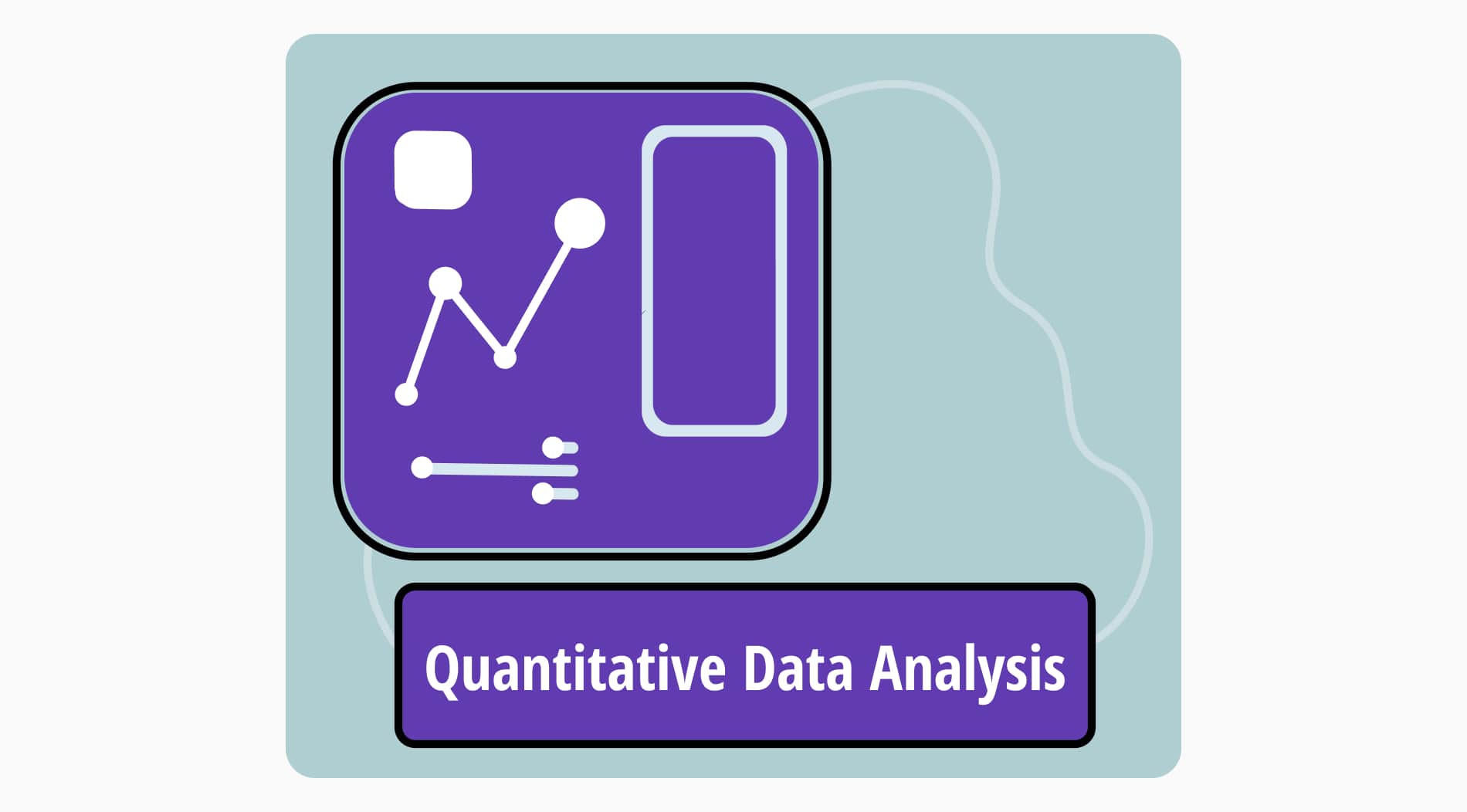
Quantitive data analysis: Definition, types & examples

50 human resources survey questions for your company questionnaires
Eren Eltemur

7 reasons why you need forms automation software in your company
Market Research Surveys: Sample Questions + Template

Sample Questions
- Creation Tips
- Types of Data
- Employee Feedback
- Creating the Survey
- Identity Protection
- Research Tools
Need a survey tool? Features include MaxDiff, conjoint, and more!
Definition: Market research surveys are a tool used to collect information about a target market. These surveys allow businesses to understand market needs and preferences.
Your company can offer better products or services by understanding your target market. Often, market research surveys will also include questions about competitors. Competitor data help paint the complete picture of your target market.
Depending on your goal, you want to include different question types in your survey. Here are three general categories of question types to include:
- Customer demographic questions
- Product/service questions
- Company/brand questions
Customer Demographic Questions
These questions will help you to understand your audience better. In addition, this data can be used to create market segments.
- What is your age range?
- What is your marital status?
- What is the highest level of education?
- What is your monthly income?
- Which of the following online retailers do you use most often?
- How many hours a week do you spend doing [task]?
- How did you find our company?
Product or Service Questions
When researching a product or service, you want to find out what attributes customers find most valuable in addition to a proper price point. MaxDiff will help you determine what is least and most important for this type of research, while Gabor Granger and Van Westendorp will help you find the optimal price points.
Important note: Don’t ask customers what they would pay for a product or service using an input box. The data will be unreliable. Instead, we recommend using a Gabor Granger question to determine optimal price; this question mimics real-world buying decisions where random price points are evaluated.
Asking about competitors is also essential when drafting product or service questions. Understanding the competition will help your own company build better offerings.
- Of the following features, which are LEAST and MOST important to you?
- Does this product help solve your problems?
- Is there any feature you wish a competitor offered?
- Was our product easy to use?
- How would you evaluate the following price points when purchasing this product?
Company/Brand Questions
When asking questions about your company or brand, the key focus should be on asking the Net Promoter Score question. This question asks, “How likely is it that you would recommend this company to a friend or colleague?” with options from 0 to 10. The overall score will range from -100 to 100 and can be benchmarked against other companies.
Some additional questions in this area could include the following
- Do you understand what our brand stands for?
- Of the following terms, which do you associate with our brand?
- When thinking of a new [product] to buy, which of the following brands first comes to mind?
Tips to Create a Great Market Research Survey
Create an objective:.
Once you get the data, what actions will you take with it? For example, do you want to research features or pricing? Whatever the objective is, make sure it is clear. This will ensure the right questions are asked to gather valuable data.
Determine How to Collect Responses:
Do you have a customer list or want general consumers’ opinions? We recommend using your own customers as a starting point for market research surveys. Then you can add in a targeted survey panel to grab more general consumer opinions.
Here is a sample size calculator to determine your needed sample size. This data will enable you to know how many responses you need to collect based on the overall population you are studying.
Use Crosstabulation:
To spot hidden trends and relationships, use cross-tabulation . For example, you could create a cross-tabulation report for a MaxDiff question with gender. Then you can see what product each prefers features. This can be used for marketing or to decide what target market would be more profitable.
Keep Your Survey Short:
No one wants to be overwhelmed. A study by Survicate found that surveys with 1-3 questions had an 83% response rate. Use skip logic to hide irrelevant questions from users that do not meet specific criteria.
Offer Incentives:
Offer incentives! Offer respondents a discount if they take your survey. This will help drum up new business and ensure you can collect the data you need.
Why Use Market Research Surveys?
Research a target market:.
Your target market is the consumers who would find your product or service most helpful. So first, create a survey to discover opinions on a product or service and respondent demographics such as age, income level, or education level. You can segment your results from here and find out what characteristics make up your target market.
Market Segmentation:
Now that you know your general target market, a more specific group of those people is known as a segment. With the dealership example, maybe you realize consumers in your area and target market love Audi but hate BMW. Luxury cars and people of the same income level drive them, but this difference in product preference is a segment. Knowing this is key to offering the correct brands or prices.
Competitor Analysis:
Often called SWOT analysis (strengths, weaknesses, opportunities, threats), analyzing your competition is key to gaining market share. Go directly to consumers and ask about their opinions on competitors. Ask questions about what they do well or what you do well. Your survey results will help you identify opportunities for growth or ways your company needs to change to stay competitive.
Product Launches:
Does your product meet your customers’ needs? Sending an online product survey to customers will help you gain insights that drive improvements, consumer satisfaction, and ultimately, sales. When measuring the importance of product features, remember always to include a MaxDiff question.
Types of Market Research Data
Of course, surveys are only part of market research. You might be able to shorten your survey if you can collect data from other places first.
Primary Information (aka Field Research):
First step in marketing research is information YOU collect specific to your objective. This type of information is most often collected via surveys! For example, you might want to open up an arcade in a small town in the United States. You can send out a survey to a sample of the town’s residents to get demographic information and if they are willing to visit your arcade.
Secondary Information (aka Desk Research):
Secondary market research is information YOU DO NOT collect specific to your objective. This type of data is already available to you in public government databases, journals, publications, or even Google! For example, let’s say you were interested in starting your luxury car dealership. You could look at government census data for income levels for your target market before conducting your detailed research. Secondary information should help narrow down what preliminary information you need to collect.
ABOUT THE AUTOR
Allen is the founder of SurveyKing. A former CPA and government auditor, he understands how important quality data is in decision making. He continues to help SurveyKing accomplish their main goal: providing organizations around the world with low-cost high-quality feedback tools.
Ready To Start?
Create your own survey now. Get started for free and collect actionable data.

10 Great SurveyMonkey Alternatives to Use in 2024
Discover alternatives to the most popular online survey tool, SurveyMonkey. Gain an understanding of where SurveyMonkey lacks in features and get intr...
10 Survey Tools for Academic Research in 2024
These nine survey tools are perfect for academic research because they offer unique question types, solid reporting options, and support staff to help...
8 Best Strategies of Survey Promotion to Increase Response Rates
Survey promotion is the process of spreading surveys through different channels to encourage more responses and participation. It involves placing the...
Business Process Improvement Consulting: Expert Solutions
Definition: A business process improvement consultant will help design and implement strategies to increase the efficiency of workflows across your o...

8 Excel Consulting Services to Use in 2024 + VBA Support
These 6 Excel consulting firms offer support, training, and VBA development to help you automate tasks and increase efficiency when using Microsoft Ex...

7 Great Qualtrics Alternatives to Use in 2024
These seven alternatives to Qualtrics offer either more features, a lower cost, or a cleaner user interface. These alternative platforms also include ...

Union Negotiation Consulting: Planning Labor Agreements
A labor union negotiation consulting engagement involves quantifying member needs, proposing contract language, and developing communication strategie...

Creating a Transactional Survey: Examples + Template
Definition: A transactional survey captures customer feedback after a specific interaction, referred to as a touchpoint. This survey type provides dir...
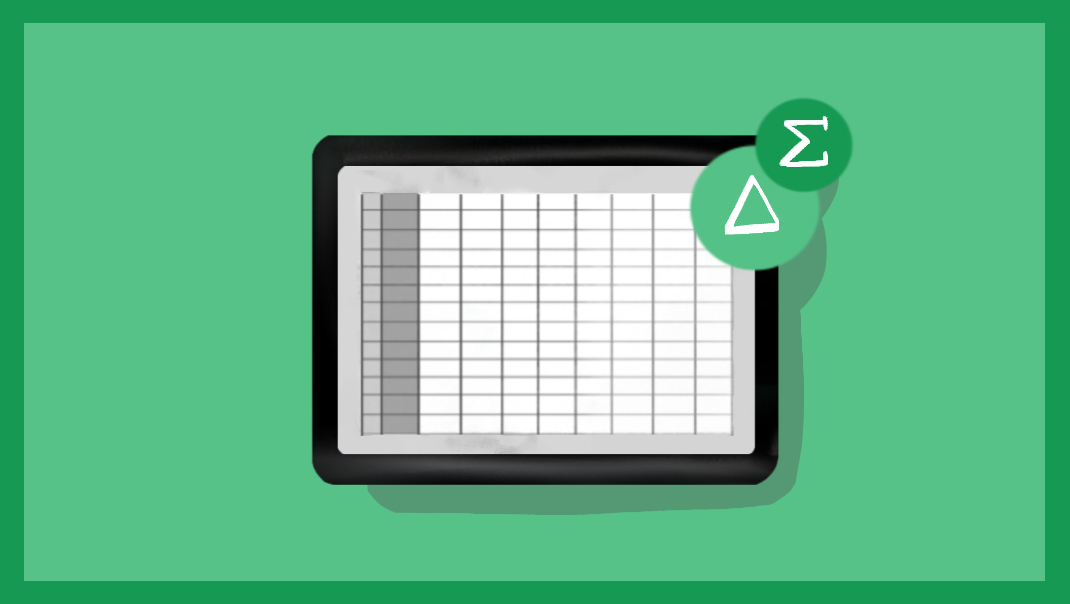
Hire an Excel Expert: Automation + VBA Development
An Excel expert will help you to complete your projects within Microsoft Excel. A good Excel expert should be proficient in advanced formulas such as ...

Creating an Anonymous Employee Survey + Template, Sample Questions
Definition: An anonymous employee survey is a convenient way to collect honest feedback in the workplace. The survey can either measure employee satis...
Improving Fleet Performance Through Driver Feedback Surveys
In the US, the trucking industry generated $875.5 billion in gross freight revenues, accounting for 80.8% of the country’s freight invoice in 20...
13 College Study Tips to Use in 2023
These 15 college study tips will help you succeed in your academic career.
Maximizing the Value of Skills Assessment Tools Using Surveys
When you apply for a job, it’s only natural that you’ll aim to present the best possible version of yourself. You’ll focus on your best skills a...
Creating UX Surveys: 6 Tips and Examples
UX surveys are used to help create a great user experience. A good UX survey will incorporate a variety of question types to help understand what user...
5 Web Consultants to Use in 2023: Design + Development
Definition: A web consultant can update an existing website design, create a custom website, help increase traffic, recommend layout changes, and even...
Creating a Targeted Survey: Panels to Reach Your Audience
Definition: A targeted survey is used to research a specific audience, frequently utilizing a survey panel provider. A paneling service generally has ...
8 Typeform Alternatives to Use in 2023
These seven alternatives to Typeform offer a lower cost or additional features. In addition, these alternative platforms include question types that T...

7 Ecommerce Skills For Professionals + Students
Ecommerce has occupied its leading niche in the world, allowing us to draw certain conclusions. For example, it is not surprising that more specialize...
Ecommerce Analytics Explained + Tools to Use
Definition: Ecommerce analytics is the practice of continuously monitoring your business performance by gathering and examining data that affects your...
Planning a Survey: 6 Step Guide + Best Practices
Planning a survey involves six steps: Set objectives, define the target audience, select the distribution method, organize external data, draft the su...
4 Survey Consulting Services to Use in 2023
Definition: These 4 survey consulting services offer planning, design, development, and support to help complete your survey project. Whether it’s f...
Excel Automation Explained: VBA Code + Sample Workbooks
Definition: Excel automation will streamline repetitive tasks such as updating data, formatting cells, sending emails, and even uploading files to Sha...
Hire a Financial Modeling Consultant: Forecasts + Valuations
Definition: A financial modeling consultant will provide expertise in planning budgets, generating forecasts, creating valuations, and providing equit...
Excel Programming Services: Development, Macros, VBA
Definition: An excel programmer can be hired to organize workbooks, create custom formulas, automate repetitive tasks using VBA, and can consult on h...

What do Americans Value Most in the Coming Election? A Comprehensive and Interactive 2020 Voter Poll
SurveyKing set out on a mission in the fall of 2020, to poll American's and help identify, with quantifiable data, what issues american are most focus...
Get Started Now
We have you covered on anything from customer surveys, employee surveys, to market research. Get started and create your first survey for free.
Market Research Survey Questions Examples to Include in Your In-App Surveys

Have you ever wondered if you are wasting your resources because you don’t know your customers well enough? Some good market research survey questions examples can help you understand your customers better.
Market research survey questions are the key to thoroughly understanding user sentiment . With the help of market research, industry and company-specific data can be analyzed to obtain valuable insights.
In the article, we’ll discuss how you can create the right market research survey questions and 40+ market research questions you can ask your target audience.
- Market research is an organized effort to collect information about your ideal customers and their needs and preferences.
- Market research questions are questionnaires sent to potential users or existing customers to collect feedback .
- Market research surveys help you better understand your target market , optimize pricing, gain insights, learn about market trends, and do competitive analysis.
- To write survey questions, set clear market research goals, write straightforward questions, and send targeted surveys at the right time.
- The market research survey questions examples discussed here are used for knowing the demography, understanding brand perception, collecting user feedback, doing competitive analysis, prioritizing product development, and analyzing product pricing .
- Userpilot lets you create various in-app surveys code-free, trigger surveys across different stages of the user journey, and analyze responses .
What is market research?
Market research, or marketing research, is an organized activity of collecting information about your ideal customers and their needs and preferences.
Market research helps businesses identify and understand their target audience. It’s crucial for developing business strategies and creating a competitive advantage. For example, user feedback on a new product helps in improving the product’s design.
What are market research questions?
Market research questions are a questionnaire sent to potential users or existing customers to get their feedback on a specific topic.
Whether you want to identify your target market, get customer feedback, or understand user perceptions about your brand or product, market research questions offer the best insights.
Why do you need market research surveys?
Market research surveys offer a multitude of benefits. They allow you to:
- Better understand your existing customers and your target audience: This helps in product development and improvements to boost customer satisfaction.
- Optimize your pricing for your target market: Market research helps you know the expectations of your target market to create optimal pricing strategies .
- Gain customer insights regarding your product or service: Both prospective and existing users provide their feedback on your product or service and may also share their opinions on what needs to be improved.
- Learn about market trends: You can stay updated on relevant trends in the market to upgrade your product and develop marketing campaigns accordingly.
- Perform competitive analysis and work on your unique value proposition: Market research lets you assess your strengths and weaknesses relative to competitors and develop a unique selling point for your product.
How to write market research questions?
If you ever struggle with writing market research questions or need to refresh your memory before getting started, you can always refer to this post. You only have to follow three simple rules.
Set clear market research goals
The first step is to set clear market research goals. Since there are multiple types of market research surveys, it’s imperative to stay aligned with specific research goals for each survey.
Once you identify the problem you want to solve, a goal-setting framework helps to frame how the market research questions are written out.
For example, you may want to get customer feedback and thus create a market research survey to gain customer insights into improvement areas. You ultimately want to increase conversion by 10% by the end of the year.
SMART goals are a highly structured framework for establishing clear, precise goals. It takes a systematic approach to focus your strategies in the right place and improve your productivity.
The SMART acronym stands for specific, measurable, attainable, relevant, and time-bound.

Write clear market survey questions
Keep your questions short and simple to ensure high response rates. The answer options should also be easy to understand.
Use close-ended and open-ended questions to collect quantitative and qualitative data, respectively.
Don’t use biased or leading questions by designing them in a way where you expect a positive or negative response.
Moreover, it is best to avoid double-barreled questions. Here’s an example: “How do you think this [feature name] improves the usability and competitiveness of this product?”
This reduces the quality of the feedback because people would give the same answer for ‘usability’ and ‘competitiveness’ although they are two different issues.
Ask the right market research questions at the right time
Make sure you ask the right market research questions to the right audience at the right time. Surveys should be contextual so users don’t feel bombarded with questions irrelevant to their use case.
Customer segmentation lets you understand how different users interact with your product. Therefore, segmenting users based on shared characteristics will help you send targeted survey questions at the right time.
Suppose you want to survey your new users. Since they are at the initial stage of the customer lifecycle, it’s best to ask them demographic questions in the welcome survey included in the welcome screen.
In another example, you can ask product experience questions after a specific interaction with the customer support team to measure customer satisfaction.

40+ Market research questions to ask your target audience
Now let’s check out the market research survey questions examples. There are six major types of market research questions.
- For knowing the demography
- To understand brand perception
- For collecting user feedback on your product or service
- For competitive analysis
- To prioritize product development
- For analyzing product pricing
Demographic questions
Demographic questions are used to learn about your target market’s age, gender, occupation, company role, etc. These questions help you segment target customers based on their user persona or jobs to be done.
Here are some examples.
- What is your current occupation?
- What is your job title?
- What is the name of your company?
- Please specify the number of employees that work in your company.
- Please specify your age.
Marketing survey questions to understand brand perception
These questions are needed to gauge brand awareness and how customers perceive the value of your brand. One example is an NPS survey to understand user sentiment and loyalty.
Some examples of marketing survey questions are:
- Describe [brand name] in one sentence.
- How do you feel about this brand?
- Do you currently use the product of this brand?
- Which of the following products have you tried? (Select all that apply)
- How did you hear about us?
- Would you recommend [brand name] to others based on our current features and attributes?
- On a scale of 1 to 10, how likely are you to recommend this brand to colleagues or friends?
- Of all the brands offering similar products, which do you feel is the best brand?
- Please specify what makes it the best brand for you in the category.

Marketing research questions to collect feedback regarding your product or service
These questions help you understand user perception and identify the necessary changes to be made in the product development cycle. This lets you improve your product and in turn, enhance the customer experience .
For instance, you can use a customer satisfaction score (CSAT) survey to know how satisfied customers are with your in-app self-service support.
Examples of marketing research questions include:
- Have you heard of [product name] before?
- How would you feel if [product name] was no longer available?
- What feature did you expect but not find?
- How are you planning to use [product or service]?
- How satisfied are you with the product?
- How disappointed would you be if you could no longer use [product/feature name]?
- Rate our product based on the following aspects:
- Have you faced any problems with the product? Specify below.
- According to you, In which area is this product/service lacking the most? Specify below.
- Please rate the following product features according to their importance to you.
- How often do you use [product name]?
- How long have you been using [product name]?
- When was the last time you used [product name]?
- How does the product run after the update?

Questions to ask existing and potential customers to perform competitive analysis
These market research questions enable you to analyze your relative position to competitors and devise strategies to gain a competitive advantage.
Examples include:
- Which product/service would you consider as an alternative to ours?
- How would you compare our products to our competitors?
- Rate our competitor based on the following:
- Compared to our competitors, is our product quality better, worse, or about the same?
- Have you seen any website/product/app with a similar feature?
- Please list the top three things that persuaded you to use us rather than a competitor.
- Why did you choose to use our [product] over other options?
- Which other options did you consider before choosing [product name]?
- According to you, which brand best fits each of the following characteristics?
Market research questionnaire to prioritize product development
To prioritize product development, you must work on new features your target customers will love. For instance, you can send a feature request survey to know how you need to improve your value proposition and match key consumer trends.
Some examples are:
- Would you purchase this product if it were available today?
- What feature would you like to see in the product?
- Would implementing [this feature] increase the usability of the [product name]?
- Which feature do you think will help improve the product experience for you?
- Please let us know how we can further improve this feature.
- What was your first reaction to the product?
- Of these four options, what’s the next thing you think we should build?
- What feature can we add that would make our product indispensable for you?
- What problem would you like to solve with our product?

Questions to analyze your product pricing
You can ask the following market research questions to analyze your pricing strategy. Thus, you can set optimal, competitive prices for your subscription plans.
- According to you, what should be the ideal price of the [product name]?
- According to you, what is the ideal price range for the product?
- Would you purchase the product at [price]?
- Is our product pricing clear?

How to create market research surveys in-app with Userpilot
Userpilot is a product growth that includes onboarding, product adoption, and product analytics as its major functionalities. So let’s see how you can create in-app market research surveys with Userpilot and get actionable insights.
Create different in-app surveys code-free
Userpilot lets you create a wide variety of in-app surveys , such as CSAT, NPS, PMF, and feature request surveys. You can even customize these surveys to reflect the style and colors of your brand, all code-free.
With Userpilot, you can add both close-ended and open-ended questions. For example, you can add qualitative follow-up questions to NPS surveys to know the reasons behind a particular score.
The image below shows a product-market fit (PMF) survey. You can add different formats to each survey for customization.

Trigger surveys at any point in the customer journey
You can send automated surveys by setting triggers at different stages of the customer journey .
This allows you to identify friction and drop-off points and address these areas to improve customer satisfaction. Moreover, you can analyze user perception at multiple stages, e.g., during awareness, conversion, and loyalty campaigns.
Use custom events to group several events together. It lets you trigger the survey after a custom event has been completed.

Collect feedback and analyze responses
Userpilot lets you tag and analyze qualitative responses in their dashboard. It offers in-depth insights into your target customers.
Below, you can see the various NPS response tags and the score for each of them.

Wrapping up
Want to get started with market research? Get a Userpilot demo and see how you can use these market research survey questions examples to analyze data and create effective marketing strategies.
Leave a comment Cancel reply
Save my name, email, and website in this browser for the next time I comment.

Get The Insights!
The fastest way to learn about Product Growth,Management & Trends.
The coolest way to learn about Product Growth, Management & Trends. Delivered fresh to your inbox, weekly.
The fastest way to learn about Product Growth, Management & Trends.
You might also be interested in ...
Product Overview
SurveyMonkey is built to handle every use case and need. Explore our product to learn how SurveyMonkey can work for you.
SurveyMonkey
Get data-driven insights from a global leader in online surveys.
Integrations
Integrate with 100+ apps and plug-ins to get more done.
SurveyMonkey Forms
Build and customise online forms to collect info and payments.
SurveyMonkey Genius
Create better surveys and spot insights quickly with built-in AI.
Market Research Solutions
Purpose-built solutions for all of your market research needs.
Financial Services
See more industries, customer experience, human resources, see more roles.
Online Polls
Registration Forms
Employee feedback, event feedback, customer satisfaction, see more use cases.
Contact Sales
Net Promoter Score
Measure customer satisfaction and loyalty for your business.
Learn what makes customers happy and turn them into advocates.
Website Feedback
Get actionable insights to improve the user experience.
Contact Information
Collect contact information from prospects, invitees, and more.
Event Registration
Easily collect and track RSVPs for your next event.
Find out what attendees want so that you can improve your next event.
Employee Engagement
Uncover insights to boost engagement and drive better results.
Meeting Feedback
Get feedback from your attendees so you can run better meetings.
360-degree employee evaluation
Use peer feedback to help improve employee performance.
Course Evaluation
Create better courses and improve teaching methods.
University Instructor Evaluation
Learn how students rate the course material and its presentation.
Product Testing
Find out what your customers think about your new product ideas.
See all templates
Resource centre.
Best practices for using surveys and survey data
Curiosity at Work Blog
Our blog about surveys, tips for business, and more.
Help Centre
Tutorials and how to guides for using SurveyMonkey.
How top brands drive growth with SurveyMonkey.
- English (US)
- English (UK)
Top 22 market research questionnaire examples
Market research is vital for ongoing business success. It’s helpful when you’re weighing up new product or service ideas as it allows you to evaluate market demand and competition. And it’s valuable when you’re preparing for a launch and want to check whether you’ve got your pricing, packaging or placement right. Our suite of concept testing market research templates , below, are perfect for these early stages.But for more mature businesses, market research can also help validate your decisions or identify new opportunities and gaps in the market. Ideal if you’re thinking about making changes. Brand research and customer behaviour surveys come into their own here―check out some examples below.
You also need to understand who your customers are so you can make sure you’re meeting their needs and expectations. And remember that this isn’t static. Attitudes and behaviours change over time. Send out customer profiling questionnaires regularly to make sure you have an up-to-date picture of who you’re selling to. In fact, we also recommend including some demographic questions within every market research survey questionnaire . This way you can identify differences, similarities and trends between and across market segments.
A SurveyMonkey market research questionnaire template is an excellent place to start. But that’s not where it ends. Each of our templates can be customised, meaning you can use the wording and questions most relevant to your organisation. And if you’re worried about having enough people to send your questionnaire out to, worry no more! SurveyMonkey Audience gives you access to millions of respondents ready to provide the answers you need to make critical decisions.
Concept testing questionnaire
Concept testing is helpful when you’re getting ready to launch or relaunch your product or service. It’s about ensuring the item itself, together with its marketing materials, appeals to your target audience. It’s key for making sure your big launch doesn’t go down like a lead balloon.
1. Product testing survey template
So your product is ready to go live? Before you make it available to the public, see how your target market feels about it with this 10-question survey. The feedback will help you identify the right improvements to make at the right time, with questions like:
- How innovative is this product?
- How likely are you to replace your current product with this product?
- In your own words, what are the things you would most like to improve in this new product?
Preview the Product testing survey template
2. Ad testing survey template
Take the guesswork out of your advertising efforts. This eight-question survey will help you understand how your target audience perceives your ad before you give it the green light, featuring questions such as:
- How believable is the ad?
- How relevant is the ad to your wants and needs?
- In your own words, what is the main message of the ad?
Preview the Ad testing survey template
3. Name testing survey template
Names can make or break a product. So make sure you test potential names with consumers. Use this market research questionnaire example to get the answers to questions like:
- What first comes to mind when you look at the name?
- How much does the name fit with this company or brand?
Preview the Name testing survey template
4. Logo testing survey template
Is your logo unique and memorable? What feelings does it evoke in your target market? Test all your options before going to market, asking questions such as:
- How visually appealing is the logo?
- Thinking about the logo overall, which of the following best describes your feelings about it?
Preview the Logo testing survey template
5. Messaging/claims testing survey template
Is your USP actually unique? Gauge consumers’ reactions to your messaging and claims in advance, using this quick survey template with questions like:
- How different is the claim from existing claims?
- Does the claim provide too much information, too little information, or the right amount of information?
Preview the Messaging/claims testing survey template
6. Package testing survey template
Don’t judge a book by its cover―or so the saying goes. But in reality, your product’s packaging says a lot about what’s inside. It needs to be visually appealing, stand out and indicate its quality―premium, budget or middle of the range? And of course it needs not to mislead. Discover if it’s ticking all the right boxes with these sorts of questions:
- Click on the part of the package where your eye is drawn. Choose one spot.
- How easily do you think you could find the packaging in the shop?
Preview the Package testing survey template
7. Price testing survey template
Does your product or service represent value for money? How price sensitive is your target market? Find out what they really think with this six-question survey template, featuring questions like:
- How much do you typically pay for this product category?
- So cheap that you would feel the quality couldn’t be very good
- A good deal that you are very likely to buy
- Starting to get expensive so you would have to give it more thought before buying it
- So expensive that you would never consider buying it
Preview the Price testing survey template
Brand research questionnaire
Brand research aims to find out what your target market thinks of your brand. You can focus on different aspects, from how much they know about your brand, through to how they perceive and identify with it or how regularly they buy your product or service.
8. Brand awareness survey template
Discover the level of awareness of your brand among your target audience with this 10-question market research template. Learn not only how people perceive your brand but also how they discover it, with questions like:
- When you think of this product type, what brands come to mind?
- When did you first hear about our brand?
Preview the Brand awareness survey template
9. Brand conversion survey template
See how consumers rate your brand compared to others in the market. With questions like the below, you’ll also learn what drives people towards a particular brand.
- Which of the following brands would you consider for your next purchase?
- How likely would you be to switch from your top choice brand to another brand?
Preview the Brand conversion survey template
10. Brand loyalty survey template
How loyal or fickle are your customers? What percentage of your client base are regular customers, versus occasional purchasers? Get the stats with questions like:
- When looking for this product, how likely are you to consider our company first?
- In the past 12 months, how many times have you visited our shop?
Preview the Brand loyalty survey template
11. Brand personality survey template
Consumers have emotional responses to brands. And it’s important you understand how your brand makes people feel. Also learn how customers distinguish your brand from competitors with this template.
- What words first come to mind when you think of our brand?
- How exciting is our brand?
Preview the Brand personality survey template
12. Brand performance survey template
Design, quality and price are deciding factors for consumers. But which is most important to your target market? Find out with questions like:
- How important is price when considering a [product category] purchase?
- How well does our brand perform on design?
Preview the Brand performance survey template
Customer profiling questionnaire
Understanding your customers or clients is a vital part of market research. Without this, it’s nigh on impossible for your marketing efforts to be successful. And it’s worth bearing in mind that this can shift and change over time, as other competitors enter or exit the market, and as your audience itself develops and changes. This means it’s important to undertake customer profiling research on a regular basis.
Some of these templates are well-suited for those working in B2B who want to find out about their clients’ target customers. Or you could send them around to different team members to get an organisation-wide view of your customers. Meanwhile, some of our other templates are perfect for surveying customers directly.
13. Typical customer analysis survey template
Ideal for those working in B2B, this quick, five-question survey will help you learn more about your clients’ target customers, their level of repeat business, and how competitive the market is.
- How competitive is the market for your target customer?
- Is your product or service typically used by the same customer once or multiple times?
Preview the Typical customer analysis survey template
14. Typical customer demographics survey template
Understanding who your client’s customers are requires a holistic approach. Consider aspects like their age, gender and level of education, household income and paint a clear picture of them with this 10-question survey.
- What is your target customer’s yearly household income?
- In what type of community does your target customer live?
Preview the Typical customer demographics survey template
15. Target market analysis survey template
Understand your client’s target market using this 10-question survey. Identify the types of customers they’re seeking, how much competition there is for these customers and how likely they are to receive repeat business, with questions such as:
- About what percentage of your target market has purchased a product or service similar to yours?
- How many customers do you need to make a profit?
Preview the Target market analysis survey template
16. Target market demographics survey template
Who is your target market? Ask them directly using this market research template to find out their age, gender and where they live, along with how often they use and buy the type of products you sell. The template includes questions like:
- What is your age?
- Which race/ethnicity best describes you?
Preview the Target market demographics survey template
17. Employment survey template
Use this market research questionnaire to ask your survey respondents about their employment status and sector of work.
Preview the Employment survey template
18. Firmographics survey template
Where do your target customers work? Get to know the types of companies they work in and what their specific roles are by using this 10-question survey, featuring questions like:
- About how many employees work at your company?
- Which of the following best describes your occupation?
Preview the Firmographics survey template
Customer behaviour questionnaire
What does your typical customer journey look like? How much of your target market waits for sales and discounts, and how many make impulse purchases? How much of your audience is happy shopping online versus on the high street? Answering these questions will help you make informed decisions on your pricing and marketing models. And perhaps even the resources you allocate to different sales channels.
19. Shopper insights survey template
Learn how consumers find out about a business in your category and decide which product or service to buy using this survey, including the following questions:
- How often do you wait for sales or coupons before you purchase this [product category]?
- How often do you purchase something impulsively?
Preview the Shopper insights survey template
20. Consumer behaviour survey template
Which brands do your target customers know of, and how do they hear about them? Use this comprehensive 17-question survey template to understand consumer awareness, consideration and purchasing stages, asking questions such as:
- How do you typically find out about brands in this product category?
- Which of these brand(s) are you aware of?
Preview the Consumer behaviour survey template
21. Path to purchase survey template
What factors influence your target market’s decision to buy? What are their preferred brands? Find all this out with questions like:
- Regarding purchasing this product category, do you typically make a decision about brands beforehand or at the time of purchase?
- Which factors are important to you when you make a decision about which brands to purchase?
Preview the Path to purchase survey template
22. Online shopping attitudes survey template
Find out how comfortable your target market is with shopping online, which websites and payment methods they prefer to use and whether they have any privacy or security concerns. This template features questions such as:
- Which online retailers do you typically use?
- How often do privacy concerns prevent you from buying products online?
Preview the Online shopping attitudes survey template
Discover more resources

Toolkits Directory
Discover our toolkits, designed to help you leverage feedback in your role or industry.

Receive requests easily with online request forms
Create and customise request forms easily to receive requests from employees, customers and more. Use our expert-built templates to get started in minutes.

Power your business with online order forms
Easily build and customise order forms and receive payments for your goods and services or use one of our expert-built templates to get started in minutes.

Get feedback you can act on with online evaluation forms
Unlock the power of feedback with SurveyMonkey's online evaluation forms. Start with our form builder today!
See how SurveyMonkey can power your curiosity
App Directory
Vision and Mission
SurveyMonkey Together
Diversity, Equity & Inclusion
Health Plan Transparency in Coverage
Office Locations
Terms of Use
Privacy Notice
California Privacy Notice
Acceptable Uses Policy
Security Statement
GDPR Compliance
Email Opt-In
Accessibility
Cookies Notice
Facebook Surveys
Survey Template
Scheduling Polls
Google Forms vs. SurveyMonkey
Employee Satisfaction Surveys
Free Survey Templates
Mobile Surveys
How to Improve Customer Service
AB Test Significance Calculator
NPS Calculator
Questionnaire Templates
Event Survey
Sample Size Calculator
Writing Good Surveys
Likert Scale
Survey Analysis
360 Degree Feedback
Education Surveys
Survey Questions
NPS Calculation
Customer Satisfaction Survey Questions
Agree Disagree Questions
Create a Survey
Online Quizzes
Qualitative vs. Quantitative Research
Customer Survey
Market Research Surveys
Survey Design Best Practices
Margin of Error Calculator
Questionnaire
Demographic Questions
Training Survey
Offline Survey
360 Review Template
- 11 Market Survey Template + [Question Examples]

One of the many ways to gather information about customers is through a market research survey. A market research survey, thus, is an affordable and reliable way for organizations to collect useful information from prospective consumers and target markets.
Apart from leveraging online data collection platforms like Formplus for your market research survey, it is also important for you to ask the right questions in your survey in order to gather the most relevant information. In this article, we’ll share some market research survey templates and question examples for your business.
What are Market Surveys?
A market survey is a data collection tool used to gather information from target markets with regard to a particular product/service. It involves gathering feedback on the needs and preferences of customers by asking a series of questions that reveal the inclinations of your target market.
Typically, organizations depend on the results of market research surveys to create effective marketing strategies. Through a marketing survey, you can understand the expectations of prospective customers as well as gain insights into your competition.
Why Administer Market Surveys?
Market surveys are essential to the success of every business; whether new or existing. Understanding the needs of your target market means that you would be able to create and improve products to suit their specific demands, and therefore, record more sales and revenue.
Here are some other reasons why you should conduct a market research survey for your business:
With a market survey, you will gain direct feedback from your customers on their expectations for your product. Such critical information plays a key role in product marketing and feature enhancement.
- A market research survey provides key insights into consumers’ purchasing behaviors. You would know what customers are most likely to purchase, the product features that appeal to them, and what they think about your competitor’s product or service.
- Effective Marketing Strategy
This is one of the most important reasons for conducting a market research survey. Findings from this research activity reveal customer inclinations and this information can help you to create an effective marketing strategy.
- Better Decision-Making
Findings from a marketing research survey often translate to better decision-making for your business. Instead of investing in trial-and-error processes, you would make decisions with a high level of predictability.
- It helps you to optimize your business operations by investing in product features that appeal to your customers.
- It maps out a clear path of demand and supply in the target market (s).
Tips for Conducting the Best Market Research Surveys
- Define a clear goal for your survey. You should be specific about the aim and expected outcomes of your market research survey.
- Identify your target market for the survey. Make your data more relevant by focusing on the right target market. Avoid generic data by ensuring that your target market aligns with your product or service.
- Use the right market survey tool like Formplus.
- Employ a thorough analysis method to process the data gathered via the survey into actionable findings. In the Formplus analytics dashboard, you can access important survey metrics and even generate a custom visual report.
- Engage the services of a market research survey expert to help you get the best results from the process.
11 Market Research Survey Templates
- Market Survey Form
Use this market survey form to gather actionable insights into consumers’ preferences and behaviors. In the drag-and-drop form builder, you can edit this template by adding different form fields to help you collect a variety of information from your target audience.
- Product Pricing Survey
Do you want to know whether you’re charging too much or too little for your product? Then use administer this product pricing survey to gather information about your client’s preferred pricing range. With the Formplus product pricing survey, you will gather first-hand data on the customers’ perception of your pricing.
- Product Evaluation Form
Use this product evaluation form to collect feedback from consumers about your product and improve your product features. The Formplus product evaluation form will help you gather information on the strengths and weaknesses of your product from your customers’ points of view.
- Customer Satisfaction Survey
Find out how well your product meets up with the expectations of your customers using the Formplus customer satisfaction survey . In the drag-and-drop form builder, you can tweak this form to suit your organization’s needs by adding different form fields and changing the appearance of the form.
- Demographic Survey
This demographic survey will help you to better understand your customers. You can collect information about the age, marital status, gender, educational level, religion, and income of your customers to help you create objective buyer personas.
- Interview Consent Form
Use this interview consent form to collect authorized permissions from participants during qualitative and quantitative research. This form would help you prevent any breach of data privacy, and you can also collect digital signatures from participants in your form.
- Opinion Poll Template
This opinion poll template is an easy way for you to sample the public’s opinion on a range of issues. You can edit this template and share the poll’s link with participants in order to understand how they feel about the issue at hand.
- Patient Satisfaction Survey
After providing medical services for a patient, you can administer this patient satisfaction survey to get feedback on how he or she feels about your service delivery. This survey form is a great way for hospitals and other healthcare practitioners to gather feedback from patients and improve their overall service delivery.
- Restaurant Satisfaction Survey
Use this restaurant satisfaction survey to gather feedback from your clients on the quality of your service delivery. Find out what clients think about your brand and how you can improve the overall service experience and perception of your business.
- Strawpoll Template
This straw poll template can be easily modified in the form builder to suit your organization’s needs. With this form, you can collect useful data from respondents about their interests, thoughts, and other important consumer demographics.
- Website Evaluation Survey
Gather first-hand feedback from website visitors about their experience on your website with the Formplus website evaluation survey . You can embed this survey form on your website to make it easily accessible to visitors.
How to Create Market Surveys with Formplus
Seamlessly create and administer your market research survey in little or no time with Formplus. After creating your survey, you can use any of the multiple form-sharing options to get your market research survey across to your customers and target markets.
Formplus also has a form analytics dashboard that displays important metrics like the total number of form submissions and the total number of form views. With the teams and collaboration feature, you and your team members can work on the market research survey and organize responses and folders, together.
Here is a step-by-step guide on how to create a market research survey with Formplus:
- Sign in to your Formplus account to access the form builder. If you do not have a Formplus account, create one here .
- In your dashboard, click on the Create new form button to get started.
- Start by adding a title to your form, e.g. Market Research Survey.
- Next, drag preferred fields into your form from the builder’s inputs section. You can edit form fields by clicking on the pencil icon beside them.
- After dragging and dropping preferred fields into your form, click on “save” to move to the form customization section. You can add background images, insert your organization’s logo, and change your form layout with custom CSS.
- Copy the form’s URL and share it with the respondents. You can send out email invitations to form respondents and also embed your market research survey on your organization’s website.
Market Research Question Examples
Question samples for target markets .
To better understand your target market and customer demographics, here are a few questions you can ask:
- How would you rate your spending habits?
- How much do you spend on groceries every month?
- How do you like to make purchases?
- Would you be willing to pay a premium subscription fee for this service?
- What is your preferred service payment plan?
Market Research Questions for Your Customers
Gathering feedback from your existing customers can provide great insights into your product’s market performance and help you to meet up with the expectations of your clients. Here are 5 questions you can ask here:
- How well does our product meet your needs?
- What do you like best about our product?
- What product feature would you like to see?
- How would you rate our service delivery?
- Has our product improved your daily output?
Market Research Questions for Competitive Analysis
These questions would provide a clearer picture of industry competitors and how they are perceived by your target market:
- What is your favorite toothpaste brand?
- Why did you choose this brand?
- What benefits do you get from this product?
- What milk brands are you familiar with?
Other market research questions are;
- How would you rate your last experience with our product?
- How likely are you to buy this product?
- How often do you make use of this product or service?
- Why did you choose our services?
- How would you rate our pricing for this product?
- How likely are you to subscribe to our services?
Best Types of Questions for Market Research Surveys
Open-ended question.
An open-ended question is a fluid question type that does not restrict respondents to a set of premeditated responses. In other words, it is a type of question that allows respondents to freely communicate their thoughts, feelings, and perceptions as they provide answers to it.
In market research surveys, open-ended questions provide an opportunity for you to get extensive and descriptive information from respondents. Since there is no limit to the responses that can be provided, open-ended questions help you to gain better insights into the behaviors and preferences of your customers.
Examples of open-ended questions are:
- How would you describe your experience with our product?
- How do you think we can improve our product for you?
- What factors influence your spending habits?
Close-ended Questions
A close-ended question is a rigid survey question type that limits respondents to a set of predetermined responses; typically in the form of options. Close-ended questions restrict respondents to already-provided responses (options) and these types of questions are mostly employed in quantitative research.
In market research surveys, close-ended questions are typically used for evaluation; that is when you want to assign statistical values to your customers’ perceptions. Close-ended questions target specifics rather than long-form responses, and they make your data collection process faster and cost-effective.
Examples of closed-ended questions are:
1. Did you enjoy using our product?
2. Would you recommend our services to other people?
3. How would you rate our service delivery?
Multiple Choice Questions
A multiple-choice question is a common type of closed-ended question that allows respondents to select one or more answers from the options provided. Multiple choice questions can restrict respondents to only one option or allow them to choose multiple options that are applicable to them.
Examples of multiple-choice questions include:
1. How long have you been using our product?
- 6-12 months
- More than 1 year
2. How often do you use our product?
- Somewhat often
Rating Scale Questions
A rating scale question is a type of survey question that requires a respondent to choose a rating option that best represents his or her perception of the subject matter. It usually displays a scale of answer options set within a specific range (like some sort of gauge).
Net promoter score questions in customer experience surveys are good examples of rating questions.
Conclusion
A market survey is an important data collection tool for new and existing businesses that intend to create customer-centric products while recording increased sales and revenue. In your market research survey, ensure that you list questions that will prompt respondents to provide relevant answers.
Also, outline specific aims and objectives for your market research survey and tailor your questions to reflect these. Finally, use Formplus to achieve a seamless data collection process from start to finish – you can create your survey, share it with respondents, and analyze the resulting data with little or no hassle.

Connect to Formplus, Get Started Now - It's Free!
- market research survey
- market survey
- market survey template
- markey survey examples
- busayo.longe

You may also like:
Community Survey: Types, Importance + [Questionnaire Examples]
In this article, we’ll look at what a community survey is, the types, why it is so important and some community survey templates you can...

Target Market: Definitions, Examples + [Audience Identification]
Without knowledge of your target market, your entire product conception and marketing process is flawed. This article covers practical...
8 WordPress Plugins for Creating Website User Polls
Use this guide to learn more about different Wordpress polling plugins, their features and pricing.
Highest-Paying Survey Sites on the Web
In this post, we will highlight how the paid survey companies operate and we will also list out sites with legit paid surveys.
Formplus - For Seamless Data Collection
Collect data the right way with a versatile data collection tool. try formplus and transform your work productivity today..
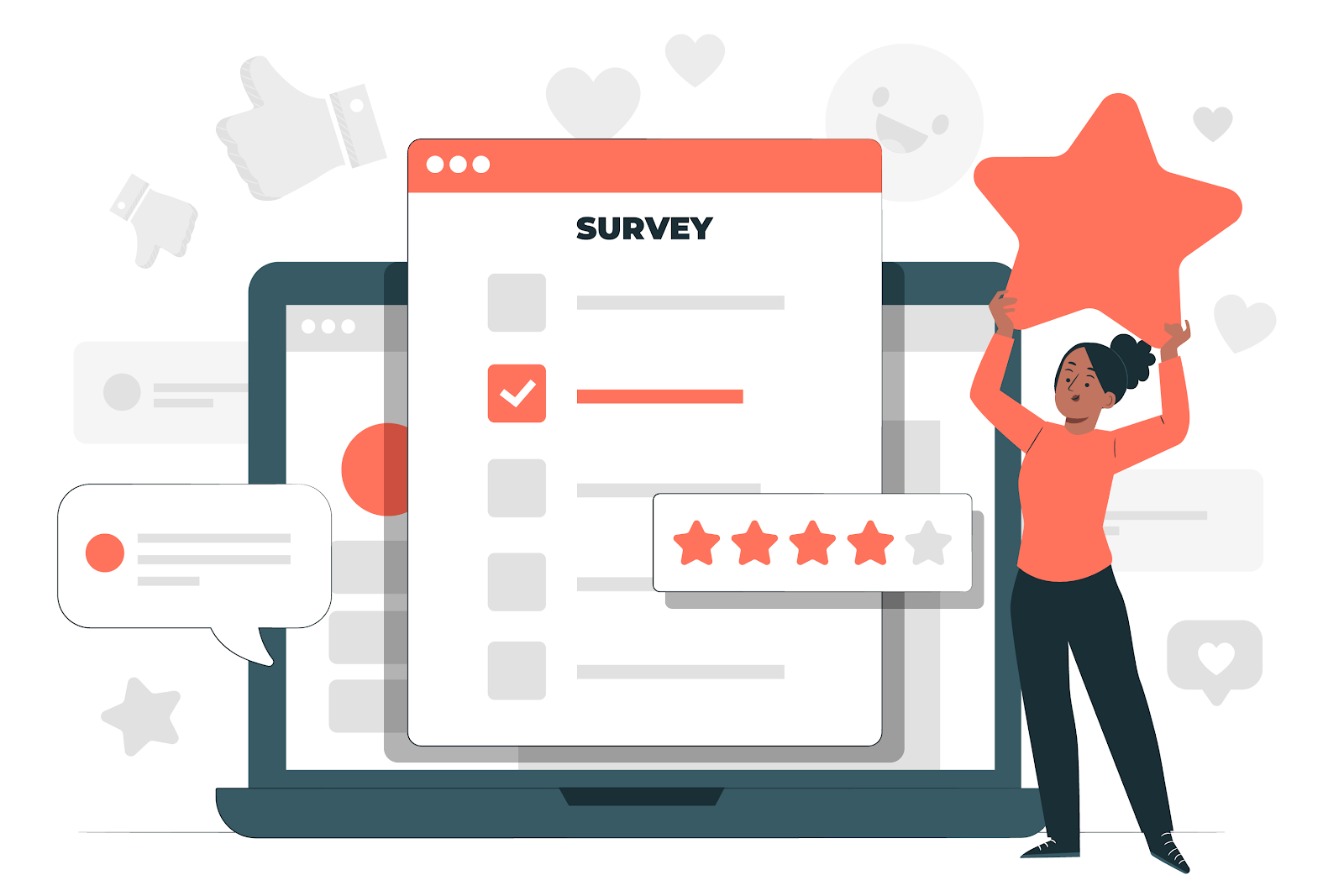
90 Survey Question Examples + Best Practices Checklist
What makes a good survey question, what is the importance of asking the right questions, 9 types of survey questions + examples, how to conduct surveys effectively, make surveys easier with fullsession, fullsession pricing plans, install your first website survey today, faqs about survey questions.
An effective survey is the best way to collect customer feedback. It will serve as your basis for multiple functions, such as improving your product, supplementing market research, creating new marketing strategies, and much more. But what makes an effective survey?
The answer is simple–you have to ask the right questions. Good survey questions gather concrete information from your audience and give you a solid idea of what you need to do next. However, the process of creating a survey is not that easy–you want to make every question count.
In this article we’ll cover everything you need to know about survey questions, with 90 examples and use cases.
Understanding the anatomy of a good survey question can transform your approach to data collection, ensuring you gather information that’s both actionable and insightful. Let’s dive deeper into the elements that make a survey question effective:
- Clarity is Key: Questions should be straightforward and leave no room for interpretation, ensuring uniform understanding across all respondents.
- Conciseness Matters: Keep questions short and to the point. Avoid unnecessary wording that could confuse or disengage your audience.
- Bias-Free Questions: Ensure questions are neutral and do not lead respondents toward a particular answer. This maintains the integrity of your data.
- Avoiding Ambiguity: Specify the context clearly and ask questions in a way that allows for direct and clear answers, eliminating confusion.
- Ensuring Relevance: Each question should have a clear purpose and be directly related to your survey’s objectives, avoiding any irrelevant inquiries.
- Easy to Answer: Design questions in a format that is straightforward for respondents to understand and respond to, whether open-ended, multiple-choice, or using a rating scale.
Keep these points in mind as you prepare to write your survey questions. It also helps to refer back to these goals after drafting your survey so you can see if you hit each mark.
The primary goal of a survey is to collect information that would help meet a specific goal, whether that be gauging customer satisfaction or getting to know your target audience more. Asking the right survey questions is the best way to achieve that goal. More specifically, a good survey can help you with:
Informed Decision-Making
A solid foundation of data is essential for any business decision, and the right survey questions point you in the direction of the most valuable information.
Survey responses serve as a basis for the strategic decisions that can propel a business forward or redirect its course to avoid potential pitfalls. By understanding what your audience truly wants or needs, you can tailor your products or services to meet those demands more effectively.
Uncovering Customer Preferences
Today’s consumers have more options than ever before, and their preferences can shift with the wind. Asking the right survey questions helps you tap into the current desires of their target market, uncovering trends and preferences that may not be immediately obvious.
This insight allows you to adapt your products, services, and marketing messages to resonate more deeply with the target audience, fostering loyalty and encouraging engagement.
Identifying Areas for Improvement
No product, service, or customer experience is perfect, but the path to improvement lies in understanding where the gaps are. The right survey questions can shine a light on these areas, offering a clear view of what’s working and what’s not.
This feedback is invaluable for continuous improvement, helping you refine your products and enhance the customer experience. In turn, this can lead to increased satisfaction, loyalty, and positive word-of-mouth.
Reducing Churn Rate
Churn rate is the percentage of customers who stop using your service or product over a given period. High churn rates can be a symptom of deeper issues, such as dissatisfaction with the product or service, poor customer experience, or unmet needs. Including good survey questions can help you identify the reasons behind customer departure and take proactive steps to address them.
For example, survey questions that explore customer satisfaction levels, reasons for discontinuation, or the likelihood of recommending the service to others can pinpoint specific factors contributing to churn.
Minimizing Website Bounce Rate
Bounce rate is the percentage of visitors leaving a website after viewing just one page. High bounce rates may signal issues with a site’s content, layout, or user experience not meeting visitor expectations.
Utilizing surveys to ask about visitors’ web experiences can provide valuable insights into website usability, content relevance, and navigation ease. Effectively, well-crafted survey questions aimed at understanding the user experience can lead to strategic adjustments, improving overall website performance, and fostering a more engaged audience.

A good survey consists of two or more types of survey questions. However, all questions must serve a purpose. In this section, we divide survey questions into nine categories and include the best survey question examples for each type:
1. Open Ended Questions
Open-ended questions allow respondents to answer in their own words instead of selecting from pre-selected answers.
“What features would you like to see added to our product?”
“How did you hear about our service?”
“What was your reason for choosing our product over competitors?”
“Can you describe your experience with our customer service?”
“What improvements can we make to enhance your user experience?”
“Why did you cancel your subscription?”
“What challenges are you facing with our software?”
“How can we better support your goals?”
“What do you like most about our website?”
“Can you provide feedback on our new product launch?”
When to use open-ended questions: Using these survey questions is a good idea when you don’t have a solid grasp of customer satisfaction yet. Customers will have the freedom to express all their thoughts and opinions, which, in turn, will let you have an accurate feel of how customers perceive your brand.
2. Multiple Choice Questions
Multiple-choice questions offer a set of predefined answers, usually three to four. Businesses usually use multiple-choice survey questions to gather information on participants’ attitudes, behaviors, and preferences.
“Which of the following age groups do you fall into? (Under 18, 19-25, 26-35, 36-45, 46-55, 56+)”
“What is your primary use of our product? (Personal, Business, Educational)”
“How often do you use our service? (Daily, Weekly, Monthly, Rarely)”
“Which of our products do you use? (Product A, Product B, Product C, All of the above)”
“What type of content do you prefer? (Blogs, Videos, Podcasts, eBooks)”
“Where do you usually shop for our products? (Online, In-store, Both)”
“What is your preferred payment method? (Credit Card, PayPal, Bank Transfer, Cash)”
“Which social media platforms do you use regularly? (Facebook, Twitter, Instagram, LinkedIn)”
“What is your employment status? (Employed, Self-Employed, Unemployed, Student)”
“Which of the following best describes your fitness level? (Beginner, Intermediate, Advanced, Expert)”
When to use multiple-choice questions: Asking multiple-choice questions can help with market research and segmentation. You can easily divide respondents depending on what pre-determined answer they choose. However, if this is the purpose of your survey, each question must be based on behavioral types or customer personas.
3. Yes or No Questions
Yes or no questions are straightforward, offering a binary choice.
“Have you used our product before?”
“Would you recommend our service to a friend?”
“Are you satisfied with your purchase?”
“Do you understand the terms and conditions?”
“Was our website easy to navigate?”
“Did you find what you were looking for?”
“Are you interested in receiving our newsletter?”
“Have you attended one of our events?”
“Do you agree with our privacy policy?”
“Have you experienced any issues with our service?”
When to use yes/no questions: These survey questions are very helpful in market screening and filtering out certain people for targeted surveys. For example, asking “Have you used our product before?” helps you separate the people who have tried out your product, a.k.a. the people who qualify for your survey.
4. Rating Scale Questions
Rating scale questions ask respondents to rate their experience or satisfaction on a numerical scale.
“On a scale of 1-10, how would you rate our customer service?”
“How satisfied are you with the product quality? (1-5)”
“Rate your overall experience with our website. (1-5)”
“How likely are you to purchase again? (1-10)”
“On a scale of 1-10, how easy was it to find what you needed?”
“Rate the value for money of your purchase. (1-5)”
“How would you rate the speed of our service? (1-10)”
“Rate your satisfaction with our return policy. (1-5)”
“How comfortable was the product? (1-10)”
“Rate the accuracy of our product description. (1-5)”
When to use rating scale questions: As you can see from the survey question examples above, rating scale questions give you excellent quantitative data on customer satisfaction.
5. Checkbox Questions
Checkbox questions allow respondents to select multiple answers from a list. You can also include an “Others” option, where the respondent can answer in their own words.
“Which of the following features do you value the most? (Select all that apply)”
“What topics are you interested in? (Select all that apply)”
“Which days are you available? (Select all that apply)”
“Select the services you have used. (Select all that apply)”
“What types of notifications would you like to receive? (Select all that apply)”
“Which of the following devices do you own? (Select all that apply)”
“Select any dietary restrictions you have. (Select all that apply)”
“Which of the following brands have you heard of? (Select all that apply)”
“What languages do you speak? (Select all that apply)”
“Select the social media platforms you use regularly. (Select all that apply)”
When to use checkbox questions: Checkbox questions are an excellent tool for collecting psychographic data , including information about customers’ lifestyles, behaviors, attitudes, beliefs, etc. Moreover, survey responses will help you correlate certain characteristics to specific market segments.
6. Rank Order Questions
Rank order questions ask respondents to prioritize options according to their preference or importance.
“Rank the following features in order of importance to you. (Highest to Lowest)”
“Please rank these product options based on your preference. (1 being the most preferred)”
“Rank these factors by how much they influence your purchase decision. (Most to Least)”
“Order these services by how frequently you use them. (Most frequent to Least frequent)”
“Rank these issues by how urgently you think they need to be addressed. (Most urgent to Least urgent)”
“Please prioritize these company values according to what matters most to you. (Top to Bottom)”
“Rank these potential improvements by how beneficial they would be for you. (Most beneficial to Least beneficial)”
“Order these content types by your interest level. (Most interested to Least interested)”
“Rank these brands by your preference. (Favorite to Least favorite)”
“Prioritize these activities by how enjoyable you find them. (Most enjoyable to Least enjoyable)”
When to use rank order questions: Respondents must already be familiar with your brand or products to answer these questions, which is why we recommend using these for customers in the middle or bottom of your conversion funnel .
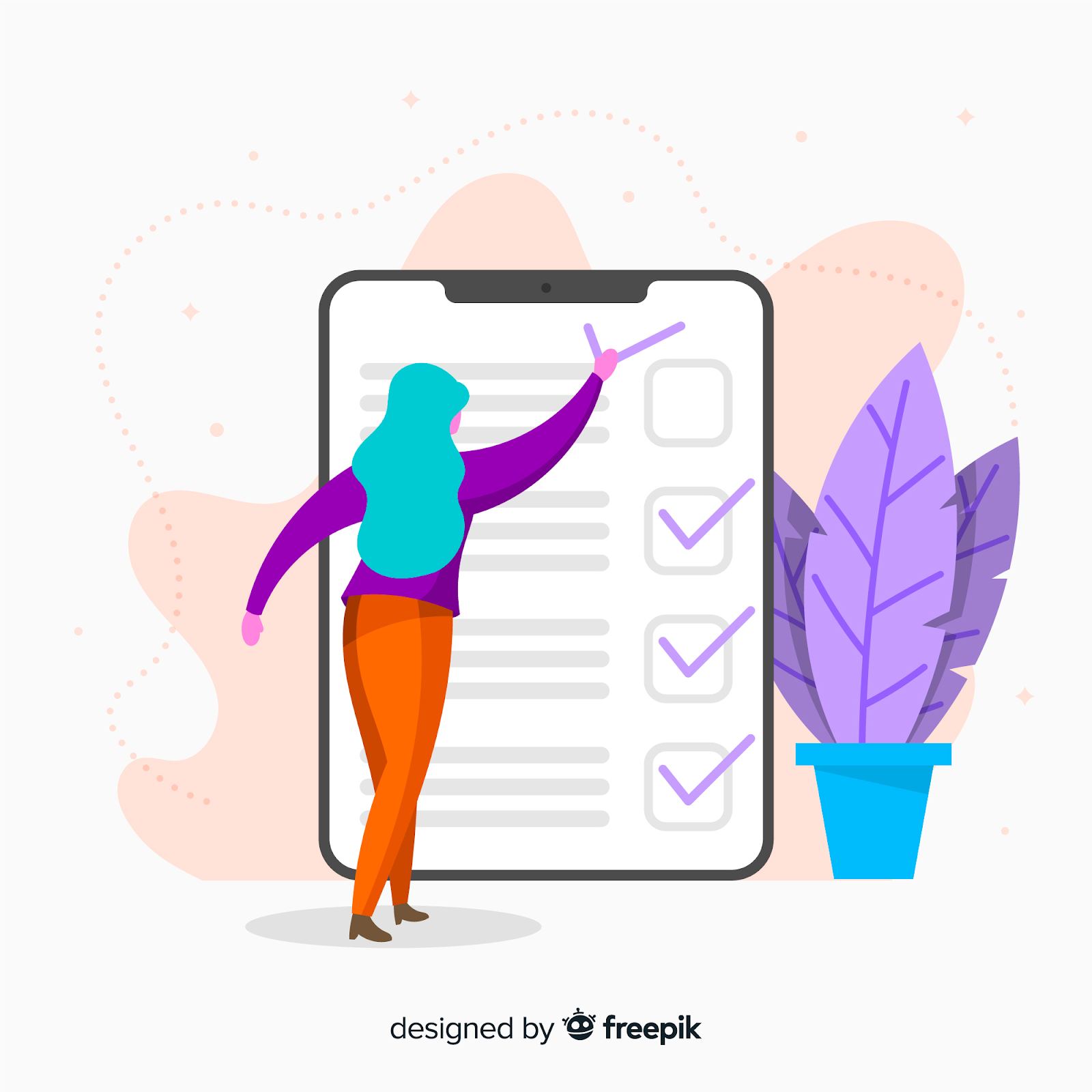
7. Likert Scale Questions
Likert scale questions measure the intensity of feelings towards a statement on a scale of agreement or satisfaction. Usually, these survey questions use a 5 to 7-point scale, ranging from “Strongly Agree” to “Strongly Disagree” or something similar.
- “I am satisfied with the quality of customer service. (Strongly Agree, Agree, Neutral, Disagree, Strongly Disagree)”
- “The product meets my needs. (Strongly Agree to Strongly Disagree)”
- “I find the website easy to navigate. (Strongly Agree to Strongly Disagree)”
- “I feel that the pricing is fair for the value I receive. (Strongly Agree to Strongly Disagree)”
- “I would recommend this product/service to others. (Strongly Agree to Strongly Disagree)”
- “I am likely to purchase from this company again. (Strongly Agree to Strongly Disagree)”
- “The company values customer feedback. (Strongly Agree to Strongly Disagree)”
- “I am confident in the security of my personal information. (Strongly Agree to Strongly Disagree)”
- “The product features meet my expectations. (Strongly Agree to Strongly Disagree)”
- “Customer service resolved my issue promptly. (Strongly Agree to Strongly Disagree)”
When to use Likert scale questions: You can use these survey question examples in different types of surveys, such as customer satisfaction (CSAT) surveys. Likert scale questions give you precise measurements of how satisfied respondents are with a specific aspect of your product or service.
8. Matrix Survey Questions
Matrix survey questions allow respondents to evaluate multiple items using the same set of response options. Many companies combine matrix survey questions with Likert scales to make the survey easier to do.
- “Please rate the following aspects of our service. (Customer support, Product quality, Delivery speed)”
- “Evaluate your level of satisfaction with these website features. (Search functionality, Content relevance, User interface)”
- “Rate the importance of the following factors in your purchasing decision. (Price, Brand, Reviews)”
- “Assess your agreement with these statements about our company. (Innovative, Ethical, Customer-focused)”
- “Rate your satisfaction with these aspects of our product. (Ease of use, Durability, Design)”
- “Evaluate these aspects of our mobile app. (Performance, Security, Features)”
- “Rate how well each of the following describes our brand. (Trustworthy, Innovative, Responsive)”
- “Assess your satisfaction with these elements of our service. (Responsiveness, Accuracy, Friendliness)”
- “Rate the effectiveness of these marketing channels for you. (Email, Social Media, Print Ads)”
- “Evaluate your agreement with these workplace policies. (Flexibility, Diversity, Wellness initiatives)”
When to use matrix survey questions: Ask matrix survey questions when you want to make your survey more convenient to answer, as they allow multiple questions on various topics without repeating options. This is particularly helpful when you want to cover many points of interest in one survey.
9. Demographic Questions
Lastly, demographic questions collect basic information about respondents, aiding in data segmentation and analysis.
- “What is your age?”
- “What is your gender? (Male, Female, Prefer not to say, Other)”
- “What is your highest level of education completed?”
- “What is your employment status? (Employed, Self-employed, Unemployed, Student)”
- “What is your household income range?”
- “What is your marital status? (Single, Married, Divorced, Widowed)”
- “How many people live in your household?”
- “What is your ethnicity?”
- “In which city and country do you currently reside?”
- “What is your occupation?”
When to use demographic questions: From the survey question examples, you can easily tell that these questions aim to collect information on your respondents’ backgrounds, which will be helpful in creating buyer personas and improving market segmentation.

Surveys can help you accomplish many things for your business, but only if you do it right. Creating the perfect survey isn’t just about crafting the best survey questions, you also have to:
1. Define Your Objectives
Before crafting your survey, be clear about what you want to achieve. Whether it’s understanding customer satisfaction, gauging interest in a new product, or collecting feedback on services, having specific objectives will guide your survey design and ensure you ask the right questions.
2. Know Your Audience
Understanding who your respondents are will help tailor the survey to their interests and needs, increasing the likelihood of participation. Consider demographics, behaviors, and preferences to make your survey relevant and engaging to your target audience.
3. Choose the Right Type of Survey Questions
Utilize a mix of the nine types of survey questions to gather a wide range of data. Balance open-ended questions for qualitative insights with closed-ended questions for easy-to-analyze quantitative data. Ensure each question aligns with your objectives and is clear and concise.
4. Keep It Short and Simple (KISS)
Respondents are more likely to complete shorter surveys. Aim for a survey that takes 5-10 minutes to complete, focusing on essential questions only. A straightforward and intuitive survey design encourages higher response rates.
5. Use Simple Language
Avoid technical jargon, complex words, or ambiguous terms. The language should be accessible to all respondents, ensuring that questions are understood as intended.
6. Ensure Anonymity and Confidentiality
Assure respondents that their answers are anonymous and their data will be kept confidential. This assurance can increase the honesty and accuracy of the responses you receive.
7. Test Your Survey
Pilot your survey with a small group before full deployment. This testing phase can help identify confusing questions, technical issues, or any other aspects of the survey that might hinder response quality or quantity.
8. Choose the Right Distribution Channels
Select the most effective channels to reach your target audience. This could be via email, social media, your website, or in-app notifications, depending on where your audience is most active and engaged.
9. Offer Incentives
Consider offering incentives to increase participation rates. Incentives can range from discounts, entry into a prize draw, or access to exclusive content. Ensure the incentive is relevant and appealing to your target audience.
10. Analyze and Act on the Data
After collecting the responses, analyze the data to extract meaningful insights. Use these insights to make informed decisions, implement changes, or develop strategies that align with your objectives. Sharing key findings and subsequent actions with respondents can also demonstrate the value of their feedback and encourage future participation.
11. Follow Up
Consider following up with respondents after the survey, especially if you promised to share results or if you’re conducting longitudinal studies. A follow-up can reinforce their importance to your research and maintain engagement over time.
12. Iterate and Improve
Surveys are not a one-time activity. Regularly conducting surveys and iterating based on previous feedback and results can help you stay aligned with your audience’s changing needs and preferences.
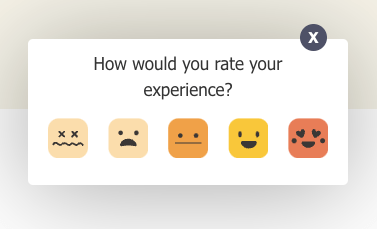
These survey question examples are a great place to start in creating efficient and effective surveys. Why not take it a step further by integrating a customer feedback tool on your website?
FullSession lets you collect instant visual feedback with an intuitive in-app survey. With this tool, you can:
- Build unique surveys
- Target feedback based on users’ devices or specific pages
- Measure survey responses
Aside from FullSession’s customer feedback tool, you also gain access to:
- Interactive heat maps: A website heat map shows you which items are gaining the most attention and which ones are not, helping you optimize UI and UX.
- Session recordings: Watch replays or live sessions to see how users are navigating your website and pinpoint areas for improvement.
- Funnels and conversions: Analyze funnel data to figure out what’s causing funnel drops and what contributes to successful conversions.
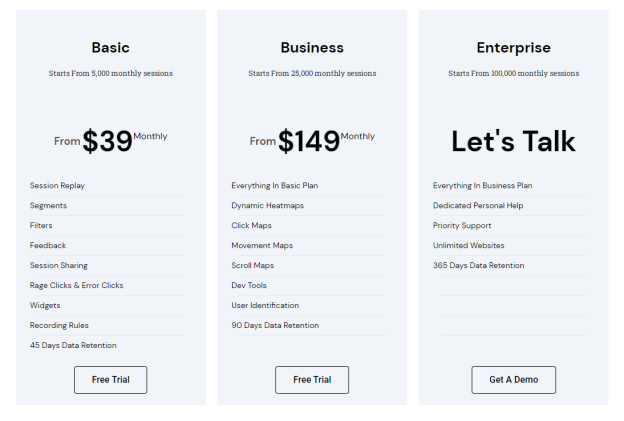
The FullSession platform offers a 14-day free trial. It provides two paid plans—Basic and Business. Here are more details on each plan.
- The Basic plan costs $39/month and allows you to monitor up to 5,000 monthly sessions.
- The Business plan costs $149/month and helps you to track and analyze up to 25,000 monthly sessions.
- The Enterprise plan starts from 100,000 monthly sessions and has custom pricing.
If you need more information, you can get a demo.
It takes less than 5 minutes to set up your first website or app survey form, with FullSession , and it’s completely free!
How many questions should I include in my survey?
Aim for 10-15 questions to keep surveys short and engaging, ideally taking 5-10 minutes to complete. Focus on questions that directly support your objectives.
How can I ensure my survey questions are not biased?
Use neutral language, avoid assumptions, balance answer choices, and pre-test your survey with a diverse group to identify and correct biases.
How do I increase my survey response rate?
To boost response rates, ensure your survey is concise and relevant to the audience. Use engaging questions, offer incentives where appropriate, and communicate the value of respondents’ feedback. Choose the right distribution channels to reach your target audience effectively.

Enhance Your Insights With Richer User Behavior Data
Discover FullSession's Digital Experience Intelligence solution firsthand. Explore FullSession for free

- Solutions Industry Gaming Automotive Sports and events Education Government Travel & Hospitality Financial Services Healthcare Member Experience Technology Use case NPS+ Communities Audience InsightsHub InstantAnswers Digsite LivePolls Journey Mapping GDPR Positive People Science 360 Feedback Surveys Research Edition
- Resources Blog eBooks Survey Templates Case Studies Training Webinars Help center
Free Market Research Surveys & Marketing Surveys
Pick A Template
Select any of our free templates or start building surveys from scratch.
Sign Up For Free
Sign Up for free account and access it right away. No copy/ pasting!
Plug & Play
Customize, Distribute, Collect, and Analyze using your Survey Templates.
List Of Market Research Survey Templates And Marketing Surveys
- Customer Satisfaction Surveys
- Voice of the Customer Surveys
Product Surveys
- Customer Service Evaluation Surveys
- Employee Experience
- Employee Experience Surveys
- Job Satisfaction Surveys
- Training Evaluation Surveys
- New Product / Concept Testing Surveys
Conference Feedback Surveys
- Focus Group Recruitment Surveys
- Hardware Software Surveys
Website Surveys
- Hotel Restaurant Surveys
- B2B Surveys
- Retail Surveys
- Travel Surveys
- Health Care Surveys
- Insurance Surveys
- Social Surveys
- Psychographic And Demographic Surveys
- Personal Surveys
- Training Surveys
- School Surveys
- University Surveys
- Nonprofit Event Surveys
- Nonprofit organization Surveys
- Nonprofit volunteer Surveys
- Health Evaluation Surveys
- Employee Evaluation Surveys
Market Research Surveys & Marketing Surveys
QuestionPro is the leader in market research surveys and marketing surveys. These templates are written by expert researchers to help you get the best survey results. These market research survey templates and marketing survey templates consist of questions on a wide variety of topics that are critically important for a successful market research survey or marketing survey. Topics include conjoint analysis. consumer products, purchase process and evaluations, advertising and marketing effort evaluation and much more. You can also use these surveys for reference, example or as a sample survey. Or simply pick a template and get started with your ready made survey immediately!
Conjoint Analysis Survey Template
Conjoint Analysis Survey Template is one of the widely used survey templates. This sample survey template measures preferences for retirement housing and to learn from the various options (apartment type) provided to the survey takers as to which option will be best suited to them. This survey template most likely should be sent to people nearing the retirement age to understand their preferences regarding the living facilities they would want to avail upon retirement if they want to move into such retirement homes.
Consumer Product Registration Survey Template
Consumer Product Registration Survey template has questions regarding product registration, product information, purchasing habit, demographic questions etc. In this age of technology and sophisticated gadgets, there is a boom in consumers purchasing goods online. However, the charm of brick and mortar store still pleases a good percentage of the crowd. By deploying consumer product registration survey to the targeted audience, researchers can understand the preferences and purchasing habits of consumers. By asking key demographic questions, researchers can know reasons for purchasing a product and for whom was the product purchased.
Sales Training Meeting Satisfaction Survey Template
Sale Training Meeting Satisfaction Survey Template is designed to obtain feedback from participants engaging in sales trainings. This survey template can be sent to attendees of sales training with the objective of getting valuable feedback about the training session, what they found most useful and if it will help them improve their overall sales skills to generate more revenue. In this survey, there are a number of relevant questions regarding training material, skill-set covered during the training, questions related to giving feedback on the training sessions that were attended by the participants and similar questions. This is a short survey but can be customized to suit the needs of a researcher.
Direct Mail Advertising Services Survey Template
Direct Mail Advertising Service Survey Template is created to understand the advertising activities conducted on a regular basis. This survey consists of questions related to indulgence in the advertising activities of an organization, business or even individuals. This survey template has questions that help a researcher understand the needs of an organization or business related to their advertising needs and why would they want to advertise their products or services. This survey consists of questions that are a mix of market research and demography. This survey template can be modified and questions can be added to suit the need of a researcher.
Purchase Process and Evaluation Survey Template
Gasoline Purchase Process and Evaluation Survey template is designed to collect meaningful insights regarding gasoline purchase and usage. The survey template consists of 20 plus questions that a researcher can use to collect insights from anybody who uses gasoline to pump their cars. There are questions in this sample survey that ask the respondents give their opinion on gasoline purchasing habits, rising gas prices and what they think are the probable reasons for the steep jump in the gasoline prices.
Sales Contact Form Survey Template
Sales Contact Form and Lead Generation Survey Template is beneficial for any organization or business. Sales are one of the quintessential attributes of an organization. When a business is aiming at an increased turnover every client or customer is important. Sales contact form survey helps organization collect first-hand information regarding a potential client who is interested in either product or services or both, offered by an organization. This form helps businesses keep a record of people who make an inquiry and could be potential customers or clients. This is the first step for an organization to understand what are the needs of the clients and what product or services they need.
Concept Evaluation and Pricing Study Survey Template
Concept Evaluation and Pricing Study Survey Template can be used by any business or organization who is keen on collecting feedback from a target audience related to an upcoming product pricing and feature concepts. When an organization or a business has a an idea that they want to get right, concept evaluation and pricing study questionnaire can save a lot of time and money to concept test before bringing it out to the world. Concept evaluation and pricing study survey allow to refine a product concept, create good ad campaigns, new logo etc.

Service Concept Test Survey Template
Service Concept Test Survey Template helps businesses and organizations collect feedback from their clients/customers regarding a new line of service they have been planning to introduce. Good service ensures a positive customer feedback and a positive feedback ensures customer satisfaction and customer loyalty. Hence, by building service excellence, businesses or organizations can grow many folds. Implementing this survey example, organizations or brands can focus on retaining customers. This has proven to be more effective at increasing the sales revenue and reaching profit point. By using this sample survey template organizations and businesses can take the first step towards success.
Brief Product Concept Test Survey Template
Product Concept Test Survey Template consists of 7 critical questions on product testing. Before it introduces into the market, every product is an unproven idea. Organizations or businesses need to know if there is a demand in the market for a particular product or not. Once that clarity is there, a survey deploys with specific questions can help collect relevant information and reaction from a particular set of audiences. A product concept testing survey enables you to test an idea or concept before introducing a product or service into the market. For a product or service to be successful in your target market, it is essential to understand whether your clientele will accept or not. Using a concept testing questionnaire, an organization can process, analyze, and test the product. This survey template offers questions about the importance of the concept, which features adds value to execute the concept, aspects of the concept that will most likely be widely accepted, and other factors For example, if Acme Dog Food company wants to launch a new bunch of dog food products for an Asian dog breed, they can send a concept test survey to these dog owners.
Marketing Concept Test Survey Template
Product satisfaction survey template allows organizations to better understand their product and help them measure customer satisfaction and usage. It also helps them discover ways to improve the entire customer experience with respect to the product. This questionnaire consists of questions that can be customized to suit the need of a researcher. This sample survey template by QuestionPro enables organizations and business focus on measuring customer loyalty by answering simple questions related to what they think about the product and if they are willing to recommend it to their family and friends.
Customer Lead and Qualification Survey Template
Customer Lead and Qualification Survey template is a B2B survey template that is carefully designed by experts at QuestionPro. This survey template consists of 10+ questions that can be easily customized to suit the needs of a researcher. This sample survey template can be used to collect data and information from customers/consumers for budget assigned to a particular product or service, purchasing intent of an organization, just to name a few. This questionnaire can be used for qualifying customer leads.
Advertisement Evaluation Survey Template
Advertisement Evaluation Survey Template designed by QuestionPro is designed carefully to accommodate questions to gain feedback about the concept of advertisements, their quality and how effective they are. From this survey template, a researcher can gain meaningful insights into what advertisements can do for a brand, this sample survey template helps researcher measure the effectiveness of advertisement and if do the trick and solve the purpose of effective brand promotion. This questionnaire consists of 15+ questions that can be easily customized according to the needs of a researcher.
Sales Training Evaluation Survey Template
Sales Training Evaluation Survey Template by QuestionPro is carefully curated with relevant questions that seek feedback from participants who have attended a sales training. This sample survey template consists of 20+ questions that ask the participants to expresses to what degree they liked or disliked the training, training material, time allocated towards each session etc. This questionnaire can be easily customized according to the target audience to collect their opinion/suggestions and any further scope of improvement.
Shopper Involvement Study Survey Template
Shopper Involvement Study Survey Template by QuestionPro is designed to understand a customer’s knowledge and understanding regarding a product offered by a brand. This sample survey template consists of 30 plus questions, that helps an organization/business/researcher understand the probable reasons why a shopper wanted to make a purchase and the research that he/she put in before making that purchase. This questionnaire can be customized according to the need of a target audience.
Corporate Marketing Evaluation Survey Template
Corporate Marketing Evaluation Survey Template by QuestionPro is designed to evaluate the outward appearance of an organization or a brand. This sample survey template consists of 30+ questions that help an organization or brand evaluate everything from their mission statement to their advertising implementation. Corporate marketing is a means by which organizations can attract new customers. By deploying this questionnaire to respondents, organizations will be able to assess what kind of approach in terms of advertising or messaging will appeal to them.
Warranty Card Consumer Product Survey Template
Warranty Card Consumer Product Survey Template by QuestionPro consists of questions that help gain information from buyer regarding what product have they bought and the warranty card issued against it. This sample survey template consists of demographic questions, personal information questions and product purchase related questions, to name a few. This questionnaire enables a shop owner or a brand understand under what circumstances is the warranty card being used. This form consists of 20+ questions that can be customized to best suit a brand or shop owner.
Sales Followup Survey Template
Sales Follow up Survey Template by QuestionPro is designed to carry questions that gain meaningful insights from those shoppers/prospective clients who couldn’t be converted into customers. This survey template consists of questions to understand shopper behavior who do not make the purchase from a brand. These questions are very straightforward and help the survey responded choose appropriate reasons for not being to make that purchase. This questionnaire can be customized and questions can be altered/added/deleted to get the desired outcome from the survey.
Dealer Feedback Survey Template
Dealer Feedback Survey Template by QuestionPro is designed with questions to gather feedback from dealers about the products/services they are associated with. This sample survey template consists of different types of questions that help a dealer fill out appropriate information regarding their association with a third party organization, what sort of dealership they follow, what is the financials associated with it and much more. This is a comprehensive survey template which enables an organization gets complete dealer information to make dealer network stronger.
Even Likert Scale Survey Questions Template
The Even Likert Scale Survey Template, designed by experts, consists of various real-life examples of Likert Scale questions. Researchers widely used the Likert scale questionnaire to measure attitudes and opinions. It gives respondents the option of answering with more than just yes/no. This questionnaire is an editable one, and you can add more Likert scale questions to collect responses that don’t necessarily need a neutral option.
Odd Likert Scale Survey Questions Template
Odd Likert Scale Survey is designed by experts at QuestionPro. Odd Likert scale questions have a neutral option in the answer responses. The neutral option is present for those responded who don’t have an opinion about the question asked. In this survey template, there are different odd Likert scale question examples used to help the researcher understand where and how these questions can be used. In this sample survey template, there are 10+ question examples. This questionnaire can be customized to suit the needs of a researcher to align with their business or brand.
Semantic Differential Survey Questions Template
Semantic Differential Survey Template is designed by experts at QuestionPro. This survey template consists of different Semantic Differential scale question examples. Semantic Differential Scale in a survey or question is a question type that asks the respondents to rate a company, product or services etc. within the framework of a multi-point rating system. The answer options consist of opposite adjectives at each end. For eg. love/hate, like/dislike, happy/sad etc.
Wind Energy Power Survey Questions Template
Wind Energy Power Survey Template designed by QuestionPro consists of carefully curated questions by experts to gain feedback from people to understand if they are well informed about wind energy, their stance on wind energy and if they feel using this type of energy can save some non-renewable energy for the generations to come. This questionnaire consists of 15+ questions that help collect feedback and use this data to analyze the importance of wind energy. This sample survey template can be customized to suit the business needs and to collect research insights.
Real Estate Survey Template
Real Estate Survey Template, designed by a team of expert real estate researchers, can be used to increase business opportunities by understanding what exactly do property buyers needs. Stay well informed by deploying this survey template, to know how satisfied they are with their current agents, what property type are they looking to invest in, would they recommend their agent/company to their family/friends etc. Use this questionnaire to find out more from respondents and use this feedback to stay ahead of your competitors in this ever-increasing real estate market. This sample survey template can be customized to suit the needs of business/companies/organizations.
Gym Survey Questions
The gym survey questions template is used to collect information about how a community uses a gym. This sample survey was created by fitness industry leaders to help you collect information about your potential subscriber base and their habit of using the facility. The survey questionnaire is also a good example to collect insights about how they feel about adding a new facility. The questionnaire can also be used to help collect information about how different members of society perceive different offerings and if the messaging to them should differ.
VoIP Survey Questions
The VoIP survey template consists of questions that collect feedback about VoIP implementation and its benefits in an organization, especially if the organization has offices across different geographical locations. This sample questionnaire template consists of multiple survey questions that collect feedback about, if VoIP has increased productivity and collaboration in an organization as well as the perceived risks that are associated with it.
Social Media Survey Questions Template
Social media has become such an integral part of everyone’s life that it has almost become an addiction for most, especially the Millenials. The social media survey questions template is designed to collect information regarding the social media websites and what are the most preferred activities a person would like to carry out on social media.
According to the recent study in 2020, there are 3.5 billion active social media users worldwide which are about 45 percent of the total population. Social media has both, positive and negative effects. For example, social media can be an excellent platform to advertise products and services too. It honestly depends on an individual how to use this platform.
What is Social Media Survey?
A social media survey is a research process to collect information and insights about people's attitudes, behaviors, and preferences toward social media platforms. The survey can be conducted through various methods, such as online questionnaires, phone interviews, or face-to-face meetings.
Businesses, organizations, or researchers often conduct social media surveys to understand their target audience better and tailor their social media strategies accordingly. The insights from social media surveys can also inform product development, marketing campaigns, and user experience design.
Benefits of Social Media Surveys
Social media surveys have several benefits, including:
Wide Reach: Social media platforms such as Facebook, Twitter, and Instagram have billions of users, which means that social media surveys can reach a large audience quickly and easily.
Fast Results: Social media surveys can be conducted, and results can be obtained quickly. The process allows businesses to respond quickly to customer feedback and adjust their strategies accordingly.
Increased Engagement: Social media surveys can encourage engagement and customer interaction, leading to greater brand loyalty and customer satisfaction.
Data Visualization: Social media survey tools often provide real-time data visualization, which can help businesses quickly analyze and understand the data collected.
Easy to Customize: Social media surveys can be customized easily to suit the target audience's needs. The survey allows for more personalized and targeted surveys that yield more accurate and valuable data..
Cost-effective: Social media surveys are much cheaper than traditional surveys, as they do not require paper, printing, or postage costs.
Real-time responses: Social media surveys allow you to get real-time responses, which means you can quickly analyze the data and make decisions based on the feedback.
Feedback from your target audience: Social media surveys help you to get feedback from your target audience, which can help you to improve your products or services.
Engage with your audience: Social media surveys can help you to engage with your audience and build relationships with them.
High response rates: Social media surveys have high response rates, as users are already on the platform and can quickly answer questions.
Social media surveys are a valuable tool for businesses to understand customer preferences, behaviors, and expectations and adapt to changing market trends.
QuestionPro Free Template
QuestionPro Social Media Survey template consists of questions that gather information about people’s social media usage. Our team of experts designs this survey questionnaire on social media after carefully calibrating the attributes and personalities of people.
Marketing Survey Questions Template
The Marketing survey template consists of questions that a business owner or an organization can ask its customers/clients/prospective clients for evaluating marketing intelligence. In this sample survey templates, customers are asked various questions to evaluate their needs from a product/service and plan the marketing activities accordingly. This sample questionnaire is created by a team of experts to collect the required responses from the clients. This survey template can be customized and modified to suit the business needs.
Usability Survey For Self-Service Checkouts
Usability survey for self-service checkouts is a questionnaire to understand public opinion about self-service checkout systems in various stores. These survey questions aims to identify what are the challenges or issues faced by the audience when using such a system which can help the company to make improvements accordingly in those areas in the near future. Self-service checkouts can be seen in most supermarkets or retail stores these days. However, most people still prefer going with the traditional payment method. There are reasons why the customers are still not opting for self-service checkouts. These reasons can be the complexity of the system, interface, or even knowledge to operate it. Thus, there is a needs to make improvements in the existing self-service system and the same has to be promoted to the customers. In such a case, a survey would enable the company to find out customers opinions about the system, the challenges or issues they face and hence it can be optimized as per the customer’s requirements Following are the questions to gather information about the self-service checkout system and customer opinion about the usability of such a system:
Brand Awareness Survey Template
Here’s a brand awareness survey questions example with sample questions that offer a short yet simplistic method of measuring brand recognition and brand awareness amongst consumers. It contains a series of brand awareness survey questions that you can use as-is or customize with demographic and other questions of your like to get insights from a particular population segment.
Seminar Evaluation Survey Template
Professionals from various industries are always encouraged to participate in seminar to network with fellow professionals working for different organizations, to polish their skill sets, enhance their communication skills, possess additional confidence and motivation to work harder at the job. QuestionPro’s easy to customize seminar evaluation questionnaire sample template is quite straightforward for you to enter desired question and answer options which are easy and quick for the seminar attendees to fill out. You can analyze the most popular session of the seminar, was there anything that the attendees not appreciate, which factors were impressive and where can the seminar be improved in the future. Ask questions about topics of the seminar, staff in charge, motivational factors to attend the seminar, reason for attending, can be edited and included in the survey from this seminar evaluation template.
Conference Feedback and Evaluation Survey Template
Conference evaluation survey is a primary research questionnaire to understand the success of the conference by collecting post-conference feedback from attendees. Why? Because as an organization or event planner, your attendees are your customers. The best way to get collect meaningful feedback is to directly ask your customers, so you can get the most relevant information to conduct your post-conference evaluation effectively. According to the recent study by Eventbrite, 53% of corporate and conference event creators will host more events in 2020 with the same budget and team. However, in order to attribute for increasing expenditure on conferences, it is critical for ROI that organizers collect critical information from attendees to meet metrics, locate areas of improvement and grow the effectiveness and attendee experience with each event using simple and easy to answer conference evaluation surveys. Below is a questionnaire template with the top conference evaluation survey questions to ask your attendees :
Workshop Survey Template
Workshop survey template offers 10 customizable questions which can be asked to the attendees after or before conducting a workshop. This sample questionnaire is primarily to be sent after a workshop is held in order to understand whether the workshop met the attendees’ expectations or not and how can the quality of the workshop be improved. The question examples in this template can be broadly implemented by researchers to analyze the workshop topic, speakers, and overall quality. Workshops are one of the best ways to learn or enhance skills and understanding of a certain subject. But for someone conducting a workshop, have you ever wondered how good your workshop was and have you identified if it was really helpful and people got some information out of it? These are some broad questions, helpful in gathering insights into what improvements or enhancements to make your workshop well-rounded and helpful? The ideal way to acquire this information would be through survey software. Online survey software is an ultimate tool to collect and deduce information. It is not only a data store for your collected information but can provide statistical and research outcomes from your data.
Event Feedback Survey Template
Event feedback surveys have become the norm in today's business world. There are multiple events that take place around the world. Each event is unique and has a specific objective and a defined target audience. These events help the attendees for various reasons from marketing, sales, training and many more. Using these survey questions the researcher can collect objective and actionable feedback that can be used to host much better events in the future and provide satisfaction to its attendees.
Focus Group Surveys
Focus group recruitment questionnaire survey template.
Hardware Product Evaluation Survey Template is used to evaluate the importance of various attributes for a hardware product. A questionnaire creator intending to understand the factors that contribute towards the success of a product, can edit this sample and include questions and examples pertaining to his/her hardware product type.
Hardware and Software Surveys
Hardware product evaluation survey template.
Improving hardware product features to meet customer requirements can often be expensive which makes it a critical decision making aspect for the product owner. If an organized data-oriented approach is adapted to understand customer needs and expectations, it becomes easy to make decisions about updated hardware product features. Apart from money and research, there are two more important factors which go into purchasing a hardware product: effort and time. Hardware product evaluation survey template sample offers you the right questions to obtain insightful information from customers about brand reliability, installation procedure, value of money and other such hardware product feature and pricing expectations. You can customize this sample questionnaire template according to the industry of the hardware product so that you cater to your target audience.
Software Evaluation Survey Template
Use these software product evaluation questions to evaluate the importance of various attributes for a software product. Find out how satisfied your users are with your product and gain insights into the user behavior and preferences. You can use their feedback to design new features and create a product marketing strategy. Software product researchers can use our free software evaluation survey template to understand the factors that contribute to the success of a product. You can edit this sample and include questions and examples pertaining to software product type.
Pre-Installation Survey Template
A company puts in a considerable amount of time into conducting research about the products/services. You as a service provider, must understand the importance of various factors such as website information quality, training about the product networks, pre-engineering consultation, and other such factors which can be done using a survey template. QuestionPro offers a sample survey that includes questions revolving around all pre-installation aspects that have different priorities for the customers, for example - technical support, round the clock on-call assistance, involvement of a third-party for installation etc. If an organization uses this survey example to understand pre-installation preferences, it becomes easier for them to cater to customer demands and in turn help in converting these prospective companies into loyal buyers.
Technical Documentation Survey Template
Technical documentation survey template provides access to customer feedback about the technical documents for your products. It is integral to have systematically documented information for hardware or software products in manufacturing, electronics, or any other consumable product industry. Technical documentation provides a better understanding of the product with specificities which not be quite evident to the users at first. Your organization should keep the target audience in mind while writing technical documentation. Using this sample survey, you can ask the customers to provide information about their satisfaction levels regarding the aptness of content, quality of covered details, usability and implementation using the technical documentation and how can your company improve the quality and details of documentation. This survey example can be customized according the technology you offer and the details you expect from this survey.
Evaluation of Market Potential Survey Template
The evaluation of market potential survey template can be used in case you are intending to launch a new business or a new product or service in an already established market. The market potential varies directly according to the change in the region. This survey example can help you in understanding whether the customers would prefer purchasing the product online or offline, which region do they belong to, how much are they willing to spend on a particular product, what are their likes and dislikes etc. This customizable sample survey template can be edited to include questions which can provide insights about the sense of urgency in the audience, is there enough market size to accommodate a new business or a new product along with the already existing businesses, what can be the price range for the products, how easy or hard will it be to acquire a new customer in the market, what unique can your company offer that will suffice market requirement, will there be scope for growth in the market in the next 10-20-30 years so that it is worth spending a fortune to launch a business or product or service.
Hardware Post Installation Satisfaction Survey Template
Once a hardware product is purchased, one of the best practices to evaluate customer satisfaction is to send across a hardware post installation satisfaction survey. QuestionPro post installation satisfaction sample questionnaire offers editable questions which can be used to obtain information about whether site preparation instructions were provided in time, were the instructions straightforward or did they require assistance, timely delivery of hardware product as promised, guidance for on-site installation etc. This questionnaire example has been prepared by industry experts and also includes questions about frequency of usage, customer satisfaction levels after installation, likelihood of product recommendation to evaluate whether the hardware product installation was successful or not.
Product Purchase Process Survey Template
The product purchase process suggests the steps followed by a customer to finally buy the product. A standard procedure of product purchase involves identifying customer demands or requirements, research, analysis of various choices and pre and post purchase evaluation. By editing the product purchase process survey template, you can ask the customers when did customers purchase the product, which model of the product did they purchase, source of obtaining information about the product, whether the purchase was online or offline, reason to make the purchase, preferred product features etc. Understanding customer demographics is also an important part of the product purchase process sample survey. You can edit the demographic elements of this survey example according to the required details such as age, region, family income, gender, etc.
QuestionPro Demonstration Survey Template
Demonstration Survey Template by QuestionPro includes questions and examples of different categories. This questionnaire sample can be edited according to the required question types such as rank order, multiple choice question, net promoter score question etc.
Computer Security Survey Template
Computer/Cyber Security Survey Template
Consumer Electronics Survey Questions
Consumer electronics survey questions is a questionnaire to gather information about the shopping experiences of consumers when purchasing electronics. This survey aims to identify the thought process of a consumer when purchasing an electronic device, which can enable a company to launch new products, manage supply of the stock, etc. Consumer electronics survey can enable companies to understand the market demand, understand the flaws in their product and also find out issues in the various processes that influence the purchase of their goods. The market size for United states consumer electronics industry is estimated to reach $377 billion in 2018. Consumer electronics are needed on a day to day basis. One might say they are becoming a necessity for every person around the world. For every task that we do, we can have an electronic device do it faster. Because of the ease of use and saving time, all of us prefer to purchase these devices, which indeed makes life easier. Consumer electronics can be devices like Television, cellphones, radios, dryers, printers, computers, gaming consoles, etc. Following are the questions to gather information about consumer electronics and what are the factors that influence the purchase of a device
Evaluation of Potential for E-Commerce Services Survey
E-commerce has evolved to be one of the most preferred mediums for shopping. Perform an evaluation of the potential for e-commerce services using a survey template about the e-commerce website and the services offered. This sample survey can also help you with competitor analysis of the quality of the website, reasons for visiting the website, ease of navigation, etc. By customizing this survey example, you can get customer ratings for website attractiveness, efforts put by them to find your website, website content, and visual appearance, challenges for operating the website are integral to make improvements on the website. Collect data to find out the ways to offer your visitors a great shopping experience.
Digital Marketing Activities Survey Template
An organization’s website plays an integral role in all the digital marketing activities. This survey template offers questions that can help you in acknowledging the need for a website to purchasing a domain name to developing web hosting services, this sample survey questionnaire contains questions to collect answer from respondents about these aspects. As technology progresses, digital marketing activities have gained momentum and are largely responsible for driving small and large scale businesses. All the key stakeholders of an organization are now interested in designing effective digital marketing strategies because an appropriately designed digital marketing strategy can not only improve your website signups but also lead to a boost in sales. After getting inputs for these sample questions about the role of respondent in website services of their company, questions about company budget for web-related activities, information about website domain and online purchase of website services can be asked.
Web Customer Service Evaluation Survey Template
Maintaining online presence requires a remarkable amount of effort to keep website visitors satisfied and customer service is an integral factor that contributes extensively towards customer satisfaction and loyalty. With the progress made in the technological mediums, customers expect real-time solutions to all the small and large problems they face with your products and services. Your company website is the first medium they approach to obtain a solution to their complaints. There is a constant increase in online sales which is an indication that there will be a need for consistent web customer service. With this sample survey template, you can gain insights about how to improve web customer service, understand customer experiences and make enhancements on the basis of the observations. This survey example can be customized according to the detail of information you require from your customers about the offered services.
Website Visitor Profile Survey Template
Every website visitor is important for the business. Satisfying each of these visitors should be the primary goal of an organization. This survey template offers customizable questions that can be helpful in obtaining insights about the use of website, current hardware and software specifications, visitor demographic information and other details regarding the website visitor. A website visitor profile survey gives you a superior comprehension of who visits your website, how they got there, how often do they visit and how they consume information on your website. Embedding a QuestionPro survey into your website can provide in-depth analytics and insights into visitor behavior and help to accumulate visitor ethnographic information that you can use to appraise your website's design and function. A profiling survey is used to accumulate key demographic information of your customers. These surveys are used to upgrade your customer’s experience by giving them a bird's-eye view of an upcoming opinion poll. This also monitors that once you have collected information, those profiles don’t get asked repeated questions or request for repeated information so that the respondent isn’t irritated or put off to repeat your website again. Profiling surveys also assist you prudently target the right surveys to the right crowd. This sample questionnaire also includes questions to gain information about the frequency of customer visits on the website, whether they are first-time visitors and reason for visiting the website.
Online Retailer Evaluation Survey Template
Online retailer evaluation survey template helps your capture critical customer feedback on your online retail market place. The online retail market in the US alone is set to cross $500 Billion in 2018. This is also a time period when more and more online businesses are understanding the importance of conducting insightful online retailer evaluation surveys to keep accurate tabs on customer opinion, their needs and expectations. This sample survey is designed to help you capture important information on how your customers perceive your online retail brand, how satisfied they are and whether they are willing to recommend your brand to others. You can use this questionnaire as a survey example, make edits and send your survey, or you can directly pick and send this ready-made questionnaire template.
University Bookstore Online Survey Template
University Bookstore Online Survey Template offers questions to determine products and services to be offered. QuestionPro questionnaire sample includes questions about factors that prompt an online purchase, occasions on which online purchase is usually done and other information about the online university bookstore.
Website Evaluation Survey Template
This website evaluation survey template lets you gain feedback from your website visitors. Collect data on what do they like most about your website and the improvement areas. Know how likely are they to return to your website with this sample website evaluation questionnaire. Optimize your website as per the feedback from the visitors and increase your web traffic. This free website evaluation survey template can be customized to suit your needs. Know how your visitors first heard about your business and optimize your marketing strategy accordingly.
ISP Service Evaluation Survey Template
Customer service is generally a very sensitive issue with respect to an Internet Service Provider (ISP). There are a significant number of cases where customers switch ISPs frequently due to dissatisfaction and the general mediocrity in the ISP business. Consumers can get in touch with an ISP anytime - anywhere, due to which customer satisfaction becomes easily controllable for ISPs around the globe. Real-time and efficient customer service along with best-in-class technical support are two factors which control customer satisfaction. It has been proven over the last decade that those ISPs who prioritize customer service definitely have an edge over the others in the market. It is advisable to send across this survey template to all your customers to know them better so that you can serve them better and retain them in this ever-growing and overcrowded ISP market. This questionnaire offers questions to obtain insights into ISP connection quality, installation process, the operating system used to contact customer service, customer service rating etc.
Website Retailer Satisfaction Survey Template
It is observed that 8 out of 10 customers are of the opinion that brands are now more concerned about customer satisfaction than they were 10 years ago. There is a yearly increase of 150% in the customers who prefer shopping via website retailers. This is an indication of important it is to consider customer satisfaction at every step of your business. With an increase in the number of mobile consumers, there is a definite chance of an exponential rise in the visitors of a website retailer. QuestionPro offers this website retailer satisfaction survey template is accumulated by experts in website retail. Consumers are slowly and gradually preferring making purchases via website retailers and shunning the traditional physical retailers. This questionnaire considers this central fact and all the questions revolve around it.
Website Visitor Follow-up Survey Template
Website visitor follow up survey template offers questions about how helpful was their experience on your website, their demographic details for retargeting, number of hours spent online, other hobbies which may or may not be related to your product but can be instrumental in knowing the customers better, suggestions on how you can enhance your website and other such aspects related to website visitors. Following up and keeping track of visitor information can be cumbersome but by sending out this questionnaire, you can conveniently follow up with the visitors and collect information in real-time. You can benefit the most from these website surveys as they are used to gather integral visitor information and their feedback about your website.
Purchasing on the Internet Survey Template
After the dot-com explosion in the early 2000s, internet has changed the way people make purchases, read the news, make critical investments or any other transaction. Internet shopping, in particular, has become incredibly popular in the last 10 years and is constantly growing at the rate of almost 20% year-on-year. In 2016-17, it was reported that customers prefer doing 51% of their shopping on the internet. Experts at QuestionPro have recognized the need to cater to purchasing products on the internet and the habits consumers exhibit while shopping on the internet and designed a survey template accordingly. This sample questionnaire offers questions that provide researchers insights about frequency of online purchases, category of purchases, reason for a particular purchase, will to spend for a specific product and other aspects related to purchasing over the internet.
Website Demographics Survey Template
Website Demographics Survey Template offers questions and examples that provide insights on how the respondents get the information about the website, products/services that they maybe interested in and other demographic information. QuestionPro questionnaire sample includes a set of questions demographic information such as age, region, education and other information such as reasons of using the internet, purchasing intent etc.
Internet Purchase Dialog Survey Template
Internet Purchase Dialog Survey Template offers questions to determine shopper feedback to the internet retailer while shopping. QuestionPro questionnaire sample has questions that consider all the internet purchases a respondent might have had in the past. For example, questions about whether the respondent had taken time out to provide honest feedback for the purchase made on the internet.
Music Website Survey Template
Every individual working in the music industry will vouch for the fact that it takes a lot of effort to understand music preferences of people belonging to different cultures and backgrounds. Curated by music experts, this survey template offers questions which can be used to understand which section of your website did they prefer over the others, which type of music do the visitors prefer, feedback on new features that can be incorporated into your music website. Questions from this sample survey can be edited according to your genre and sent out to all your website visitor by embedding it on the website, sharing the survey on social media or sending it via email.
Website Evaluation Survey Template offers questions about website such as placement of menu, userfriendliness of the download option etc. which help to determine customer usage patterns and overall site desirability. This sample can be customized according to the niche of the website and that target audience. For example, a startup will have slightly modified questions in the questionnaire for website evaluation in comparison to a multi-national organization. This is the main reason to edit every survey template according to the requirement to gain the best results.
Internet Habits and Uses Survey Template
Recent researches have reported that 98% of people between the age group of 18-29 and overall 89% adults use internet. The internet habits and uses survey template offers survey questions which can be influential in learning about the comfort levels among customers for internet usage, online product purchasing preferences, issues with the internet today and other such factors related to internet habits and uses. There is a pool of information available for people to explore. Some people would prefer political information while the others would prefer information related to self-help. Every person having access to the internet would definitely use it differently. This survey sample can be customized according to the level of information required. A survey example such as this can be critical in address the varied internet habits and uses. By acknowledging and analyzing the answers received for the questions, you can understand your target market’s internet using capabilities and edit your current sales-marketing strategies accordingly.
Web Demographics Survey Template
Web Demographics Survey Template offers questions about customer website usage. QuestionPro questionnaire sample has a list of more than 25 questions such as where did the customer find the organization's information from or for how long have the users been using the internet.
Website Information Quality Survey Template
Website information quality is one of the most influential parameters to drive your online business. Research conducted to understand the impact of website information quality on customer loyalty and satisfaction indicate that precise and accurate information of the website can lead to a tremendous increase in customer satisfaction. This survey template offers questions to understand whether the information available on the website was helpful for the users and if not, how can you improve it. A survey sample like this can be edited as per the niche of your website to gain insights about the business sector of your target market, how instrumental is the visitor’s role in their organization and other demographic information. Researchers can use this survey example to understand the purchasing intent of the website visitors. After collecting feedback on ways to improve website information quality, they can implement the factors where enhancements can be made according to customer inputs.
Website Feedback Survey Template
An unhappy customer can lead to 26 other customers to not purchase your product/service, while happy customers share their pleasant experience with 9 others. In any case, a customer on your website can provide valuable feedback to identify and eliminate issues they frequently face. A website feedback survey template includes questions about rating various aspects of the website, reasons for visiting the website, how did the customers know about your website and other similar questions. This survey sample can be customized according to the detail of information required from the target market. Feedback about whether the visitor would revisit your website to know more about your products/services, frequency of visiting your website, demographic details can be obtained using this survey example.
- Sample questions
- Sample reports
- Survey logic
- Integrations
- Professional services
- Survey Software
- Customer Experience
- Communities
- Polls Explore the QuestionPro Poll Software - The World's leading Online Poll Maker & Creator. Create online polls, distribute them using email and multiple other options and start analyzing poll results.
- Research Edition
- InsightsHub
- Survey Templates
- Case Studies
- AI in Market Research
- Quiz Templates
- Qualtrics Alternative Explore the list of features that QuestionPro has compared to Qualtrics and learn how you can get more, for less.
- SurveyMonkey Alternative
- VisionCritical Alternative
- Medallia Alternative
- Likert Scale Complete Likert Scale Questions, Examples and Surveys for 5, 7 and 9 point scales. Learn everything about Likert Scale with corresponding example for each question and survey demonstrations.
- Conjoint Analysis
- Net Promoter Score (NPS) Learn everything about Net Promoter Score (NPS) and the Net Promoter Question. Get a clear view on the universal Net Promoter Score Formula, how to undertake Net Promoter Score Calculation followed by a simple Net Promoter Score Example.
- Offline Surveys
- Employee Survey Software Employee survey software & tool to create, send and analyze employee surveys. Get real-time analysis for employee satisfaction, engagement, work culture and map your employee experience from onboarding to exit!
- Market Research Survey Software Real-time, automated and advanced market research survey software & tool to create surveys, collect data and analyze results for actionable market insights.
- GDPR & EU Compliance
- Customer Journey
- Executive Team
- In the news
- Testimonials
- Advisory Board
QuestionPro in your language
- Encuestas Online
- Pesquisa Online
- Umfrage Software
- برامج للمسح
Awards & certificates
The experience journal.
Find innovative ideas about Experience Management from the experts
- © 2021 QuestionPro Survey Software | +1 (800) 531 0228
- Privacy Statement
- Terms of Use
- Cookie Settings
.webp)
Research 101
How to Calculate Your Sample Size Using a Sample Size Formula

November 25, 2021
Patrick Hyland
Advanced Research
100 Open-Ended Survey Questions for Effective Consumer Research
Consumer research surveys are an impactful way to gain valuable customer insights. Here is a list of 100 open-ended survey questions to get you started.

March 22, 2024
Market Research
Because we live in a globalized economy, market trends and customer preferences constantly morph and change over time. This only leaves brands with (open-ended) questions about their customers.
Among the constant waves of competition and increasing power of choice given to consumers, a company’s ability to maintain an agile strategy with this added pressure will determine its rate of survival over the next decade.
With that in mind, conducting effective and impactful market research is now more essential to basic business survival than at any point in history.
That's why we put together this epic list of 100 open-ended survey questions for market research.

Should I Use Closed-Ended or Open-Ended Survey Questions?
Often, the first step in collecting consumer data is developing a strong customer survey that has high response rates. The type of questions you use would then be dependent on the type of insights you are looking to collect.
A close-ended question can be highly effective in helping you achieve quantitative data of your customers. For example, if you were conducting research on condiment usage patterns, multiple answer or rating scale questions can help you quickly understand the percentage of users that consume cilantro on a weekly basis.
On the other hand, open-ended questions can help you gain qualitative data and customer insights . For example, as part of the same research, open-ended questions can you help collect free form verbatims on what difficulties survey respondents face when they cook with spices.
What is an example of an Open-Ended Survey Question?
Good survey questions are built with specific insights in mind. Within the world of market research, we believe that strong qualitative survey questions can fall under five broad categories:
- Customer Behavior: Understanding general consumer trends and purchase behavior.
- Customer Feedback: Understanding what customers feel about your products and services.
- Concept Testing: Understanding what customers feel about a new concept for a product or feature.
- Marketing: Understanding the effectiveness of your marketing and advertising campaigns.
- Competitive Analysis: Understanding how your brand and product stand up against your competitors.
Implementing the appropriate open-ended questions in a survey helps you collect the most relevant insights to your needs. But what are the different types of questions and response options your company can use to collect the strongest survey data?
Customer Behavior Survey Questions
What does the customer journey look like for your consumers? What are some of the key pain points they face? Use these questions to gain better insights into those behaviors and preferences.
- What solutions did you try before using our product?
- When you started using our product, what were you thinking about?
- How do you typically find information about this type of product?
- What websites do you use to discover new products?
- What do you research about a product before purchasing it?
- What type of product do you research the most before purchase?
- What is the biggest difficulty you face when purchasing this type of product?
- How does Product X make you feel?
- How have you tried to solve Problem Y?
- What are the main challenges you are currently facing without a product like Product X?
- What persuaded you to [action] today?
- What is stopping you from [action] today?
- Now that you’ve solved Problem Y, what’s next?
- What influences you to purchase from a store in person?
- What influences you to purchase a product online?
- What deters you from purchasing a product online?
- What discourages you from purchasing a product in-store?
- What is your preferred brand of this product?
- At what point do you re-purchase this product type?
- What additional product are you likely to purchase alongside this product?
- How do you feel before purchasing this product?
- How do you feel immediately after purchasing this product?
- What factors determine your budget for this product?
Customer Feedback Survey Questions
Customer feedback management has a bad reputation for existing in quantitative scales of 1 to 5 and smiley faces of measurement delivered via cold email. Whether a customer’s feedback for your product or service is positive or not, this type of data collection will likely not give your company the feedback you want. Instead, try a few of these open-ended questions to collect quick, meaningful data.
- Follow Up: Why do you like using that feature?
- Follow Up: What makes you say that?
- What surprised you about using this product?
- What annoys you about this product?
- What problem does our product solve for you?
- How well does our product solve your problem?
- What part of our product is easy to use?
- What were the main difficulties you faced when using our product?
- How could we have helped you better use our product?
- If you could change one thing about our product, what would you change?
- What other features would you have liked to see on this product?
- Describe how you feel about our product.
- How can we improve your general experience with the company?
- In what situations do you use our product?
- If someone asked you about this product, what would you say to them?
- What is the primary benefit that you have received from using our product?
- Who would you recommend our product to?
- Describe your experience with our customer service team.
- What is the main factor that influences your decision to switch brands?
- How does past experience influence your decision to purchase from a brand?
- What do you expect from customer service after purchasing a product?
- What are your standards of quality when purchasing similar products?
- How do you prefer that a customer service team handles your complaints?
- What celebrity can you see endorsing or representing this product?
- Describe your purchasing process for this type of product.
- What influences your decision to purchase a new product?
- What was disappointing about your last experience with us?
- What was delightful about your last experience with us?
Concept Testing Survey Questions
Your company can collect data on a variety of types of customer feedback - and you don’t have to wait until after a product’s launch. Gauge customer interest for new products or features by writing a survey that measures perception, usage, tone, and experience before the concept ever reaches fruition. Use these questions to launch your inquisition into a new concept.
- How would you use this new feature?
- Follow Up: Why don’t you like that part of the feature?
- What considerations do you have when deciding on a version of the product?
- Among these different versions of the product, why did you decide on _____?
- How does this new feature make you feel?
- What excites you about this new feature?
- Follow Up: Why did you answer that way?
- If you had a magic wand and could have any new feature that you wanted on this product, what would it be?
- Have you seen something similar to this feature elsewhere?
- How do you think this new feature will improve your experience?
- How much would you expect to pay for this product?
- How do you envision incorporating this product into your daily life?
- Describe why this product is innovative.
- Describe why this product is not so innovative.
- At what stage of development do you think this product is at?
Marketing Survey Questions
Qualitative research is not exclusive to product development and concept testing. Surveys can also be used to understand the customer and consumer perceptions of marketing and advertising campaigns. These questions will help your company better understand external perceptions of your product.
- What do you think about our product’s story?
- What originally attracted you to our product?
- What do you like best about the messaging we use to promote our product?
- How would you explain our product to a friend, family member, or colleague?
- In one line, describe our product.
- What communication channels would you prefer we use?
- What supplementary content would help you use our product?
- Where exactly did you first hear about us?
- What companies or products do you perceive as our competitors?
- How does our messaging stand out from the competition?
- Who do you think uses our product?
- Which product attributes are most important to you?
- What would you improve about the product description?
- Write a one-sentence description of this product.
- How could our brand be more honest and transparent?
- What charity pairs well alongside our product?
- How could our product be more tailored to you?
- What does our product design make you feel?
- What does the product design remind you of?
Competitive Analysis Survey Questions
Although competitors come up in a variety of conversations with customers, asking specific competitive analysis questions is your time to dig deeper into your market share and potentially obtain internal information from competing companies.
- How would you feel if you couldn’t use our product?
- What other solutions have you considered?
- Which other options did you consider before choosing our product?
- Why did you choose our product rather than a competitor’s?
- What do we do better than other companies in this field?
- Who should we try and learn from?
- What would you use as an alternative if our product was no longer available?
- What are the first three brands in this category that come to your mind?
- In your opinion, what could we do to stand out from the competition?
- In the past three months, what have you heard about our brand?
- How would you describe your overall opinion of our brand?
- Do you have any additional comments or feedback for us?
- What could we have done to get a 10/10 today?
So you’ve developed a strong set of questions. What’s next? Check out the next step in our guide to writing better online surveys or discussion guides .

How to Avoid Confirmation Bias in Research

Hidden Insights: The Power of Participant Voting in Market Research

Compressing Research Timelines Without Sacrificing Quality
Stay up-to date..
Stay ahead of the curve. Get it all. Or get what suits you. Our 101 material is great if you’re used to working with an agency. Are you a seasoned pro? Sign up to receive just our advanced materials.

Get insights in your inbox . Sign up to stay up to date on the latest research tactics and breakthroughs.

©All Rights Reserved 2024. Read our Privacy policy
No data capture tricks. No bull SEO content for ranking. Just good, solid, honest, research ed.
By entering your email address, you agree to receive marketing communications in accordance with our privacy policy.

Request a demo
Dive Deeper
68 market research questions to ask (and how to ask them)
Example market research questions, market research questions to ask customers, market research questions for product development, market research questions for brand tracking, pricing survey questions for market research, how to write your own market research questions.
No two market research projects are alike, but happily there are some tried-and-tested questions you can use for inspiration to get the consumer insights you’re looking for.
It’s all about asking questions that are most relevant to the goals of your research. Every so often the best questions are actually quite straightforward, like asking consumers where they do their grocery shopping.
If you’re creating a customer profile, you’ll ask different questions than when you’re running creative testing with your target audience, or getting insights on key consumer trends in your market.
The right market research questions are the ones that will lead you to actionable insights, and give you a competitive advantage in your target market.
Let’s kick this off and get straight into some questions, shall we?

Where do we even begin with this?! There are so many types of research and we’ll get into which questions work for each below, but here are some classic example market research questions to get you started.
These particular questions are good for surveys that you might run when you’re running some essential consumer profiling research.
- Which of these products have you purchased in the last 3 months?
- Which of the following types of >INSERT YOUR PRODUCT/SERVICE CATEGORY< do you buy at least once a month?
- Approximately, how much would you say you spend on >INSERT YOUR PRODUCT/SERVICE CATEGORY< per month?
- What is stopping you from buying more of >INSERT YOUR PRODUCT/SERVICE CATEGORY<?
- When was the last time you tried a new >INSERT YOUR PRODUCT/SERVICE CATEGORY<?
- Please rank the following on how important or unimportant they are when deciding which >INSERT PRODUCT CATEGORY< to buy?
- Which of these brands are you aware of?
- Which of these brands have you purchased from in the last 3 months?
- How do you prefer to shop for >INSERT YOUR PRODUCT/SERVICE CATEGORY<?
- Why do you prefer to shop online?
- Why do you prefer to shop in-store?
- Thinking about the following, how often do you use/listen/watch each of these media?
- Where do you go to keep up to date with the news?
- Which social media platforms do you use daily?
- What mobile phone do you currently own?
Surely you want to talk to your current customers to understand why they buy from you and what they think about your products?
Correct! But your consumer research should definitely not end with current customers!

Here’s why you should think about broadening your research to include other groups and different market research methods :
- Current customers: This is a must! Running research to your current customers will help you understand how you can make your product or service better. These are the people who’ve spent their hard-earned cash on your products so they have a unique perspective on what kind of value you offer. In addition, understanding why your existing customer base chose your brand over others can help you create messaging that resonates with people who are still on the fence.
- Previous customers: People who used to buy your products but don’t anymore can give you valuable insight into areas you might need to improve. Perhaps your brand perception has shifted making some customers buy elsewhere, or maybe your competitors offer customers better value for money than you currently do. These are the kinds of areas you can learn about by running research to previous customers.
- Non-customers: You should also ask people who haven’t bought your products why they haven’t. That way you’ll learn what you need to improve to bring new customers in. You should ideally ask the same kinds of questions, so that you can learn about what product features you need to work on but also things like the messaging you should be putting out there to win people over.
Here are some questions that are perfect for competitive market analysis research. Some of these questions might sound similar to some from our previous section on consumer profiling—that’s because there’s often some crossover between these types of research. Consumer profiling often refers to a more general type of research that covers similar ground to market analysis. If you’re wondering how to calculate market size , questions like these would be a great starting point.
- How often do you usually purchase >INSERT YOUR PRODUCT/SERVICE CATEGORY<?
- Why do you buy >INSERT YOUR PRODUCT/SERVICE CATEGORY<?
- What types of >INSERT YOUR PRODUCT/SERVICE CATEGORY< do you buy?
- How often do you buy the following types of >INSERT YOUR PRODUCT/SERVICE CATEGORY<?
- Where do you buy your >INSERT YOUR PRODUCT/SERVICE CATEGORY<?
- Where do you find out about >INSERT YOUR PRODUCT/SERVICE CATEGORY<?
- Which of these brands have your purchased in the last 12 months?
- How would you feel if you could no longer buy >INSERT YOUR PRODUCT/SERVICE CATEGORY<?
- How important or unimportant do you find the following topics? (e.g. sustainability, diversity and inclusion, ethical supply chain)
- What could be improved about the products you currently use?

By involving consumers in the product development process, you can make sure that your products are designed to meet—and ideally exceed—their needs.
Product market research can be done at several points in the product development process, by asking potential customers in your target market questions about existing products (yours or competitors’), prototypes, or just your own early-stage product ideas.
You can dive into the customer experience, specific product features or simply find out if the product quality matches the value proposition you’re putting out there.
Sometimes you even get a surprising answer to the question: how does our product or service help people?
You might learn from the survey responses that customers are using your product in a different way than you intended, opening you up to new target markets and different product types in the future.
Asking these questions also allows you to get feedback on your designs, so that you can make necessary changes before the product is released. Here’s some inspiration for when you’re conducting product market research.
There are different types of new product development research. A key type is Jobs to be done research. This research digs into the practical reasons people buy products—the jobs they need to get done with a specific product. You use these insights to help you create products that will genuinely help consumers, and that they’ll ultimately want to buy.
- How many times have you carried out [INSERT ACTIVITY] in the last 12 months?
- How much time would you typically spend on this [INSERT ACTIVITY]?
- How important or unimportant is carrying out this [INSERT ACTIVITY]?
- How satisfied or unsatisfied do you feel when carrying out this [INSERT ACTIVITY]?
- What is the best thing about carrying out [INSERT ACTIVITY]?
- How does carrying out [INSERT ACTIVITY] make you feel? Please select all that apply
- What particular problems or challenges do you run into while carrying out [INSERT ACTIVITY]?
When you’re cooking up your brand’s next product, you’ll want to go through a concept testing phase. This is where you ask consumers what they think about your idea and find out whether it’s likely to be a success. Here are some of the questions you could ask in your concept testing research.
- To what extent do you like or dislike this idea/product? [ATTACH IMAGE]
- What do you like about this idea/product?
- What do you dislike about this idea/product?
- Is easy to use
- Sounds tasty
- Is good quality
- Is Innovative
- Is different from others
- Purchase this product
- Replace the product I currently own with this
- What other products this idea/product reminds you of? Please provide as much detail as possible including the product name.
- What feature(s), if any, do you feel are missing from this product?
- How would you improve this idea/product? Be as descriptive as possible!
- What issues do you solve through the use of this product?
- When can you see yourself using this product? Please select all that apply.
- The price for this product is $25.00 per item. How likely or unlikely would you be to buy this product at this price?
Get inspired with NPD survey templates
Our in-house research experts have created New Product Development (NPD) survey templates to give you the perfect starting point for your product research!
Does the perspective of new customers change over time? How do you compare to other brands, and how do you become the preferred brand in your market and increase that market share?
Brand perception and brand awareness are super important metrics to track. These insights can be used to improve customer experience and satisfaction on a higher level than just product: the relationship you have with your customers.
This research can also help you understand how to reach the holy grail of branding: turning loyal customers into brand ambassadors.
You should also remember to ask marketing research questions about your brand to existing and potential customers.
Existing customers might have a different view after having interacted with your team and products, and you can use that to manage the expectations of your target customers down the line. And potential customers can help you understand what’s holding them back from joining your customer base.
Top tip: it’s completely fine (and super beneficial!) to run brand tracking into your competitors’ brands as well as your own. Replicating research for different brands will give you a tailored benchmark for your category and position.
Here are some key questions to ask in your brand tracking research.
- Which of the following, if any, have you purchased in the past 12 months?
- Thinking about >INSERT YOUR CATEGORY<, what brands, if any, are you aware of? Please type in all that you can think of.
- Which of these brands of facial wipes, if any, are you aware of?
- Which of these facial wipe brands, if any, have you ever purchased?
- Which of these facial wipe brands, if any, would you consider purchasing in the next 6 months?
- e.g. Innovative
- Easy to use
- Traditional
- We’d now like to ask you some specific questions about >INSERT YOUR BRAND<.
- When did you last use >INSERT YOUR BRAND<?
- What do you like most about >INSERT YOUR BRAND<?
- What do you like least about >INSERT YOUR BRAND<?
- How likely would you be to recommend >INSERT YOUR BRAND< to a friend, family or colleague?
- Why did you give that score? Include as much detail as possible
- In newspapers/magazines
- On Instagram
- On Facebook
- On the radio
- Through friends/family/colleagues
- When did you last use >INSERT MAIN COMPETITOR BRAND<?
- How likely would you be to recommend >INSERT MAIN COMPETITOR BRAND< to a friend, family or colleague?
Kick off your brand tracking with templates
Track your brand to spot—and act on!—how your brand’s perception and awareness affects how people buy. Our survey templates give you the ideal starting point!
When it comes to pricing your product, there’s no need to wing it—a pricing survey can give you the insights you need to arrive at the perfect price point.
By asking customers questions about their willingness to pay for your product, you can get a realistic sense of what price point will be most attractive to them and, not unimportant, why.
Top tip: good pricing research can be tough to get right. Asking how much people would theoretically be willing to pay for a product is very different from them actually choosing it in a shop, on a shelf next to competitors’ products, and with a whole load of other economic context that you can’t possibly test for. Price testing is useful, but should sometimes be taken with a pinch of salt.
Here are some questions you could use in your pricing research.
- Which of the following product categories have you bought in the last 12 months?
- How often do you currently purchase >INSERT YOUR CATEGORY<?
- At what price would you consider this >INSERT PRODUCT CATEGORY< to be so expensive that you would not consider buying it? (Too expensive)
- At what price would you consider this >INSERT PRODUCT CATEGORY< to be starting to get expensive, so that it is not out of the question, but you have to give some thought to buying it? (e.g. Expensive)
- At what price would you consider this >INSERT PRODUCT CATEGORY< to be a bargain—a great buy for the money? (e.g. cheap)
- At what price would you consider this >INSERT PRODUCT CATEGORY< to be priced so low that you would feel the quality couldn’t be very good? (Too cheap)
- How much do you currently pay for >INSERT PRODUCT CATEGORY<? Please type in below
- Thinking about this product, please rank the following aspects based on how much value they add, where 1 = adds the most value 10 = adds the least value.
- Thinking about the product category as a whole, please rank the following brands in order of value, where 1 is the most expensive and 10 is the least.
Formulating market research questions can be tricky. On the one hand, you want to be specific enough that you can get tangible, useful answers. But on the other hand, you don’t want to ask questions that are so difficult or unclear that respondents will get frustrated and give up halfway through.
Think about what answers you need and what actions you are hoping to take based on those answers.
We’ll help you get started with a list of steps to take when formulating your own market research questions, and putting them together in a survey that makes sense.
1. Define your research goals and link them to actions you can take
Before you can write great market research questions, you need to know what you want to learn from your research.
What are your goals? What do you want to find out? Once you have a clear understanding of your goals, you can start brainstorming questions that will help you achieve them.
2. Know your target market and the language they use
Who are you conducting market research for? It’s important to know your audience before you start writing questions, as this will help you determine the best way to phrase them.
For example, if you’re conducting market research for a new product aimed at teenagers, you’ll want to use different language than if you were conducting research for a new financial planning service aimed at retirees.
3. Keep it simple, and break things into smaller pieces
Don’t make your questions too complicated. Stick to simple, straightforward questions that can be easily understood by your target audience.
The more complex your questions are, the more likely it is that respondents will get confused and provide inaccurate answers.
If you feel a question is too difficult, see if you can break it up into smaller pieces and add follow-up questions on top.
And don’t ever load two questions into one! This falls into Consumer Research 101, but it’s amazing how often it happens. Instead of ‘What’s your favorite chocolate bar, and why?’ ask two questions: ‘What’s your favorite chocolate bar?’ and ‘Why is this your favorite chocolate bar?’
4. Be super specific
Make sure your questions are specific enough to get the information you need. Vague questions will only lead to vague answers.
For example, instead of asking ‘What do you think of this product?’, ask ‘What did you think of the taste of this product?’ or ‘What did you think of the packaging of this product?’.
5. Avoid leading questions
Leading questions are those that suggest a particular answer or course of action. For example, instead of asking ‘Do you like our new product?’, which suggests that the respondent should like the product, try asking ‘What are your thoughts on this product?
This question is neutral and allows the respondent to answer freely without feeling pressured in any particular direction. It’s also brand-neutral: people answering this question will have no idea who’s asking, and their opinion won’t be biased as a result.
6. Make sure your question is clear
It’s important that your question is clear and concise so that respondents understand exactly what they’re being asked. If there is any ambiguity in your question, respondents may interpret it in different ways and provide inaccurate answers.
Always test your questions on a few people before sending them to a larger group to make sure they understand what they’re being asked.
7. Avoid loaded words
Loaded words are those with positive or negative connotations that could influence the way respondents answer the question. For example, instead of asking ‘Do you love this product?’, which has a positive connotation, try asking ‘What are your thoughts on this product?’
This question is neutral and allows the respondent to answer freely without feeling pressured in any particular direction
8. Make sure the question is answerable
Before you include a question in your market research survey, make sure it’s actually answerable. There’s no point in asking a question if there’s no way for respondents to answer it properly. If a question isn’t answerable, either revise the question or remove it from your survey altogether.
9. Use an appropriate question type
When designing your market research survey, be sure to use an appropriate question type for each question you include. Using the wrong question type can lead to inaccurate or unusable results, so it’s important to choose wisely. Some common question types used in market research surveys include multiple choice, rating scale, and open-ended questions.
10. Pay attention to question order
The order of the questions in your survey can also impact the results you get from your research. In general, it’s best to start with more general questions and then move on to more specific ones later on in the survey. This will help ensure that respondents are properly warmed up and able to provide detailed answers by the time they reach the end of the survey.
Make smart decisions with the reliable insights
To make sure you make smart decisions that have real impact on your business, get consumer insights you can rely on. Here’s our rundown of the top market research tools.
Survey questions for market research are designed to collect information about a target market or audience. They can be used to gather data about consumer preferences, opinions, and behavior. Some common types of market research survey questions include demographic questions, behavioral questions and attitudinal questions.
There are many different types of market research questions that companies can use to gather information about consumer preferences and buying habits. They can be divided into different categories, like a competitive analysis, customer satisfaction or market trends, after which you can make them more specific and turn them into survey questions. These are some of the things your research questions can help you answer: – What is the target market for our product? – Who is our competition? – What do consumers think of our product? – How often do consumers purchase our product? – What is the typical customer profile for our product? – What motivates consumers to purchase our product?
When conducting market research, surveys are an invaluable tool for gathering insights about your target audience. But how do you write a market research questionnaire that will get you the information you need? First, determine the purpose of your survey and who your target respondents are. This will help you to write questions that are relevant and targeted. Next, craft clear and concise questions that can be easily understood. Be sure to avoid ambiguity, leading questions and loaded language. Finally, pilot your survey with a small group of people to make sure that it is effective. With these tips in mind, you can write a market research survey that will help you to gather the crucial insights you need.

Elliot Barnard
Customer Research Lead
Elliot joined Attest in 2019 and has dedicated his career to working with brands carrying out market research. At Attest Elliot takes a leading role in the Customer Research Team, to support customers as they uncover insights and new areas for growth.
Related articles
5 beverage branding ideas (with examples you can learn from), survey vs questionnaire: what’s the difference and which should you use, what does inflation mean for brands, consumer profiling, subscribe to our newsletter.
Fill in your email and we’ll drop fresh insights and events info into your inbox each week.
* I agree to receive communications from Attest. Privacy Policy .
You're now subscribed to our mailing list to receive exciting news, reports, and other updates!
Have a language expert improve your writing
Run a free plagiarism check in 10 minutes, generate accurate citations for free.
- Knowledge Base
Methodology
- Questionnaire Design | Methods, Question Types & Examples
Questionnaire Design | Methods, Question Types & Examples
Published on July 15, 2021 by Pritha Bhandari . Revised on June 22, 2023.
A questionnaire is a list of questions or items used to gather data from respondents about their attitudes, experiences, or opinions. Questionnaires can be used to collect quantitative and/or qualitative information.
Questionnaires are commonly used in market research as well as in the social and health sciences. For example, a company may ask for feedback about a recent customer service experience, or psychology researchers may investigate health risk perceptions using questionnaires.
Table of contents
Questionnaires vs. surveys, questionnaire methods, open-ended vs. closed-ended questions, question wording, question order, step-by-step guide to design, other interesting articles, frequently asked questions about questionnaire design.
A survey is a research method where you collect and analyze data from a group of people. A questionnaire is a specific tool or instrument for collecting the data.
Designing a questionnaire means creating valid and reliable questions that address your research objectives , placing them in a useful order, and selecting an appropriate method for administration.
But designing a questionnaire is only one component of survey research. Survey research also involves defining the population you’re interested in, choosing an appropriate sampling method , administering questionnaires, data cleansing and analysis, and interpretation.
Sampling is important in survey research because you’ll often aim to generalize your results to the population. Gather data from a sample that represents the range of views in the population for externally valid results. There will always be some differences between the population and the sample, but minimizing these will help you avoid several types of research bias , including sampling bias , ascertainment bias , and undercoverage bias .
Here's why students love Scribbr's proofreading services
Discover proofreading & editing
Questionnaires can be self-administered or researcher-administered . Self-administered questionnaires are more common because they are easy to implement and inexpensive, but researcher-administered questionnaires allow deeper insights.
Self-administered questionnaires
Self-administered questionnaires can be delivered online or in paper-and-pen formats, in person or through mail. All questions are standardized so that all respondents receive the same questions with identical wording.
Self-administered questionnaires can be:
- cost-effective
- easy to administer for small and large groups
- anonymous and suitable for sensitive topics
But they may also be:
- unsuitable for people with limited literacy or verbal skills
- susceptible to a nonresponse bias (most people invited may not complete the questionnaire)
- biased towards people who volunteer because impersonal survey requests often go ignored.
Researcher-administered questionnaires
Researcher-administered questionnaires are interviews that take place by phone, in-person, or online between researchers and respondents.
Researcher-administered questionnaires can:
- help you ensure the respondents are representative of your target audience
- allow clarifications of ambiguous or unclear questions and answers
- have high response rates because it’s harder to refuse an interview when personal attention is given to respondents
But researcher-administered questionnaires can be limiting in terms of resources. They are:
- costly and time-consuming to perform
- more difficult to analyze if you have qualitative responses
- likely to contain experimenter bias or demand characteristics
- likely to encourage social desirability bias in responses because of a lack of anonymity
Your questionnaire can include open-ended or closed-ended questions or a combination of both.
Using closed-ended questions limits your responses, while open-ended questions enable a broad range of answers. You’ll need to balance these considerations with your available time and resources.
Closed-ended questions
Closed-ended, or restricted-choice, questions offer respondents a fixed set of choices to select from. Closed-ended questions are best for collecting data on categorical or quantitative variables.
Categorical variables can be nominal or ordinal. Quantitative variables can be interval or ratio. Understanding the type of variable and level of measurement means you can perform appropriate statistical analyses for generalizable results.
Examples of closed-ended questions for different variables
Nominal variables include categories that can’t be ranked, such as race or ethnicity. This includes binary or dichotomous categories.
It’s best to include categories that cover all possible answers and are mutually exclusive. There should be no overlap between response items.
In binary or dichotomous questions, you’ll give respondents only two options to choose from.
White Black or African American American Indian or Alaska Native Asian Native Hawaiian or Other Pacific Islander
Ordinal variables include categories that can be ranked. Consider how wide or narrow a range you’ll include in your response items, and their relevance to your respondents.
Likert scale questions collect ordinal data using rating scales with 5 or 7 points.
When you have four or more Likert-type questions, you can treat the composite data as quantitative data on an interval scale . Intelligence tests, psychological scales, and personality inventories use multiple Likert-type questions to collect interval data.
With interval or ratio scales , you can apply strong statistical hypothesis tests to address your research aims.
Pros and cons of closed-ended questions
Well-designed closed-ended questions are easy to understand and can be answered quickly. However, you might still miss important answers that are relevant to respondents. An incomplete set of response items may force some respondents to pick the closest alternative to their true answer. These types of questions may also miss out on valuable detail.
To solve these problems, you can make questions partially closed-ended, and include an open-ended option where respondents can fill in their own answer.
Open-ended questions
Open-ended, or long-form, questions allow respondents to give answers in their own words. Because there are no restrictions on their choices, respondents can answer in ways that researchers may not have otherwise considered. For example, respondents may want to answer “multiracial” for the question on race rather than selecting from a restricted list.
- How do you feel about open science?
- How would you describe your personality?
- In your opinion, what is the biggest obstacle for productivity in remote work?
Open-ended questions have a few downsides.
They require more time and effort from respondents, which may deter them from completing the questionnaire.
For researchers, understanding and summarizing responses to these questions can take a lot of time and resources. You’ll need to develop a systematic coding scheme to categorize answers, and you may also need to involve other researchers in data analysis for high reliability .
Question wording can influence your respondents’ answers, especially if the language is unclear, ambiguous, or biased. Good questions need to be understood by all respondents in the same way ( reliable ) and measure exactly what you’re interested in ( valid ).
Use clear language
You should design questions with your target audience in mind. Consider their familiarity with your questionnaire topics and language and tailor your questions to them.
For readability and clarity, avoid jargon or overly complex language. Don’t use double negatives because they can be harder to understand.
Use balanced framing
Respondents often answer in different ways depending on the question framing. Positive frames are interpreted as more neutral than negative frames and may encourage more socially desirable answers.
| Positive frame | Negative frame |
|---|---|
| Should protests of pandemic-related restrictions be allowed? | Should protests of pandemic-related restrictions be forbidden? |
Use a mix of both positive and negative frames to avoid research bias , and ensure that your question wording is balanced wherever possible.
Unbalanced questions focus on only one side of an argument. Respondents may be less likely to oppose the question if it is framed in a particular direction. It’s best practice to provide a counter argument within the question as well.
| Unbalanced | Balanced |
|---|---|
| Do you favor…? | Do you favor or oppose…? |
| Do you agree that…? | Do you agree or disagree that…? |
Avoid leading questions
Leading questions guide respondents towards answering in specific ways, even if that’s not how they truly feel, by explicitly or implicitly providing them with extra information.
It’s best to keep your questions short and specific to your topic of interest.
- The average daily work commute in the US takes 54.2 minutes and costs $29 per day. Since 2020, working from home has saved many employees time and money. Do you favor flexible work-from-home policies even after it’s safe to return to offices?
- Experts agree that a well-balanced diet provides sufficient vitamins and minerals, and multivitamins and supplements are not necessary or effective. Do you agree or disagree that multivitamins are helpful for balanced nutrition?
Keep your questions focused
Ask about only one idea at a time and avoid double-barreled questions. Double-barreled questions ask about more than one item at a time, which can confuse respondents.
This question could be difficult to answer for respondents who feel strongly about the right to clean drinking water but not high-speed internet. They might only answer about the topic they feel passionate about or provide a neutral answer instead – but neither of these options capture their true answers.
Instead, you should ask two separate questions to gauge respondents’ opinions.
Strongly Agree Agree Undecided Disagree Strongly Disagree
Do you agree or disagree that the government should be responsible for providing high-speed internet to everyone?
You can organize the questions logically, with a clear progression from simple to complex. Alternatively, you can randomize the question order between respondents.
Logical flow
Using a logical flow to your question order means starting with simple questions, such as behavioral or opinion questions, and ending with more complex, sensitive, or controversial questions.
The question order that you use can significantly affect the responses by priming them in specific directions. Question order effects, or context effects, occur when earlier questions influence the responses to later questions, reducing the validity of your questionnaire.
While demographic questions are usually unaffected by order effects, questions about opinions and attitudes are more susceptible to them.
- How knowledgeable are you about Joe Biden’s executive orders in his first 100 days?
- Are you satisfied or dissatisfied with the way Joe Biden is managing the economy?
- Do you approve or disapprove of the way Joe Biden is handling his job as president?
It’s important to minimize order effects because they can be a source of systematic error or bias in your study.
Randomization
Randomization involves presenting individual respondents with the same questionnaire but with different question orders.
When you use randomization, order effects will be minimized in your dataset. But a randomized order may also make it harder for respondents to process your questionnaire. Some questions may need more cognitive effort, while others are easier to answer, so a random order could require more time or mental capacity for respondents to switch between questions.
Step 1: Define your goals and objectives
The first step of designing a questionnaire is determining your aims.
- What topics or experiences are you studying?
- What specifically do you want to find out?
- Is a self-report questionnaire an appropriate tool for investigating this topic?
Once you’ve specified your research aims, you can operationalize your variables of interest into questionnaire items. Operationalizing concepts means turning them from abstract ideas into concrete measurements. Every question needs to address a defined need and have a clear purpose.
Step 2: Use questions that are suitable for your sample
Create appropriate questions by taking the perspective of your respondents. Consider their language proficiency and available time and energy when designing your questionnaire.
- Are the respondents familiar with the language and terms used in your questions?
- Would any of the questions insult, confuse, or embarrass them?
- Do the response items for any closed-ended questions capture all possible answers?
- Are the response items mutually exclusive?
- Do the respondents have time to respond to open-ended questions?
Consider all possible options for responses to closed-ended questions. From a respondent’s perspective, a lack of response options reflecting their point of view or true answer may make them feel alienated or excluded. In turn, they’ll become disengaged or inattentive to the rest of the questionnaire.
Step 3: Decide on your questionnaire length and question order
Once you have your questions, make sure that the length and order of your questions are appropriate for your sample.
If respondents are not being incentivized or compensated, keep your questionnaire short and easy to answer. Otherwise, your sample may be biased with only highly motivated respondents completing the questionnaire.
Decide on your question order based on your aims and resources. Use a logical flow if your respondents have limited time or if you cannot randomize questions. Randomizing questions helps you avoid bias, but it can take more complex statistical analysis to interpret your data.
Step 4: Pretest your questionnaire
When you have a complete list of questions, you’ll need to pretest it to make sure what you’re asking is always clear and unambiguous. Pretesting helps you catch any errors or points of confusion before performing your study.
Ask friends, classmates, or members of your target audience to complete your questionnaire using the same method you’ll use for your research. Find out if any questions were particularly difficult to answer or if the directions were unclear or inconsistent, and make changes as necessary.
If you have the resources, running a pilot study will help you test the validity and reliability of your questionnaire. A pilot study is a practice run of the full study, and it includes sampling, data collection , and analysis. You can find out whether your procedures are unfeasible or susceptible to bias and make changes in time, but you can’t test a hypothesis with this type of study because it’s usually statistically underpowered .
If you want to know more about statistics , methodology , or research bias , make sure to check out some of our other articles with explanations and examples.
- Student’s t -distribution
- Normal distribution
- Null and Alternative Hypotheses
- Chi square tests
- Confidence interval
- Quartiles & Quantiles
- Cluster sampling
- Stratified sampling
- Data cleansing
- Reproducibility vs Replicability
- Peer review
- Prospective cohort study
Research bias
- Implicit bias
- Cognitive bias
- Placebo effect
- Hawthorne effect
- Hindsight bias
- Affect heuristic
- Social desirability bias
A questionnaire is a data collection tool or instrument, while a survey is an overarching research method that involves collecting and analyzing data from people using questionnaires.
Closed-ended, or restricted-choice, questions offer respondents a fixed set of choices to select from. These questions are easier to answer quickly.
Open-ended or long-form questions allow respondents to answer in their own words. Because there are no restrictions on their choices, respondents can answer in ways that researchers may not have otherwise considered.
A Likert scale is a rating scale that quantitatively assesses opinions, attitudes, or behaviors. It is made up of 4 or more questions that measure a single attitude or trait when response scores are combined.
To use a Likert scale in a survey , you present participants with Likert-type questions or statements, and a continuum of items, usually with 5 or 7 possible responses, to capture their degree of agreement.
You can organize the questions logically, with a clear progression from simple to complex, or randomly between respondents. A logical flow helps respondents process the questionnaire easier and quicker, but it may lead to bias. Randomization can minimize the bias from order effects.
Questionnaires can be self-administered or researcher-administered.
Researcher-administered questionnaires are interviews that take place by phone, in-person, or online between researchers and respondents. You can gain deeper insights by clarifying questions for respondents or asking follow-up questions.
Cite this Scribbr article
If you want to cite this source, you can copy and paste the citation or click the “Cite this Scribbr article” button to automatically add the citation to our free Citation Generator.
Bhandari, P. (2023, June 22). Questionnaire Design | Methods, Question Types & Examples. Scribbr. Retrieved July 8, 2024, from https://www.scribbr.com/methodology/questionnaire/
Is this article helpful?

Pritha Bhandari
Other students also liked, survey research | definition, examples & methods, what is a likert scale | guide & examples, reliability vs. validity in research | difference, types and examples, what is your plagiarism score.
Product Overview
SurveyMonkey is built to handle every use case and need. Explore our product to learn how SurveyMonkey can work for you.
SurveyMonkey
Get data-driven insights from a global leader in online surveys.
Integrations
Integrate with 100+ apps and plug-ins to get more done.
SurveyMonkey Forms
Build and customize online forms to collect info and payments.
SurveyMonkey Genius
Create better surveys and spot insights quickly with built-in AI.
Market Research Solutions
Purpose-built solutions for all of your market research needs.
Financial Services
See more industries, customer experience, human resources, see more roles.
Online Polls
Registration Forms
Employee feedback, event feedback, customer satisfaction, see more use cases.
Contact Sales
Net Promoter Score
Measure customer satisfaction and loyalty for your business.
Learn what makes customers happy and turn them into advocates.
Website Feedback
Get actionable insights to improve the user experience.
Contact Information
Collect contact information from prospects, invitees, and more.
Event Registration
Easily collect and track RSVPs for your next event.
Find out what attendees want so that you can improve your next event.
Employee Engagement
Uncover insights to boost engagement and drive better results.
Meeting Feedback
Get feedback from your attendees so you can run better meetings.
360-degree employee evaluation
Use peer feedback to help improve employee performance.
Course Evaluation
Create better courses and improve teaching methods.
University Instructor Evaluation
Learn how students rate the course material and its presentation.
Product Testing
Find out what your customers think about your new product ideas.
See all templates
Resource center.
Best practices for using surveys and survey data
Curiosity at Work Blog
Our blog about surveys, tips for business, and more.
Help Center
Tutorials and how to guides for using SurveyMonkey.
How top brands drive growth with SurveyMonkey.
- English (US)
- English (UK)
Questionnaire examples and sample templates
Do you want to write a survey questionnaire, but need a little guidance on the right questions to use? Well you’re in the right place! Our pre-written survey templates make it easy to pick through a series of questions, understand the difference between open questions and closed questions, build your survey, and start collecting data in minutes.
Search our library of sample survey questionnaires
Filter by survey type.
All our sample survey template questions are expert-certified by professional survey methodologists to make sure you ask questions the right way–and get reliable results. You can send out our templates as is, choose separate variables, add additional questions, or customize our questionnaire templates to fit your needs.
How else can a sample survey help you? Our sample survey examples—or customizable survey templates that span every use case, can allow you to overcome writer’s block and help you identify the questions you want to ask the most. Plus, by looking through an example of a survey, you’ll get a sense for the question types you can use, how you can order the questions, and the ways you can apply survey logic .
Discover more resources

Toolkits directory
Discover our toolkits, designed to help you leverage feedback in your role or industry.

Web form best practices that drive conversions (+templates)
Learn how to create better web forms that enhance the user experience and drive conversions with this article from SurveyMonkey.

Create a survey three ways
Best practice guide to create surveys with AI, templates, or by scratch.

20 survey email templates to improve response rates
Need a winning customer survey email? Discover effective survey email templates to engage your audience, boost response rates, and gain valuable insights.
Didn’t see the questionnaire you were looking for?
We make it easy to create your own survey from scratch and get reliable, standardized answers.
Our list of sample survey questionnaires:
App Directory
Vision and Mission
SurveyMonkey Together
Diversity, Equity & Inclusion
Health Plan Transparency in Coverage
Office Locations
Terms of Use
Privacy Notice
California Privacy Notice
Acceptable Uses Policy
Security Statement
GDPR Compliance
Email Opt-In
Accessibility
Cookies Notice
Facebook Surveys
Survey Template
Scheduling Polls
Google Forms vs. SurveyMonkey
Employee Satisfaction Surveys
Free Survey Templates
Mobile Surveys
How to Improve Customer Service
AB Test Significance Calculator
NPS Calculator
Questionnaire Templates
Event Survey
Sample Size Calculator
Writing Good Surveys
Likert Scale
Survey Analysis
360 Degree Feedback
Education Surveys
Survey Questions
NPS Calculation
Customer Satisfaction Survey Questions
Agree Disagree Questions
Create a Survey
Online Quizzes
Qualitative vs Quantitative Research
Customer Survey
Market Research Surveys
Survey Design Best Practices
Margin of Error Calculator
Questionnaire
Demographic Questions
Training Survey
Offline Survey
360 Review Template

Kate Bojkov
50 marketing survey questions and marketing surveys examples.
Free questionnaires and marketing survey examples that you can copy and create your own survey today.

Conducting a marketing survey is one of the most affordable and effective ways to do profound research and collect real customer feedback , which is considered to be one of the key elements of every successful business/product/service.
Long gone are the days when “ gut feelings ” and making assumptions were good enough. Nowadays, marketing based on data is the foundation to making important and effective decisions regardless of how big or small your business is.
Surveys and the use of all sorts of marketing forms are just part of any marketing team’s DNA. So, having them embedded in your marketing activities comes by default.
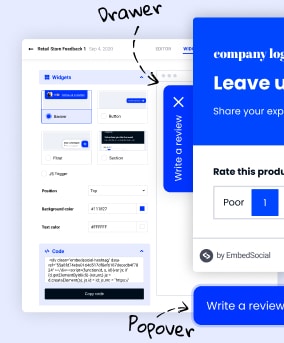
Build all your web forms for free
EmbedForms is the only form builder you will ever need to capture web leads, create surveys, or collect feedback on your website.
All PRO features | Cancel any time.
Why Marketing Surveys Are Important?
Marketing surveys and marketing research in general, are rightfully considered to be an essential part of every business for a few reasons such as:
Help you identify opportunities and threats
Conducting a marketing survey helps businesses to know in which direction they should move and what to avoid along the road.
The perfect example: coming across unreached segments, meaning people who might not know your brand, opportunities such as business partnerships and collaborations, and various ways to improve your product/service, meaning upsells to more customers.
Minimize risks
Well-done marketing research will provide you with a variety of data that will help you make better decisions and therefore, reduce the risks of failure at any given time.
The perfect example: expanding to new markets – and trust us when we say knowledge is power. The data you’ll collect will help you predict how well your products will sell regionally and whether that expansion is worth it or not.
Stay ahead of your competition
Keeping your eyes wide open and researching your competitors will help you stay ahead in the game. You could look into what they are doing, how they are progressing, what channels they are using, and how they are going with paid advertisements.
The perfect example: when conveying a survey about your competitor’s product, you can gain valuable insights about its least and most valuable features and stay ahead of them by improving your solution based on this data.
? Here’s a list with the best marketing tools and software, both paid and free that will help you along the road.
Connect with your audience
Researching and understanding your customers means only one thing in today’s world – you will be able to connect with your audience better and more effectively. Instead of using a one-size-fits-all approach based on data, you will be able to customize your message.
The perfect example: while doing a buyer persona survey, you will find out the demographic details of your customers plus their interests. According to this information, you could customize the message across all social media platforms – more friendly and easy-going on your Instagram and TikTok, professional and awareness-increasing on your LinkedIn profile.
Survey 1: Market research survey
Researching your market in order to get valuable insights and understand it, is key to every phase of developing and launching your product/service.
Let’s cover some basics before getting into how to do your own market research survey.
According to HubSpot’s team :
“ Market research is the process of gathering information about your target market and customers ” .
Market research can be done in various ways, and in our case via conducting surveys, so we could say – a market research survey is a list of questions answered by your customers/ or potential customers regarding various subjects.
Why do it: conducting this type of survey will not only help you understand your customers and the market you are entering, but it will also help you reach a specific audience, make better decisions, measure brand awareness, help you understand how to position your price on the market, gain insights on your product or a future product, and help you with your content creation and distribution.
Market Research Survey Examples:
- What is your age? What is your gender?
- What is your education level?
- Where do you live?
- What is your profession? What do you do for a living?
- What’s your household income and household size?
- What are your biggest challenges?
- What are your hobbies/interests? What do you do in your free time?
- What is most important to you?
- How do you get your information? What’s your most valuable and reliable source of information?
- How do you like to make purchases? Do you feel comfortable shopping online?
Keep in mind though that market research is a broader term, meaning there are a lot of example questions related to various sub-topics. It’s up to you to choose what part you want to focus on.
For example, besides doing regular marketing surveys, a few years ago, Starbucks created another domain with the goal of doing market research, where people could submit their ideas and proposals. MyStarbucksIdea.com , which is currently not operational, accepted 100 ideas from thousands of people worldwide and implemented them into their business. Ideas like adding vegan options to their menu, etc.

An interesting way to engage the audience, collect data, and do market research on the wants and needs of your customers. Here is a full video of this initiative:
Survey 2: Competitor research survey
Getting to know your competition might feel scary and intimidating, but by looking at the bigger picture, you will gain power and valuable perspective that will definitely help you in the long run.
Why do it : conducting such a survey will help you understand who your competitors are, how people perceive them against your brand/product/service, and how is your offer and price in comparison to your competitors, and ultimately help you with targeting new customers.
Competitor research survey examples:
- Have you heard of our company/brand?
- Have you purchased something from our company?
- If you did, how satisfied were you with your purchase? How long have you been a customer?
- If not, what was the reason?
- How likely are you to recommend our company to a friend?
- Have you heard of #name of a competitor?
- Have you purchased from #name of a competitor?
- What made you choose us over a competitor/ and vice versa?
- What do you wish our product/service had that it currently does not?
- What do you like most/least? How does your product/service fits into your workflow/meet your daily needs?
For example, the Swedish brand Happy Socks with e-mail marketing’s help and surveys are researching their competitors and the overall experience people had with purchasing on their website. To make their survey even more successful they are offering 25% off + free shipping.

Other things worth looking into are: how are your competitors attracting customers, how well are their social media channels performing, how much website traffic do they have and from what type of sources, which keywords are they ranking for, and with what type of content. Helpful tools: Google Trends , Semrush , and AnswerThePublic .
Survey 3: Buyer persona / Customer analysis survey
In the marketing world, buyer personas are fictional individuals that represent your ideal customer.
It’s a Stock image next to an imaginary name, personal information and goals, life challenges and interests, work title, skills and experience, and most importantly, how you fit into their life ( how your product incorporates into their lifestyle/ what problem does it solve ).
Why do it : doing a detailed customer analysis with a marketing survey will help you understand your customers’ needs and problems and empathize with them; based on the data, you will be able to tailor your marketing efforts, understand purchasing decisions, get some behavioral insights, and create more targeted content for every channel.
“In my experience, creating buyer personas and getting to know our (potential) customers was a game-changer. It allowed us to strategically plan our entire content marketing strategy. Across all of our channels, we started personalising the message we wanted to convey, and the content that was being published. This helped us increase the engagement across all channels, increase our organic blog traffic with relevant visitors, and of most importantly increase our sales”.
Customer analysis survey examples:
- Demographic questions such as: What’s your age, gender, educational background, and career path?
- What are your interests and hobbies? What do you do in your spare time?
- What company do you work for/in which industry/ and a number of employees?
- What are your job title and main responsibilities? Whom do you report to, and who reports to you? How is your work measured?
- What are your biggest challenges (both professionally and personally)? What triggers you to find a solution?
- What tools do you use at your job?
- How are you using our product/service/software, and what are your main objectives with it?
- What is the most common reason you’re not buying a certain product?
- How do you learn about new information, and which blogs/publications do you read? What’s your favorite social network?
- How do you purchase things? How do you search for information? How would you describe your last purchase?
Helpful tools when it comes to creating Buyer Persona from your conducted survey: Make My Persona .
An effective marketing survey that will help you to understand customer behavior is to create a very detailed and in-depth feedback form. See the example by Chipotle:
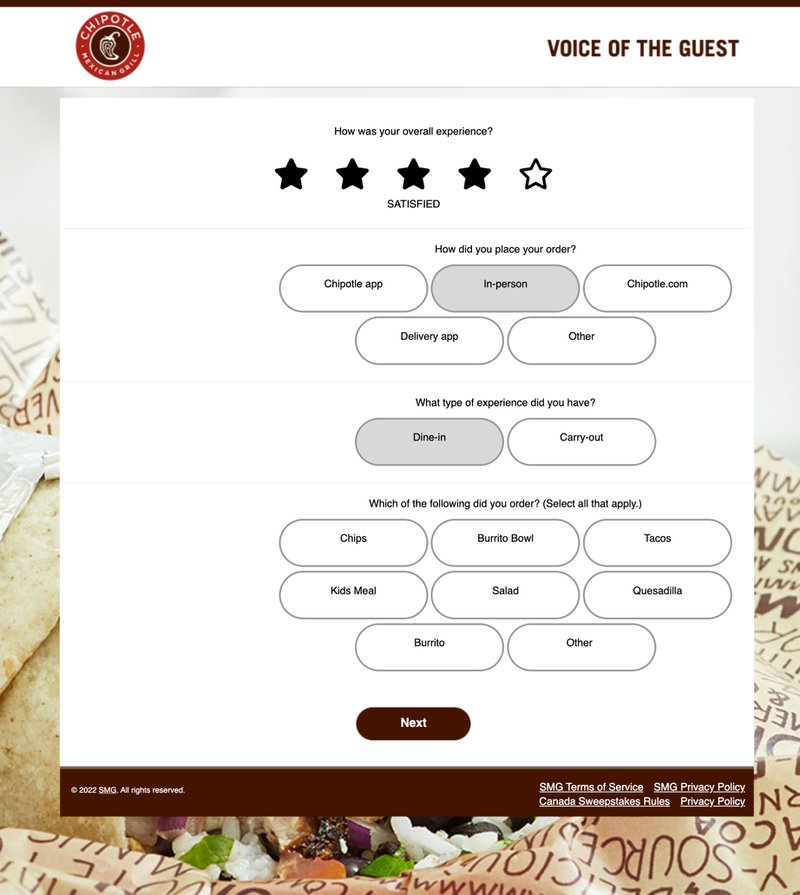
Survey 4: Brand awareness survey
How memorable is your brand? How well do your customers know your brand? How do your customers perceive your brand?
If you are looking into answering these questions and more, it’s about time you conduct a brand awareness survey.
Brand awareness is a combination of four things:
- brand recognition – how recognizable is your brand
- brand recall – how memorable is your brand, and how does your brand come to your customer’s mind
- brand identity – how well are your brand’s mission and vision understood
- brand image – the overall feel and opinion of your brand
Why do it ? Getting to know how your customers perceive your brand will help you improve your positioning on the market and, therefore, help you grow your business and increase your brand awareness and sales.
Take, for example, the everlasting battle between Coke and Pepsi ? – it is no longer a who’s got a better taste kinda battle, but instead who’s got a more loyal community.
Brand awareness survey examples:
- Which brands do you most commonly purchase products from?
- Which of the following brands do you recognize?
- If #name of the brand was a person, how would you describe it? What’s your opinion on it?
- How did you find out about #name of the brand ? How likely are you to recommend it to a friend or family?
- You have #a certain problem – what brand/company do you turn to?
- Which of the following statements do you associate with #name of the brand ?
- How could we make you loyal to our brand? What’s crucial to you?
- What’s the first thing when you think of #name of the brand?
- When was the last time you used the #name of the brand?
- How familiar are you with our brand?
Here are more questions and a premade brand awareness survey template you can start using right now:
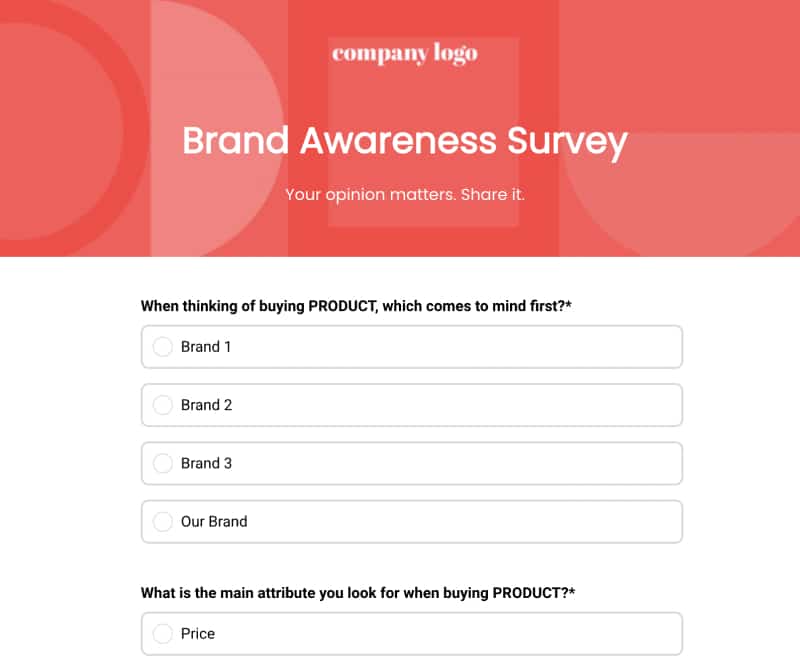
Survey 5: Product research survey
Launching a new product takes a lot of effort, money, and time but it also comes with a lot of uncertainty and fear of failure.
You never know whether the product will be a success or not, but there is something to do about your doubts – conduct a product research survey.
A product research survey can be both when launching a new product or when looking into improving an old one.
Why do it : it will help you evaluate your customer’s reaction and opinion regarding your new/improved product and, therefore, help you make better decisions about the product’s functionalities, features, and design.
Product research survey examples:
- How often do you use our product/service during the day/week/month?
- How long have you been using our product/service?
- How would you rate our product/service?
- What problems are you trying to solve with our product?
- What features are missing?
- Which features are most valuable to you?
- Which important features could be better/improved?
- How easy it is to use our product/rate on a scale from 0-10?
- How would you rate the value for money?
- Have you faced any problems while using our product/service?
For example, Alex Tooby wanted to make a pulse check of her audience to understand what kind of content (her type of product) they will want from her to create. It is a perfect marketing survey to see what her target audience needs so she can accommodate her services based on their actual needs.
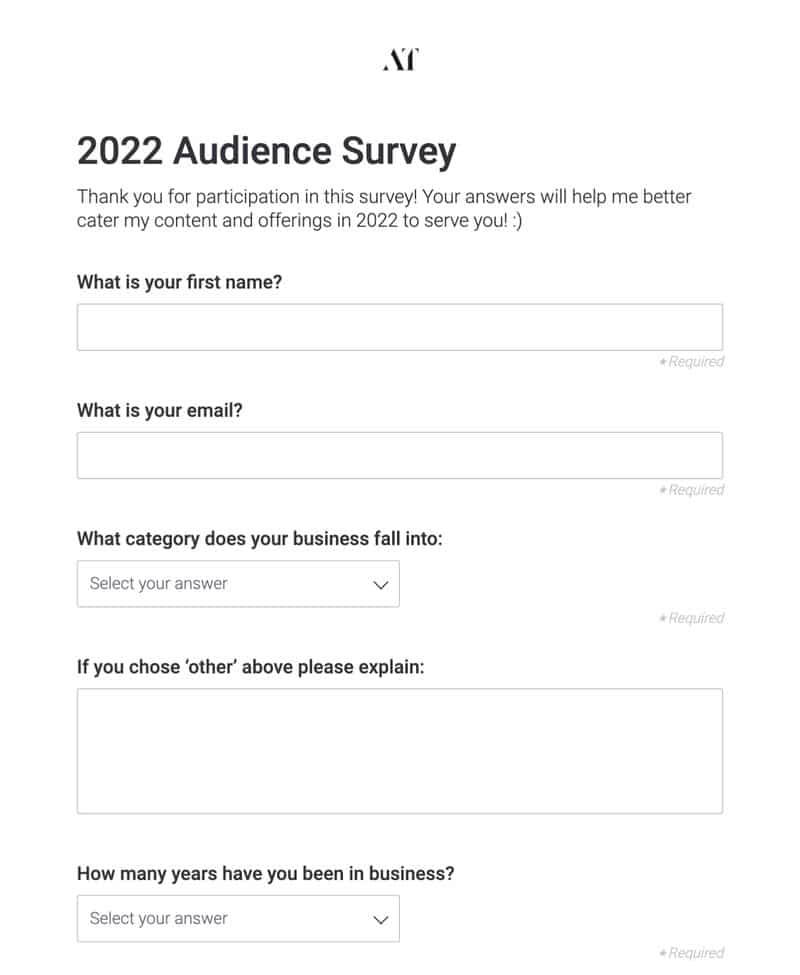
Steps to conduct a marketing survey
Now that you are aware of the most important types of marketing surveys, it’s only fair to move on to a practical step-by-step of how to conduct a single survey.
Step 1: Set a clear goal
Before starting to write those questions, think about a clear goal of why you’re doing the marketing survey.
Are you looking into expanding to other markets? Are you looking into creating and launching a new product or improving an old one? What exactly are you looking to find out by doing the survey?
Setting clear goals and intentions for the marketing survey will help you get the answers you need.
Step 2: Map out a workflow for the task
This is more of a technical thing to do – but nonetheless, it’s important. Make sure you establish a budget, choose what markets you want to survey, decide whether you’ll hire a market research company to assist you, and, based on your goals – choose what you’ll investigate.
Step 3: Choose a tool in which you’ll create the survey
Make sure you also put a lot of thought into how the marketing survey would look. You don’t want to overwhelm your target group with too many questions at once or have a survey with an inconvenient design.
Step 4: Collect and analyze the data, and lastly
Step 5: take action.
Based on your research findings and the initial goals, you can make a safe decision and choose a direction in which you want to “move”.
Free Marketing Survey Tools
Now that we’ve gone over every how and why, the only thing remaining are the tools with which you can create these surveys, and here are some free options:
- Google Forms – free, fast, and it even automatically saves your results to a Google Spreadsheet so you can analyze your results. There are versatile options for long and short answers, multiple-choice selections, dropdown options, the ability to add both images and videos, create your form as a quiz, etc.
- Microsoft Forms – favoring Microsoft over Google, Excel over Google Sheets? If so, do go with this form builder. It’s free, simple, and connected with Excel, which has more powerful data analytics functionalities.
- Jotform – is another free online survey builder which is most known for its huge forms library with approximately 10,000 surveys. The first five forms are free (everything above – they are charging $24 per month).
- EmbedForms – is an innovative solution that will not only help you create forms but also help you to transform those forms into widgets for your website. Besides being forever free, this builder tool is packed with helpful features such as an advanced drag and drop editor, conditional logic options to create a certain flow of your form, and an easy way to share your marketing survey results.
If you’re looking for more alternatives – here’s a list with more than 25+ Form Builder Tools .
Using surveys is an affordable and effective way to get valuable insights both for the market and your customers, so do make sure to make the most of it!
Now you have all the information needed, so there’s no need to spend additional time searching for the right questions; instead, you can only focus on getting that customer feedback and making better decisions based on data.
Need feedback forms for your website? Embed forms widgets on your website for only $4.99/month !
Table of contents: toggle table of content toggle, get started.
Aggregate user-generated content and display social proof on any website.
Co-Founder of EmbedSocial and Head of Growth. A previous owner of a Facebook Partner Company and a digital marketing agency. Marketing API geek and a Call of Duty fan.
- shares
- Pinterest 0
Related Articles

Related tutorials
Learn how to embed social media feeds from different platforms.
- Instagram feed for WordPress
- WordPress Facebook reviews
- Instagram stories for Webflow
- Instagram feed for Shopify
- Instagram feed for Webflow
- Squarespace Google reviews
- Social media feed for Webflow
- How to add Google reviews to website?
- Embed Google Reviews with photos
- Embed a Google reviews badge
- How to embed Facebook reviews?
- How to embed Airbnb reviews?
- How to embed Wall of love?
- How to embed Instagram feed?
- How to embed YouTube Shorts?
- How to embed TikTok feed?
- How to embed LinkedIn feed?
- How to embed Pinterest board?
- How to embed Instagram Reels?
- How to embed Facebook feed?
- How to Embed YouTube channel?
- How to embed Youtube playlist?
- How to embed Vimeo feed?
- Embed social media mentions
- Embed Instagram hashtag feed
- How to embed Instagram stories?
- How to embed Facebook albums?
Join 250,000+ websites that embed reviews & UGC widgets to sell more
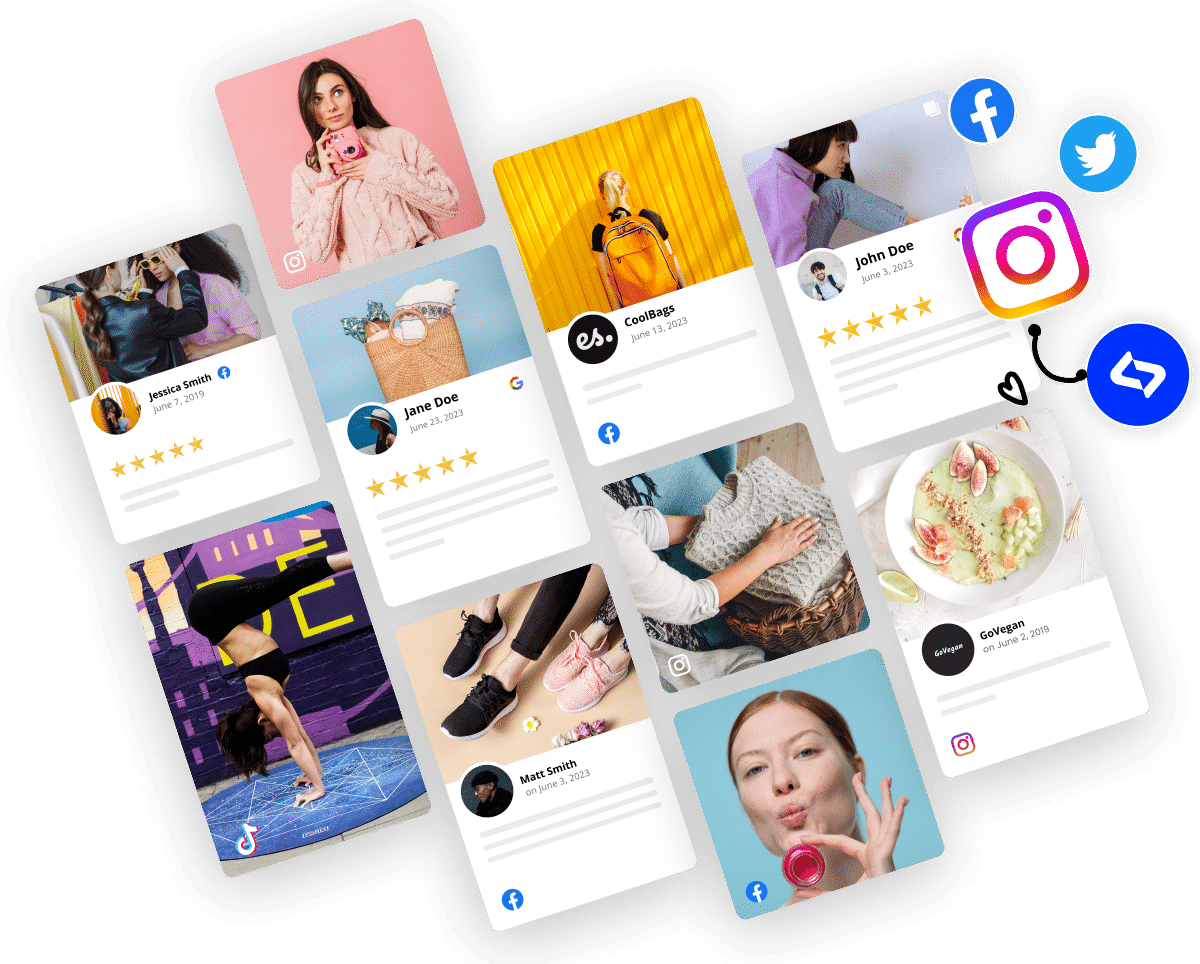
Privacy Overview
| Cookie | Duration | Description |
|---|---|---|
| cookielawinfo-checkbox-analytics | 11 months | This cookie is set by GDPR Cookie Consent plugin. The cookie is used to store the user consent for the cookies in the category "Analytics". |
| cookielawinfo-checkbox-functional | 11 months | The cookie is set by GDPR cookie consent to record the user consent for the cookies in the category "Functional". |
| cookielawinfo-checkbox-necessary | 11 months | This cookie is set by GDPR Cookie Consent plugin. The cookies is used to store the user consent for the cookies in the category "Necessary". |
| cookielawinfo-checkbox-others | 11 months | This cookie is set by GDPR Cookie Consent plugin. The cookie is used to store the user consent for the cookies in the category "Other. |
| cookielawinfo-checkbox-performance | 11 months | This cookie is set by GDPR Cookie Consent plugin. The cookie is used to store the user consent for the cookies in the category "Performance". |
| viewed_cookie_policy | 11 months | The cookie is set by the GDPR Cookie Consent plugin and is used to store whether or not user has consented to the use of cookies. It does not store any personal data. |
Small Business Trends
132 market research questions to ask.

Another market research example involves creating clear pictures of your ideal customers — called customer personas –for precise targeting. Other market research examples involve gathering feedback from existing customers to measure customer satisfaction.
Types of Market Research Questions
| Market Research Category | Description |
| Target Audience Description | Questions focused on understanding the size of the target market, customer personas, and key consumer trends. |
| Customer Survey Questions | Inquiries directed at customers to gather feedback on their experience, preferences, and satisfaction levels. |
| Pricing and Value Research | Queries aimed at assessing pricing strategies, value proposition, and competitor pricing in the market. |
| Product or Service Questions | Questions aimed at understanding product uniqueness, value proposition, and competitive offerings in the market. |
| Online Visibility Questions | Inquiries focused on assessing the online presence and visibility of the business in search engines and online platforms. |
| Reputation Management | Questions aimed at monitoring and managing the business's reputation by addressing reviews and customer feedback. |
| Messaging and Advertising | Inquiries focused on understanding customer needs, emotional triggers, and advertising effectiveness. |
Market Research Questions
Questions to ask customers.
Use the following as survey questions, either post sale or as post-support surveys. Or use these market research questions to conduct a focus group, interview individual customers, or engage potential customers during the sales process.
Pricing and Value
Doing research may also require you to gather information internally. For example, meet with Sales to discuss feedback they receive from possible customers.
Product or Service Questions
Online visibility questions, reputation management.
A big part of market research today is to find out what customers think and say about your business (and also about your competitors). You want answers to the following market research questions:
Messaging and Advertising
- Student Program
- Sign Up for Free

How to Create a Survey
Key marketing survey questions to ask your audience
Table of Contents
What are marketing surveys and why are they important?
Customer information surveys, customer satisfaction surveys, product research surveys, brand awareness surveys, churn surveys, content feedback surveys, contact information surveys.
- Jotform: The perfect solution for marketing surveys
Keeping customers happy is a goal of every business, regardless of its industry or size. To achieve this goal, it’s important to know what your customers think of your products and services, what they value most, and what they’re willing to pay, among other things. How can you learn this information? It’s simple — just ask your customers directly.
As long as you’re asking the right questions, marketing surveys can help you get the insights you need to serve your customers better and improve your products. In this article, we discuss the various goals of marketing surveys and the types of marketing survey questions they can include.
A marketing survey is a tool an organization uses to pose questions to its target audience. The information gathered can help a business learn more about its ideal customer. Those insights can then be used to stay competitive, grow the business, and increase customer satisfaction .
Marketing surveys are typically done online, though some organizations conduct surveys in person through small focus groups to gather more detailed insights. Online surveys are beneficial because they let organizations survey large groups of people in a short amount of time and on a small budget. Online marketing surveys also make it easier to analyze answers quickly, so a business can start applying those insights right away.
There are different types of marketing surveys, such as customer research surveys, product evaluation surveys, and customer satisfaction surveys. Companies tailor their marketing survey questions to achieve specific goals, which may include:
- Understanding their customers on a deeper level
- Learning what influences purchasing decisions
- Finding out about price sensitivities for specific products
- Getting insight into how to improve certain products and services
- Figuring out the details for a new marketing plan
- Learning customer expectations for specific product functions and features
Regardless of the goal, marketing surveys help businesses make well-informed decisions. This is the key reason to conduct a marketing survey. Whenever a business wants to try out a new product or service, improve its Net Promoter Score ® , or launch a product in a different market, surveying its target audience is a crucial step.
Without this essential feedback, a business may end up making the wrong decision, which wastes resources and hurts the bottom line.
Examples of marketing survey questions
The types of marketing survey questions to ask depends on your goal: Do you want to learn more about a new audience segment ? Do you want to know why certain customers stop making additional purchases after their first buying experience? Or is there something else you’d like to learn?
Take a look at the types of marketing surveys and sample questions below to determine if they will help you get the insight you need.
These surveys are designed to help you learn more about your customers and what they want to see in their products and services. These are sometimes called demographic surveys or market research surveys . Marketing survey questions for customer information surveys may include:
- What is the biggest frustration you have in relation to [x challenge]?
- How have you tried to solve [x challenge] in the past?
- Where do you typically like to shop for this product?
- Where do you live?
- What is your age group?
As the name suggests, customer satisfaction surveys are given to existing customers to learn how they feel about your organization and specific processes within it. This is a great way to figure out how you can improve in the area of customer service. These marketing survey questions may include:
- How would you characterize your last experience at our store?
- How would you rate your most recent interaction with our associates?
- Did our customer service meet your expectations?
- What is your main suggestion for improving our checkout process?
- How likely are you to recommend our business to someone else?
If you’re considering launching a new product or making adjustments to an existing product, conduct a product research survey before starting work on it. This way, you can incorporate the feedback into your development process. The survey can also be adjusted to learn more about services rather than products. These marketing survey questions may include:
- How often do you use this product?
- What is one thing that frustrates you about it?
- How much are you willing to pay for it?
- How would you rate its ease of use?
- If there is one thing you could change about this product, what would it be?
No matter your industry, you likely have competitors. A brand awareness survey can help your business determine the public’s perception of your brand in relation to similar brands. These marketing survey questions may include:
- When you think of this product, which brands come to mind?
- How did you hear about our brand?
- How would you describe our brand to someone who has never heard of it?
- Can you identify our logo from this lineup?
- What is the leading brand in this product category?
Everyone wants to retain their customers for the long term, but sometimes it’s just not possible. A churn survey helps you figure out why a customer no longer wants to do business with you so you can address problems and hopefully retain future customers. These marketing survey questions may include:
- What was the main reason for canceling your subscription?
- What alternative brand will you be choosing?
- Which expectations did we not meet for this product?
- What motivated you to sign on with our competitor?
- Would you consider buying our product if we made [x] improvement?
It’s important to know whether the marketing materials you’re putting out are having the intended effect on your target audience. From webinars to blogs to ads to websites, using content feedback surveys helps you figure out if your marketing methods are effective. These marketing survey questions may include:
- Did this webinar answer the questions you had about this product?
- Were you able to find the information you were looking for on our website?
- How often do you read our blog?
- Where did you see this ad?
- How often would you like to receive our online newsletter?
These types of surveys are fairly straightforward, but they’re important. They should be placed on your company website to gather contact details from leads. Having this information allows you to contact prospects later on and nurture them through the marketing and sales cycle. These marketing survey questions may include:
- What is your name?
- What is your email address?
- What is your phone number?
- What is your preferred method of communication?
- Would you like to sign up for our newsletter?
Jotform: The perfect solution for creating and distributing marketing surveys
Ready to learn more about your customer so you can provide them with exactly what they need? Jotform is the perfect solution for creating and distributing marketing surveys to your target audience. Our wide variety of fully customizable marketing survey templates give you a head start on fielding your survey.
Whether you want to learn how likely customers are to refer you to their friends or get more information about customer demographics, you’ll find a Jotform marketing survey template that’s right for you.
Photo by Jason Goodman on Unsplash
Net Promoter ® , NPS ® , NPS Prism ® , and the NPS-related emoticons are registered trademarks of Bain & Company, Inc., NICE Systems, Inc., and Fred Reichheld. Net Promoter Score SM and Net Promoter System SM are service marks of Bain & Company, Inc., NICE Systems, Inc., and Fred Reichheld.
Thank you for helping improve the Jotform Blog. 🎉
RECOMMENDED ARTICLES

14 best SurveyMonkey alternatives in 2024

How to add a signature in SurveyMonkey

How to make Google Forms anonymous

11 top survey incentive ideas

8 of the best WordPress survey plug-ins

How to turn survey results into a great presentation

How to create an inviting welcome screen for online forms

How to add a popup survey on your website

How to create an anonymous survey for employees

Ethnicity survey questions: Benefits and examples

What is a survey?

How to write good survey questions

50 mental health survey questions to ask employees

Top podcast survey questions to ask guests and listeners

How to analyze survey data

What is a good Net Promoter Score® (NPS®)?

What you need to know about SurveyMonkey pricing

What are the best website survey questions?

42 questions to ask in a depression survey

5 UX survey tools to help you create a winning user experience

How to use open-ended survey questions

4 tips for creating effective quantitative surveys

Basic product survey questions to ask customers

20 psychology survey questions to ask your clients

How to send Mailchimp surveys easily

10 of the best StrawPoll alternatives

How to write a survey introduction (plus examples)

6 effective ways to find survey participants

12 employee-of-the-month survey questions you should ask

8 leading Survicate alternatives for customer feedback in 2024

How to do a poll in Slack

65+ e-commerce survey questions for valuable business insights

How to send surveys: 7 survey distribution methods

How to improve survey accuracy

Types of survey bias and ways to avoid them

Offline surveys: How to collect data anywhere

5 types of questionnaires

Top 3 SurveySparrow alternatives in 2024

5 tips for creating great qualitative surveys

How to ask someone to fill out a survey

Top 9 Qualaroo alternatives in 2024

10 questions to ask in your membership survey

Yes-or-no questions in online forms and surveys

Parent survey questions: What to ask and why

Top 21 brand survey questions

A Guide to Creating the Perfect Survey Form

Cybersecurity questionnaires: How to assess online threats
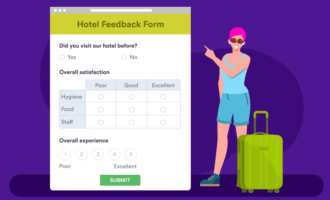
47 excellent customer service survey questions

9 examples of ranking survey questions

How is public opinion measured with surveys?

Using survey logic to elicit better survey responses

Top survey topics and ideas

How to increase survey response rate

SurveyMonkey vs Alchemer (Formerly SurveyGizmo)

14 political survey questions to gauge public opinion

Qualtrics vs SurveyMonkey: Which should you choose?

Top 15 employee pulse survey tools

Closed-ended questions: Definition and examples

How to create a survey in Google Forms

How to create a survey on Facebook

How to create an NPS® survey email that gets results

CRM survey benefits, best practices, and example questions

25 post-training survey questions to ask employees

How to conduct an online survey

20 essential human resources (HR) survey questions

20 business survey questions to ask your customers

15 of the best Refiner.io alternatives in 2024

Qualitative vs quantitative questions: What you need to know

80 survey question examples and when to use them

Top 8 QuestionPro alternatives in 2024

30 insightful hotel survey questions

16 best survey tools worth checking out

How to write unbiased survey questions

One question at a time: The best strategy for a survey

How many questions to include in an online survey

Survicate vs SurveyMonkey: Comparing online survey platforms

How to automate survey follow-up emails

Top 14 demographic survey questions to ask

How to embed a survey in a website

10 AidaForm alternatives that make data collection a breeze in 2024

How to set up and send a Constant Contact survey

8 types of poll questions to engage your online audience

Announcing Jotform’s free Student Survey Program

Survey data collection: 5 best practices

20 religion survey questions to ask your church community

6 EmailMeForm alternatives to build powerful surveys in 2024

Top 7 KwikSurveys alternatives in 2024

21 website usability survey questions to ask your user

Social media survey questions: Examples and best practices

How to calculate the Net Promoter Score® (NPS®)

Top 5 Qualtrics alternatives for 2024

Survey vs questionnaire: Which one should you use for your next project?

5 ways to improve your online surveys

How to add a “poor to excellent” scale to your surveys

How to create an employee pulse survey

Top 3 Key Survey alternatives in 2024

Top diversity and inclusion questions to ask employees

How to avoid survey fatigue

The 28 best post-purchase survey questions to ask your customers
Send Comment :
Root out friction in every digital experience, super-charge conversion rates, and optimize digital self-service
Uncover insights from any interaction, deliver AI-powered agent coaching, and reduce cost to serve
Increase revenue and loyalty with real-time insights and recommendations delivered to teams on the ground
Know how your people feel and empower managers to improve employee engagement, productivity, and retention
Take action in the moments that matter most along the employee journey and drive bottom line growth
Whatever they’re are saying, wherever they’re saying it, know exactly what’s going on with your people
Get faster, richer insights with qual and quant tools that make powerful market research available to everyone
Run concept tests, pricing studies, prototyping + more with fast, powerful studies designed by UX research experts
Track your brand performance 24/7 and act quickly to respond to opportunities and challenges in your market
Explore the platform powering Experience Management
- Free Account
- Product Demos
- For Digital
- For Customer Care
- For Human Resources
- For Researchers
- Financial Services
- All Industries
Popular Use Cases
- Customer Experience
- Employee Experience
- Employee Exit Interviews
- Net Promoter Score
- Voice of Customer
- Customer Success Hub
- Product Documentation
- Training & Certification
- XM Institute
- Popular Resources
- Customer Stories
- Artificial Intelligence
- Market Research
- Partnerships
- Marketplace
The annual gathering of the experience leaders at the world’s iconic brands building breakthrough business results, live in Sydney.
- English/AU & NZ
- Español/Europa
- Español/América Latina
- Português Brasileiro
- REQUEST DEMO
- Experience Management
- Questionnaires Design
Try Qualtrics for free
The ultimate guide to questionnaires.
15 min read The written questionnaire is the heart and soul of any survey research project. Whether you conduct your survey using an online questionnaire, in person, by email or over the phone, the way you design your questionnaire plays a critical role in shaping the quality of the data and insights that you’ll get from your target audience. Keep reading to get actionable tips.
What is a questionnaire?
A questionnaire is a research tool consisting of a set of questions or other ‘prompts’ to collect data from a set of respondents.
When used in most research, a questionnaire will consist of a number of types of questions (primarily open-ended and closed) in order to gain both quantitative data that can be analysed to draw conclusions, and qualitative data to provide longer, more specific explanations.
A research questionnaire is often mistaken for a survey – and many people use the term questionnaire and survey, interchangeably.
But that’s incorrect.
Which is what we talk about next.
Get started with our free survey maker with 50+ templates
Survey vs. questionnaire – what’s the difference?
Before we go too much further, let’s consider the differences between surveys and questionnaires.
These two terms are often used interchangeably, but there is an important difference between them.
Survey definition
A survey is the process of collecting data from a set of respondents and using it to gather insights.
Survey research can be conducted using a questionnaire, but won’t always involve one.
Questionnaire definition
A questionnaire is the list of questions you circulate to your target audience.
In other words, the survey is the task you’re carrying out, and the questionnaire is the instrument you’re using to do it.
By itself, a questionnaire doesn’t achieve much.
It’s when you put it into action as part of a survey that you start to get results.
Advantages vs disadvantages of using a questionnaire
While a questionnaire is a popular method to gather data for market research or other studies, there are a few disadvantages to using this method (although there are plenty of advantages to using a questionnaire too).
Let’s have a look at some of the advantages and disadvantages of using a questionnaire for collecting data.
Advantages of using a questionnaire
1. questionnaires are relatively cheap.
Depending on the complexity of your study, using a questionnaire can be cost effective compared to other methods.
You simply need to write your survey questionnaire, and send it out and then process the responses.
You can set up an online questionnaire relatively easily, or simply carry out market research on the street if that’s the best method.
2. You can get and analyse results quickly
Again depending on the size of your survey you can get results back from a questionnaire quickly, often within 24 hours of putting the questionnaire live.
It also means you can start to analyse responses quickly too.
3. They’re easily scalable
You can easily send an online questionnaire to anyone in the world and with the right software you can quickly identify your target audience and your questionnaire to them.
4. Questionnaires are easy to analyse
If your questionnaire design has been done properly, it’s quick and easy to analyse results from questionnaires once responses start to come back.
This is particularly useful with large scale market research projects.
Because all respondents are answering the same questions, it’s simple to identify trends.
5. You can use the results to make accurate decisions
As a research instrument, a questionnaire is ideal for commercial research because the data you get back is from your target audience (or ideal customers) and the information you get back on their thoughts, preferences or behaviours allows you to make business decisions.
6. A questionnaire can cover any topic
One of the biggest advantages of using questionnaires when conducting research is (because you can adapt them using different types and styles of open ended questions and closed ended questions) they can be used to gather data on almost any topic.
There are many types of questionnaires you can design to gather both quantitative data and qualitative data – so they’re a useful tool for all kinds of data analysis.
Disadvantages of using a questionnaire
1. respondents could lie.
This is by far the biggest risk with a questionnaire, especially when dealing with sensitive topics.
Rather than give their actual opinion, a respondent might feel pressured to give the answer they deem more socially acceptable, which doesn’t give you accurate results.
2. Respondents might not answer every question
There are all kinds of reasons respondents might not answer every question, from questionnaire length, they might not understand what’s being asked, or they simply might not want to answer it.
If you get questionnaires back without complete responses it could negatively affect your research data and provide an inaccurate picture.
3. They might interpret what’s being asked incorrectly
This is a particular problem when running a survey across geographical boundaries and often comes down to the design of the survey questionnaire.
If your questions aren’t written in a very clear way, the respondent might misunderstand what’s being asked and provide an answer that doesn’t reflect what they actually think.
Again this can negatively affect your research data.
4. You could introduce bias
The whole point of producing a questionnaire is to gather accurate data from which decisions can be made or conclusions drawn.
But the data collected can be heavily impacted if the researchers accidentally introduce bias into the questions.
This can be easily done if the researcher is trying to prove a certain hypothesis with their questionnaire, and unwittingly write questions that push people towards giving a certain answer.
In these cases respondents’ answers won’t accurately reflect what is really happening and stop you gathering more accurate data.
5. Respondents could get survey fatigue
One issue you can run into when sending out a questionnaire, particularly if you send them out regularly to the same survey sample, is that your respondents could start to suffer from survey fatigue.
In these circumstances, rather than thinking about the response options in the questionnaire and providing accurate answers, respondents could start to just tick boxes to get through the questionnaire quickly.
Again, this won’t give you an accurate data set.
Questionnaire design: How to do it
It’s essential to carefully craft a questionnaire to reduce survey error and optimise your data . The best way to think about the questionnaire is with the end result in mind.
How do you do that?
Start with questions, like:
- What is my research purpose ?
- What data do I need?
- How am I going to analyse that data?
- What questions are needed to best suit these variables?
Once you have a clear idea of the purpose of your survey, you’ll be in a better position to create an effective questionnaire.
Here are a few steps to help you get into the right mindset.
1. Keep the respondent front and centre
A survey is the process of collecting information from people, so it needs to be designed around human beings first and foremost.
In his post about survey design theory, David Vannette, PhD, from the Qualtrics Methodology Lab explains the correlation between the way a survey is designed and the quality of data that is extracted.
“To begin designing an effective survey, take a step back and try to understand what goes on in your respondents’ heads when they are taking your survey.
This step is critical to making sure that your questionnaire makes it as likely as possible that the response process follows that expected path.”
From writing the questions to designing the survey flow, the respondent’s point of view should always be front and centre in your mind during a questionnaire design.
2. How to write survey questions
Your questionnaire should only be as long as it needs to be, and every question needs to deliver value.
That means your questions must each have an individual purpose and produce the best possible data for that purpose, all while supporting the overall goal of the survey.
A question must also must be phrased in a way that is easy for all your respondents to understand, and does not produce false results.
To do this, remember the following principles:
Get into the respondent’s head
The process for a respondent answering a survey question looks like this:
- The respondent reads the question and determines what information they need to answer it.
- They search their memory for that information.
- They make judgments about that information.
- They translate that judgment into one of the answer options you’ve provided. This is the process of taking the data they have and matching that information with the question that’s asked.
When wording questions, make sure the question means the same thing to all respondents. Words should have one meaning, few syllables, and the sentences should have few words.
Only use the words needed to ask your question and not a word more .
Note that it’s important that the respondent understands the intent behind your question.
If they don’t, they may answer a different question and the data can be skewed.
Some contextual help text, either in the introduction to the questionnaire or before the question itself, can help make sure the respondent understands your goals and the scope of your research.
Use mutually exclusive responses
Be sure to make your response categories mutually exclusive.
Consider the question:
What is your age?
Respondents that are 31 years old have two options, as do respondents that are 40 and 55. As a result, it is impossible to predict which category they will choose.
This can distort results and frustrate respondents. It can be easily avoided by making responses mutually exclusive.
The following question is much better:
This question is clear and will give us better results.
Ask specific questions
Nonspecific questions can confuse respondents and influence results.
Do you like orange juice?
- Like very much
- Neither like nor dislike
- Dislike very much
This question is very unclear. Is it asking about taste, texture, price, or the nutritional content? Different respondents will read this question differently.
A specific question will get more specific answers that are actionable.
How much do you like the current price of orange juice?
This question is more specific and will get better results.
If you need to collect responses about more than one aspect of a subject, you can include multiple questions on it. (Do you like the taste of orange juice? Do you like the nutritional content of orange juice? etc.)
Use a variety of question types
If all of your questionnaire, survey or poll questions are structured the same way (e.g. yes/no or multiple choice) the respondents are likely to become bored and tune out. That could mean they pay less attention to how they’re answering or even give up altogether.
Instead, mix up the question types to keep the experience interesting and varied. It’s a good idea to include questions that yield both qualitative and quantitative data.
For example, an open-ended questionnaire item such as “describe your attitude to life” will provide qualitative data – a form of information that’s rich, unstructured and unpredictable. The respondent will tell you in their own words what they think and feel.
A quantitative / close-ended questionnaire item, such as “Which word describes your attitude to life? a) practical b) philosophical” gives you a much more structured answer, but the answers will be less rich and detailed.
Open-ended questions take more thought and effort to answer, so use them sparingly. They also require a different kind of treatment once your survey is in the analysis stage.
3. Pre-test your questionnaire
Always pre-test a questionnaire before sending it out to respondents. This will help catch any errors you might have missed. You could ask a colleague, friend, or an expert to take the survey and give feedback. If possible, ask a few cognitive questions like, “how did you get to that response?” and “what were you thinking about when you answered that question?” Figure out what was easy for the responder and where there is potential for confusion. You can then re-word where necessary to make the experience as frictionless as possible.
If your resources allow, you could also consider using a focus group to test out your survey. Having multiple respondents road-test the questionnaire will give you a better understanding of its strengths and weaknesses. Match the focus group to your target respondents as closely as possible, for example in terms of age, background, gender, and level of education.
Note: Don’t forget to make your survey as accessible as possible for increased response rates.
Questionnaire examples and templates
There are free questionnaire templates and example questions available for all kinds of surveys and market research, many of them online. But they’re not all created equal and you should use critical judgement when selecting one. After all, the questionnaire examples may be free but the time and energy you’ll spend carrying out a survey are not.
If you’re using online questionnaire templates as the basis for your own, make sure it has been developed by professionals and is specific to the type of research you’re doing to ensure higher completion rates. As we’ve explored here, using the wrong kinds of questions can result in skewed or messy data, and could even prompt respondents to abandon the questionnaire without finishing or give thoughtless answers.
You’ll find a full library of downloadable survey templates in the Qualtrics Marketplace , covering many different types of research from employee engagement to post-event feedback . All are fully customisable and have been developed by Qualtrics experts.
Related resources
Best survey software 16 min read, survey vs questionnaire 12 min read, close-ended questions 7 min read, likert scales 14 min read, response bias 13 min read, double barrelled questions 11 min read, survey research 15 min read, request demo.
Ready to learn more about Qualtrics?
6 Market Research Methods & What They Reveal About Your Audience
Market research, when it’s done well, makes sure that you step into any market with your eyes wide open and a strong understanding of what your target customers will best respond to.
But how do you get market research right? What methods should you use, and how can you entice your target market to talk to you?
Today, we’re going to go through everything you need to know about market research, from why it’s important, to the best methods for your brand.
Table of Contents
Why marketers should care about market research
Qualitative vs quantitative research method, 1. consumer behavior observation, 2. market and competitive analysis, social media listening and analytics with keyhole, 4. surveys and online polls, 5. focus groups and market testing, hashtag analytics and tracking with keyhole, final thoughts, 1. what are primary and secondary research methods, 2. what are paid market research surveys, 3. what is the difference between market and user research, 4. what are common mistakes to avoid in market research.
Market research is vital for everything from pitching your marketing messaging to building customer loyalty. Some benefits of good market research include:
- Helping your brand to give customers exactly what they want.
- Strengthening your position in the market.
- Minimizes investment risk by helping to inform decisions.
- Identifies threats to avoid and opportunities to grab.
- Gives insight into competitor strengths and weaknesses.
Qualitative research has qualifiers. Qualifiers are markers of confident uncertainty. Qualifiers are necessary when data is opinion-based, or isn’t underpinned by numerical data.
So, qualitative research tends to deal in opinions and descriptions. In market research terms, qualitative data tends to come in the form of customer opinions and feedback. It’s gathered using open-ended questions such as “What do you like about our product?”.
Qualitative data is very useful for understanding nuances that can’t be revealed by numerical data. That being said, it can be difficult, costly, and time-consuming both to gather and to analyze.
Quantitative data, by contrast, deals in quantities. Quantitative data is all about numbers. Numerical data based on metrical analysis forms the backbone of quantitative market research. Quantitative customer surveys will use answer formats that can easily be entered into a graph or chart, such as “Yes/No” answers or “Rate X on a scale of 1 to 5”.
6 Market research methods to gather audience insights
The best market research will combine qualitative and quantitative methods for a complete, nuanced, and easily understandable picture of their target market and its needs.
When done well, consumer behavior observation takes a ‘fly on the wall’ approach to consumers. As the name suggests, it involves monitoring consumers to see how they behave in natural settings.
If you run a bricks and mortar shop, consumer observation would involve watching how your customers behave in your store. You might note down things like the displays that catch their eye, which products they linger over, the route they take around the store, how they respond to atmospheric features like scent, lighting, and music. After a while, behavioral patterns will emerge which will help you to arrange your store and products for best effect.
In an online context, consumer behavior observation will rely more on behavioral analytics. For example, you might look for patterns in page traffic, bounce rates, purchasing behavior, and so on. This will yield valuable insights into the pages and products that catch consumers’ eyes, elements of your website they find frustrating, and so on.
Market and competitive analysis involves looking at your wider market context and taking a peek at how your competitors are faring.
Competitive analysis is a very strategic way to improve your position. Learning more about your competitors and the ways that they engage your primary market helps you to gain a competitive advantage, both by utilizing their more successful strategies (but better!) and differentiating yourself so that you stand out.
In order to analyze your competitors, you need to understand your market. So, before you start, define your primary and secondary markets, including the products you’re pitching at them, the consumers that occupy them, and the competitors also in that space.
Then, you can start competitor analysis. This can involve everything from signing up to competitor marketing materials to reading their case studies, looking up their publically-available metrics, and monitoring their brand mentions.
Less glamorous brands that struggle to make a splash on social media can benefit a lot from market and competitive analysis, especially when it comes to things like SEO. For example, smaller SaaS brands are unlikely to get a statistically significant amount of brand mentions on platforms like Facebook. But they could benefit from reading a relevant SaaS SEO case study.
3. Social media listening
Social media listening is a powerful way to gain deeper insights about your brand and how your target audience thinks about you. Put very simply, social media listening involves monitoring social platforms for mentions of your brands, engagement with your brand materials, and so on.
Social media is a very qualitative market, so it’s worth bearing in mind that a lot of what you hear will be opinion. Rather than taking everything you learn personally, look for broad patterns in your brand mentions. For example, if a lot of people are raving about a certain feature of your product, build on that in your next marketing campaign.
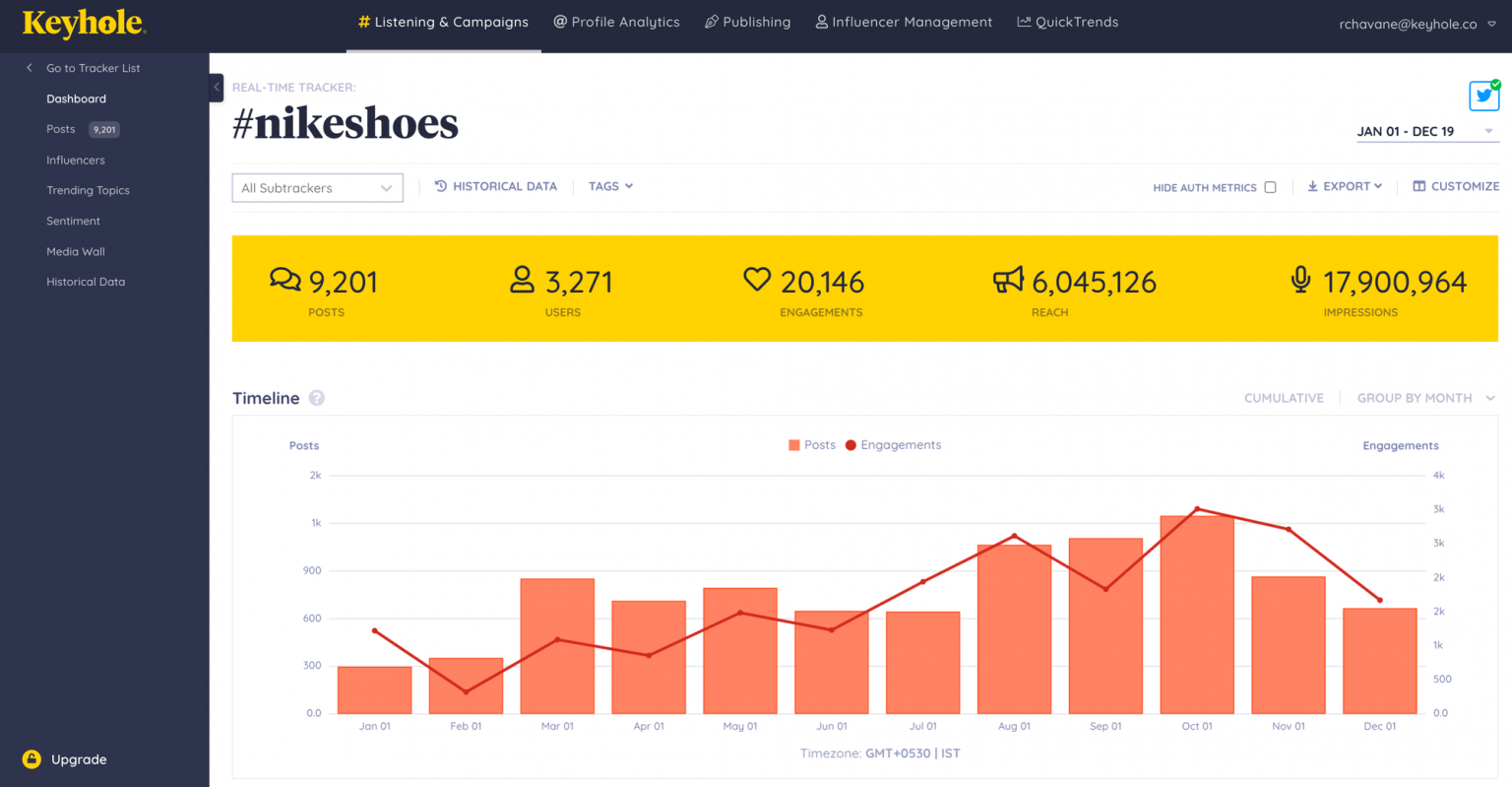
Social media listening is where Keyhole comes into its own. Keyhole’s Social Listening Analytics Suite will constantly comb the internet and log all mentions of your brand. You can use this to easily see how widespread your brand mentions are, and to take the temperature of discourse about your brand.
Keyhole will also alert you if something changes in your brand mentions. For example, if you suddenly get a spike in mentions and coverage, Keyhole will let you know.
This allows you to take action quickly. If you’re getting traction for good reasons, you can leap on the opportunity. If it’s for bad reasons, you can quickly dive into damage limitation mode and save your brand from a PR disaster.
Social listening is one of the very best ways to understand how your brand is perceived by your audience. With Keyhole, you won’t miss a single mention.
Online surveys and polls are a good way to gain nuanced consumer insights and get a read on general customer satisfaction. There are various different types of surveys, designed for both qualitative and quantitative research.
Many brands use popups to offer quick surveys to customers based on their experience of the product, site etc. Popup surveys are usually quick and easy for customers to complete, and they’re a good way to get a lot of data very quickly. That being said, some consumers find popup surveys frustrating, and they do add an extra layer of friction to your site experience.
Longer-form questions and surveys allow you to get detailed information from your target customers on a wide range of things. However, it’s harder to get responses to these surveys as they take up more time. In order to encourage people to take more detailed surveys, some brands offer incentives like gift cards or entry into a prize draw.
This method involves bringing people who fit your target audience profile together and holding in-depth interviews and discussions about your product, your marketing messages, your competitors, and so on.
Focus group discussions can be very productive. People will reveal personal insights about your product/service and what they’re looking for that would be hard to glean through other market research techniques.
Market testing is a form of market research that sometimes occurs in focus group settings. This involves handing out product samples to your focus group and asking for feedback. It could also involve showing your customers different types of marketing content and asking them to rate or comment on them.
Market testing in a focus group context gives you the opportunity to observe how customers interact with your product or content, and draw insights that might not otherwise be possible. For example, you can observe non-verbal cues like frowning or enthusiastically grabbing a product. These cues might indicate discomfort or delight in ways that a survey can’t express.
6. Online market monitoring
Online market monitoring involves things like following market trends, perusing publically available sales data, watching follower counts, observing fluctuations in customer behavior, and so on.
Online market monitoring is particularly useful for quickly spotting and grabbing trends and opportunities. For example, many successful B2B SEO strategies involve closely monitoring the B2B market and taking advantage of keyword trends as soon as they appear. As B2B SEO is hard to achieve through means like focus groups and online surveys, online market monitoring is crucial to nail this tricky market.
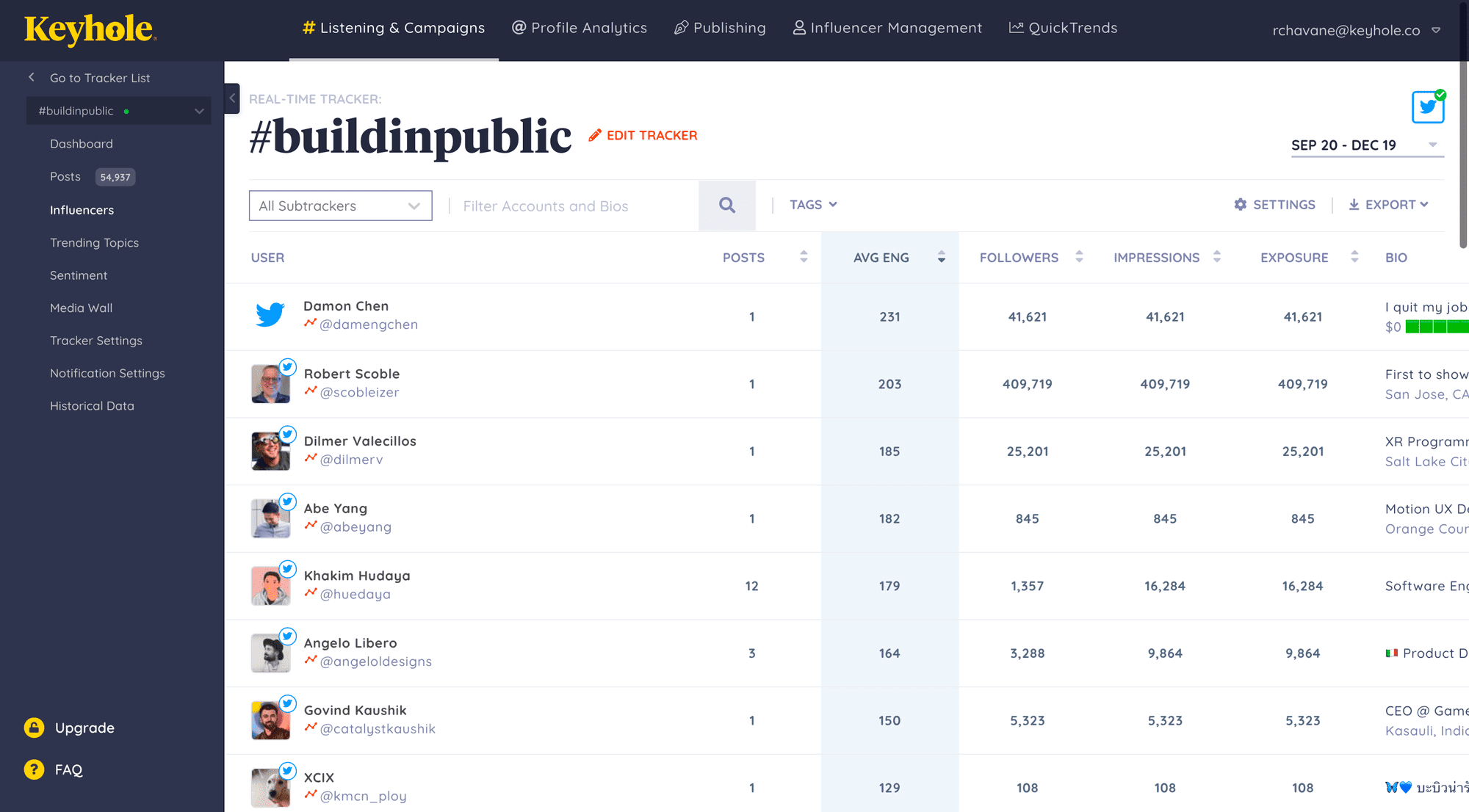
You need a tool like Keyhole to get online market monitoring right. Keyhole’s hashtag analytics and tracking helps you to effortlessly measure every campaign you’re running, across every social platform. It will tell you what’s working, what isn’t, and what trends you could take advantage of.
And that’s not all. Keyhole can generate great-looking reports on your online monitoring with just a few clicks. This is great for seeing success trends at a glance and sharing them with stakeholders.
A good understanding of the market gives you a huge competitive advantage. But understanding doesn’t happen automatically. In order to gain the actionable insights you need, market research is a must.
Keeping track of your market, your target customers, and the ever-changing trends you could use to your advantage. It’s important to conduct regular market research. It’s also a good idea to monitor markets on an ongoing basis.
This is where tools like Keyhole come in. With Keyhole, you can keep close tabs on everything from social media engagement to brand mentions. It’s perfect for social listening and audience analytics. Why not get in touch today and find out what Keyhole can do for you?
Related Articles
Best Practices For Integrating Email Marketing & Social Media Analytics
How To Use User Generated Content To Bring More Customers
Frequently Asked Questions
Primary research involves getting data directly from the originator. For example, surveys and focus groups are primary research methods because they involve asking people directly for their own opinions and experiences. Secondary research takes data from a third party source. For example, online market monitoring is usually secondary research, because it uses pre-existing data and analytics gathered by digital platforms.
Paid market research involves rewarding people for completing market research surveys. Monetary incentives are a great way to encourage people to take market research surveys. It also allows you to create longer, more detailed surveys: people are more likely to spend time and effort on a survey they're getting paid for.
Market research studies a broad swathe of consumer behaviors, trends, and needs. User research is more focused on the specific needs and behaviors of product users.
Common market research mistakes include: -Not having clear research goals from the outset. -Asking the wrong questions. -Speaking to the wrong people. -Picking the wrong consumer sample. -Not analyzing your results properly. -Presenting your findings poorly.

An official website of the United States government
Here's how you know
Official websites use .gov A .gov website belongs to an official government organization in the United States.
Secure .gov websites use HTTPS A lock ( Lock Locked padlock ) or https:// means you’ve safely connected to the .gov website. Share sensitive information only on official, secure websites.

News Release FHFA and CFPB Release Updated Data from the National Survey of Mortgage Originations for Public Use
Joint Release
Consumer Financial Protection Bureau
Federal Housing Finance Agency
Washington, D.C. – The Federal Housing Finance Agency (FHFA) and the Consumer Financial Protection Bureau (CFPB) today published updated loan-level data for public use collected through the National Survey of Mortgage Originations (NSMO). The data also provide updated mortgage performance and credit information for a nationally representative sample of mortgage borrowers from 2013 to 2021.
Since 2014, FHFA and CFPB have sent quarterly surveys to borrowers who recently obtained mortgages. These surveys gather feedback on borrowers’ experiences during the mortgage process, their perceptions of the mortgage market, and their future expectations. Today’s release adds one additional year of new mortgage data through 2021.
“The NSMO provides a unique view of mortgage borrowers, helping illustrate underlying trends that can identify emerging issues in mortgage lending,” said Saty Patrabansh, FHFA Associate Director for the Office of Data and Statistics. “The data released today will provide insights into consumer behavior and borrowers’ experiences, leading to better analysis of how mortgage processes could be improved for future borrowers.”
“This year’s survey provides new insights into appraisal satisfaction and willingness to move for borrowers with new mortgages," said Jason Brown, CFPB Assistant Director for Research. “With the release of the public use file, we invite researchers to help us understand the challenges facing consumers and help us to find ways to improve the market for consumers.”
Today’s release features data on three new survey questions first asked of mortgage borrowers in 2021.
- When asked about appraisal satisfaction, 70 percent of respondents reported being very satisfied with their property appraisal, 23 percent reported being somewhat satisfied, and 6 percent were not at all satisfied.
- When questioned on their willingness to move from their primary residence, 50 percent of respondents reported being unwilling to move, 20 percent were unsure about moving, 25 percent were willing and able to move, and 5 percent were willing but unable to move.
- When prompted to select from a list of factors important to borrowers choosing a mortgage lender/broker, 8 percent of respondents selected accommodations for people with disabilities as an important factor in their choice.
The NSMO is a component of the National Mortgage Database (NMDB®), the first comprehensive repository of detailed mortgage loan information designed to support policymaking and research efforts and to help regulators better understand emerging mortgage and housing market trends.
The NMDB is designed to fulfill the requirements of the Housing and Economic Recovery Act (HERA) and the Dodd-Frank Wall Street Reform and Consumer Protection Act (Dodd-Frank Act). HERA mandated that FHFA conduct a monthly mortgage survey of all residential mortgages, including those not eligible for purchase by Fannie Mae and Freddie Mac. The Dodd-Frank Act mandated that CFPB monitor the primary mortgage market, in part through the use of the survey data.
Access the NSMO Public Use File
The Federal Housing Finance Agency regulates Fannie Mae, Freddie Mac, and the 11 Federal Home Loan Banks. These government-sponsored enterprises provide more than $8.4 trillion in funding for the U.S. mortgage markets and financial institutions. Additional information is available at www.FHFA.gov , on Twitter @FHFA , YouTube , Facebook, and LinkedIn .
Contacts: MediaInq[email protected]

IMAGES
VIDEO
COMMENTS
The questionnaire is divided into 3 distinct parts: 1) the introduction, 2) the questions specific to the market research, and 3) the collection of information on the respondent's profile. 5 questions are recurrent in any market research questionnaire: screening questions, buying habits, needs, buying intentions, and pricing.
Learn how to write and run a market research survey to collect key information about your target market and audience. See examples of different types of surveys, tips for designing and distributing them, and a template to get started.
Market research (also called marketing research) is the action or activity of gathering information about market needs and preferences. This helps companies understand their target market — how the audience feels and behaves. For example, this could be an online questionnaire, shared by email, which has a set of questions that ask an audience ...
3 tips for better market research questionnaires. 1. Survey outside of your customers. Getting feedback from your current customers is valuable. But to identify new opportunities that ultimately grow your business, you'll want to collect opinions from your entire target market. 2.
LEARN ABOUT: Dealership Marketing Strategies & Tips. For example: A customer survey on market research of an existing product line that focuses on the usefulness of specific features in a product line. Based on the feedback received from this survey, a business can now decide which features to invest and enhance/improve, and which features to ...
Market research is an essential part of finding answers to your questions. For this reason, market research surveys have a big importance. So, market study survey questions, too.These types of questions help you get essential data about the target audience, conduct competitive analysis, get new ones, or protect existing customers.. We have gathered the most essential data to help you gather ...
Types of Data. Market Research Template. Start with a research survey template. Definition: Market research surveys are a tool used to collect information about a target market. These surveys allow businesses to understand market needs and preferences. Your company can offer better products or services by understanding your target market.
A questionnaire is defined a market research instrument that consists of questions or prompts to elicit and collect responses from a sample of respondents. This article enlists 21 questionnaire templates along with samples and examples. It also describes the different types of questionnaires and the question types that are used in these questionnaires.
Now let's check out the market research survey questions examples. There are six major types of market research questions. For knowing the demography. To understand brand perception. For collecting user feedback on your product or service. For competitive analysis. To prioritize product development.
A SurveyMonkey market research questionnaire template is an excellent place to start. But that's not where it ends. Each of our templates can be customised, meaning you can use the wording and questions most relevant to your organisation. And if you're worried about having enough people to send your questionnaire out to, worry no more!
Learn how to conduct market research for different purposes and get useful insights from your target market. See sample questions for product, customer and client market research and how to create an online questionnaire with Formplus.
Surveys. 11 Market Survey Template + [Question Examples] One of the many ways to gather information about customers is through a market research survey. A market research survey, thus, is an affordable and reliable way for organizations to collect useful information from prospective consumers and target markets.
However, all questions must serve a purpose. In this section, we divide survey questions into nine categories and include the best survey question examples for each type: 1. Open Ended Questions. Open-ended questions allow respondents to answer in their own words instead of selecting from pre-selected answers.
QuestionPro is the leader in market research surveys and marketing surveys. These templates are written by expert researchers to help you get the best survey results. These market research survey templates and marketing survey templates consist of questions on a wide variety of topics that are critically important for a successful market research survey or marketing survey.
For example, as part of the same research, open-ended questions can you help collect free form verbatims on what difficulties survey respondents face when they cook with spices. ... Marketing Survey Questions. Qualitative research is not exclusive to product development and concept testing. Surveys can also be used to understand the customer ...
Here, I've detailed 23 use cases and curated 98 quantitative market research questions with examples - making this a post you should add to your bookmark list , so you can quickly refer back. I've formatted this post to show you 10-15 questions for each use case. At the end of each section, I also share a quicker way to get similar ...
Survey questions for market research are designed to collect information about a target market or audience. They can be used to gather data about consumer preferences, opinions, and behavior. Some common types of market research survey questions include demographic questions, behavioral questions and attitudinal questions. 2.
Revised on June 22, 2023. A questionnaire is a list of questions or items used to gather data from respondents about their attitudes, experiences, or opinions. Questionnaires can be used to collect quantitative and/or qualitative information. Questionnaires are commonly used in market research as well as in the social and health sciences.
Filter by survey type. All our sample survey template questions are expert-certified by professional survey methodologists to make sure you ask questions the right way-and get reliable results. You can send out our templates as is, choose separate variables, add additional questions, or customize our questionnaire templates to fit your needs.
Conducting a marketing survey is one of the most affordable and effective ways to do profound research and collect real customer feedback, which is considered to be one of the key elements of every successful business/product/service.. Long gone are the days when "gut feelings" and making assumptions were good enough.Nowadays, marketing based on data is the foundation to making important ...
Another market research example involves creating clear pictures of your ideal customers — called customer personas -for precise targeting. Other market research examples involve gathering feedback from existing customers to measure customer satisfaction. The key to success, however, is knowing which questions to ask. Below is a list of 132 ...
99 market research questions: discover, define, drill down. There's no need to limit yourself! The best types of market research should - and do - include general questions and those addressing both existing and prospective customers. Indeed, an intelligent approach to market research should cover demographic questions all the way to those that'll help you plan a product launch, drill ...
First, here are some general guidelines to help you prepare result-focused survey questions for market research: SEO - unlock more SEO traffic. See real results. Content Marketing - our team creates epic content that will get shared, get links, and attract traffic. Paid Media - effective paid strategies with clear ROI. 1.
Here are sample marketing survey questions that will help you get the information you need. ... If you're considering launching a new product or making adjustments to an existing product, conduct a product research survey before starting work on it. This way, you can incorporate the feedback into your development process. ...
The ultimate guide to questionnaires . 15 min read The written questionnaire is the heart and soul of any survey research project. Whether you conduct your survey using an online questionnaire, in person, by email or over the phone, the way you design your questionnaire plays a critical role in shaping the quality of the data and insights that you'll get from your target audience.
Paid market research involves rewarding people for completing market research surveys. Monetary incentives are a great way to encourage people to take market research surveys. It also allows you to create longer, more detailed surveys: people are more likely to spend time and effort on a survey they're getting paid for.
Joint Release Consumer Financial Protection Bureau Federal Housing Finance Agency Washington, D.C. - The Federal Housing Finance Agency (FHFA) and the Consumer Financial Protection Bureau (CFPB) today published updated loan-level data for public use collected through the National Survey of Mortgage Originations (NSMO). The data also provide updated mortgage performance and credit information ...